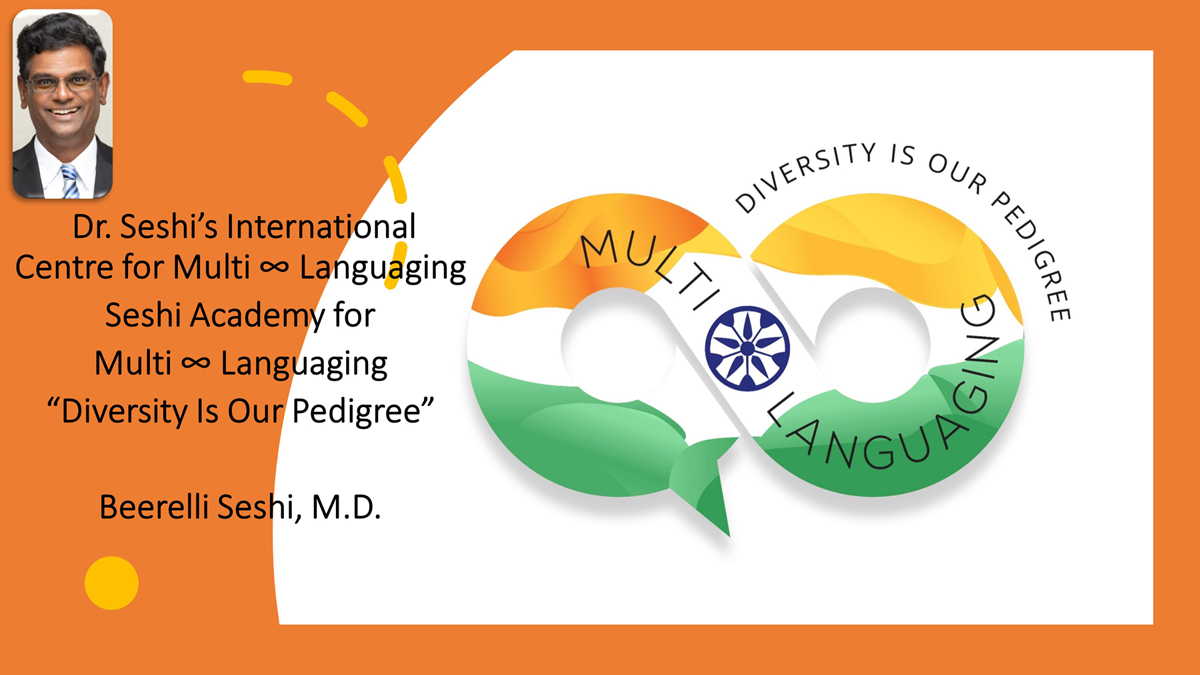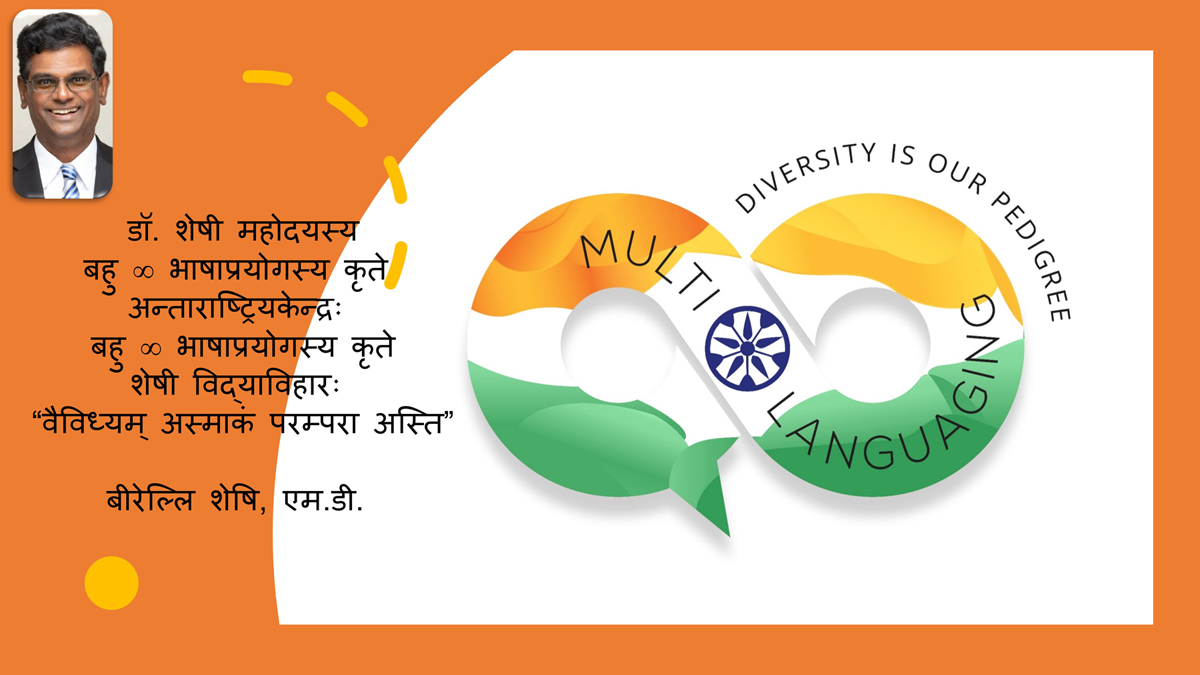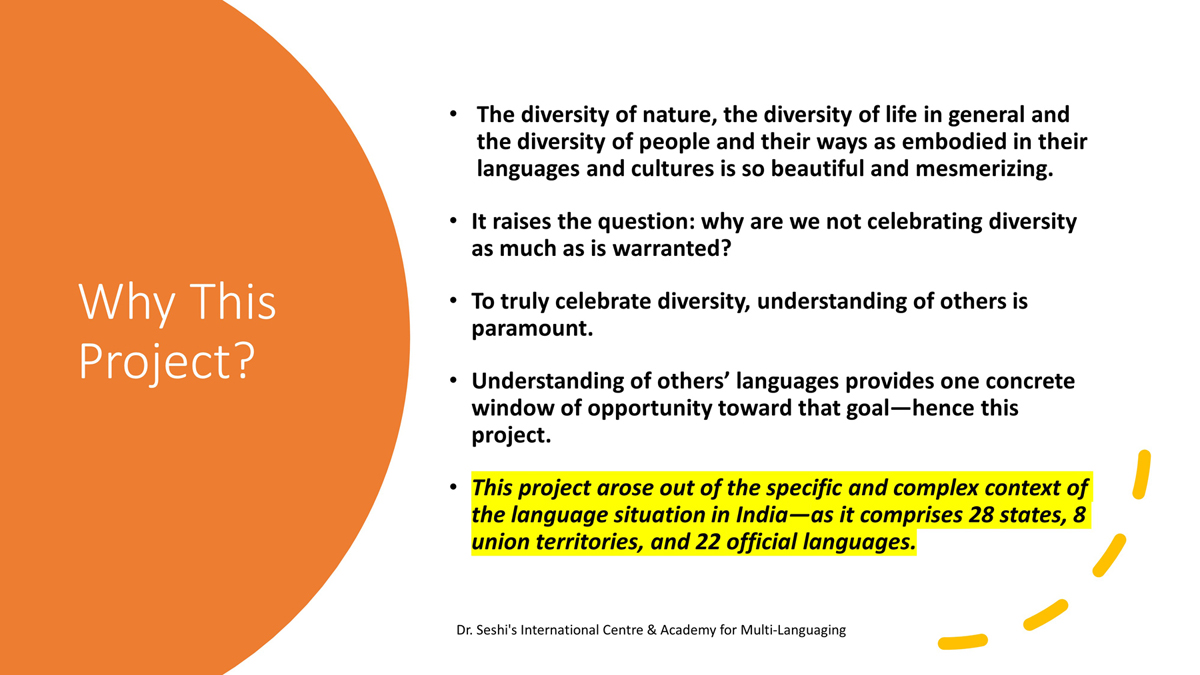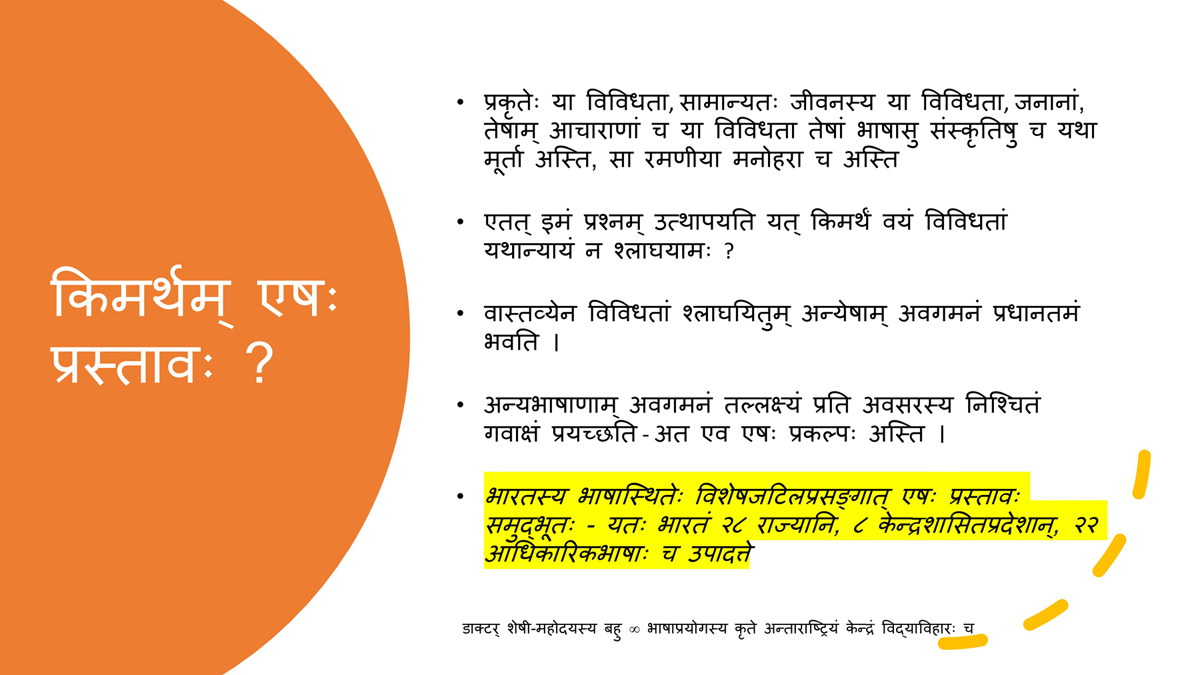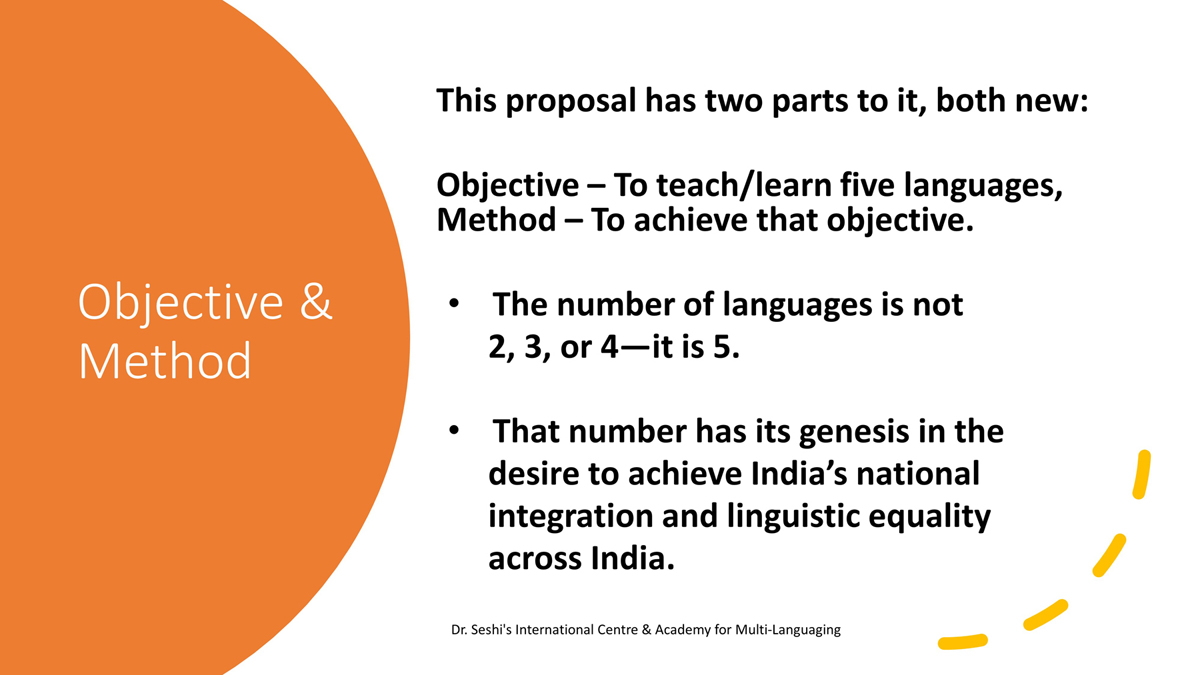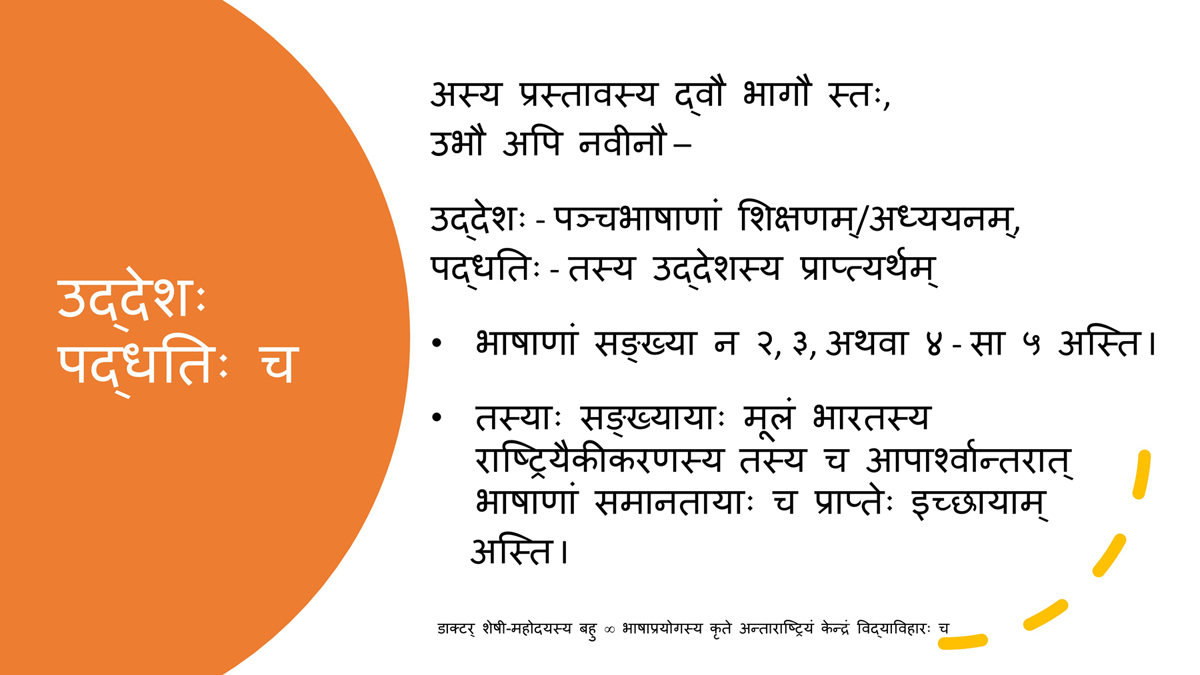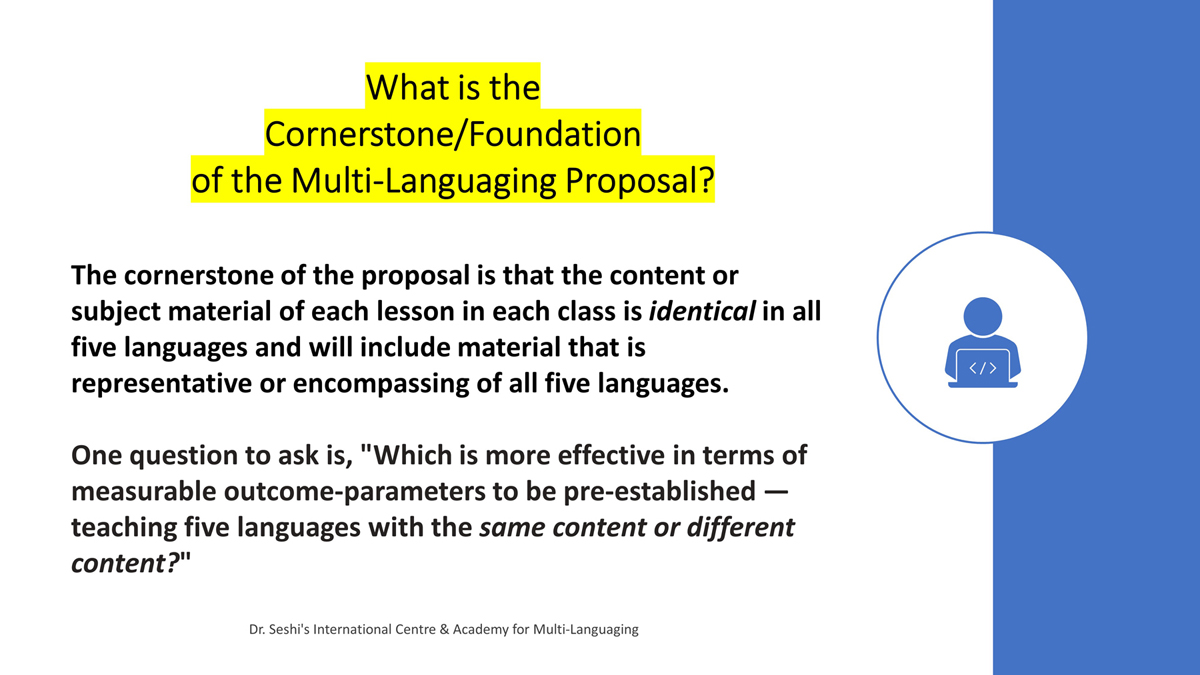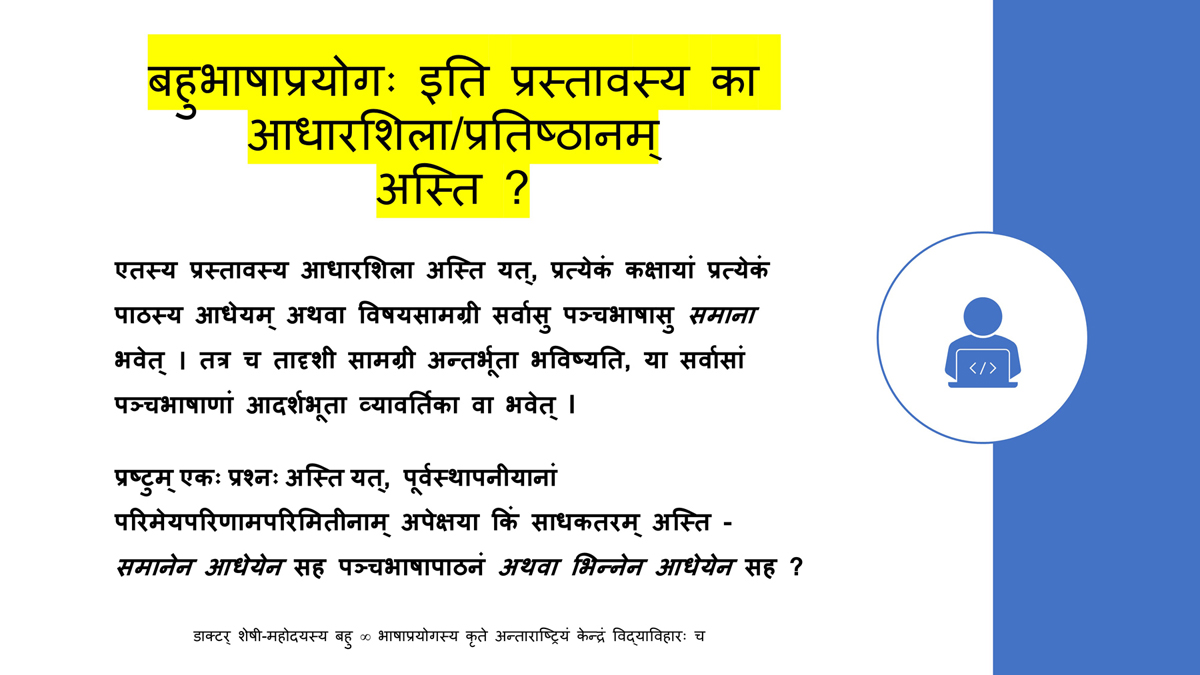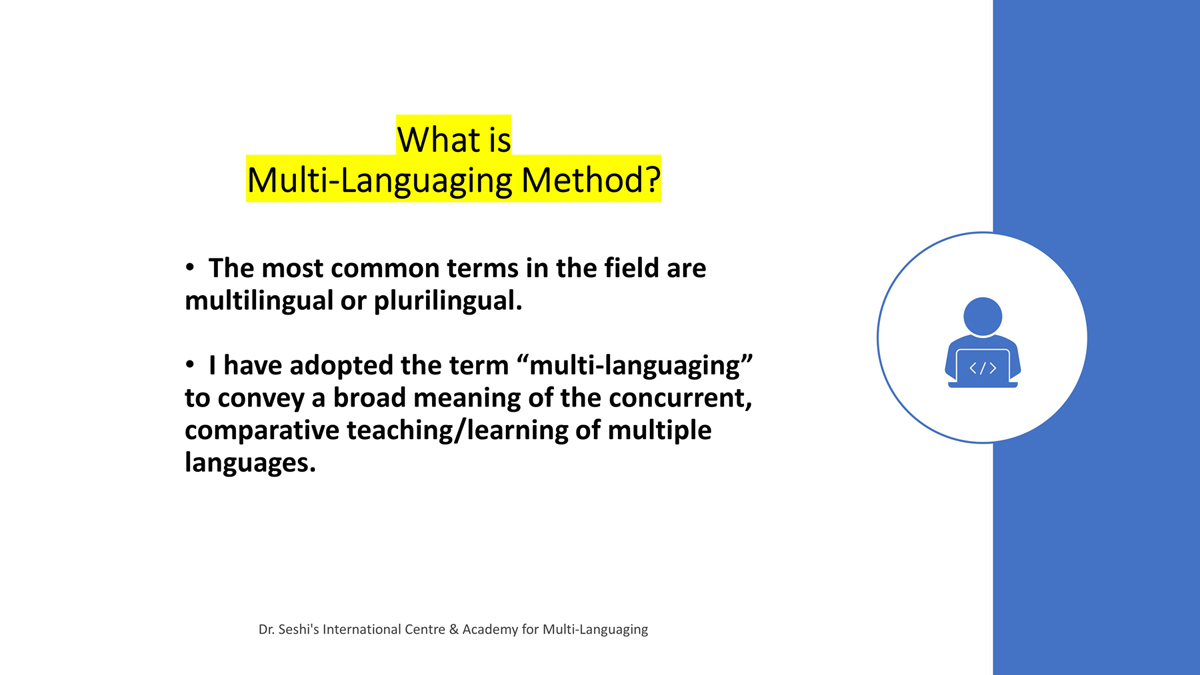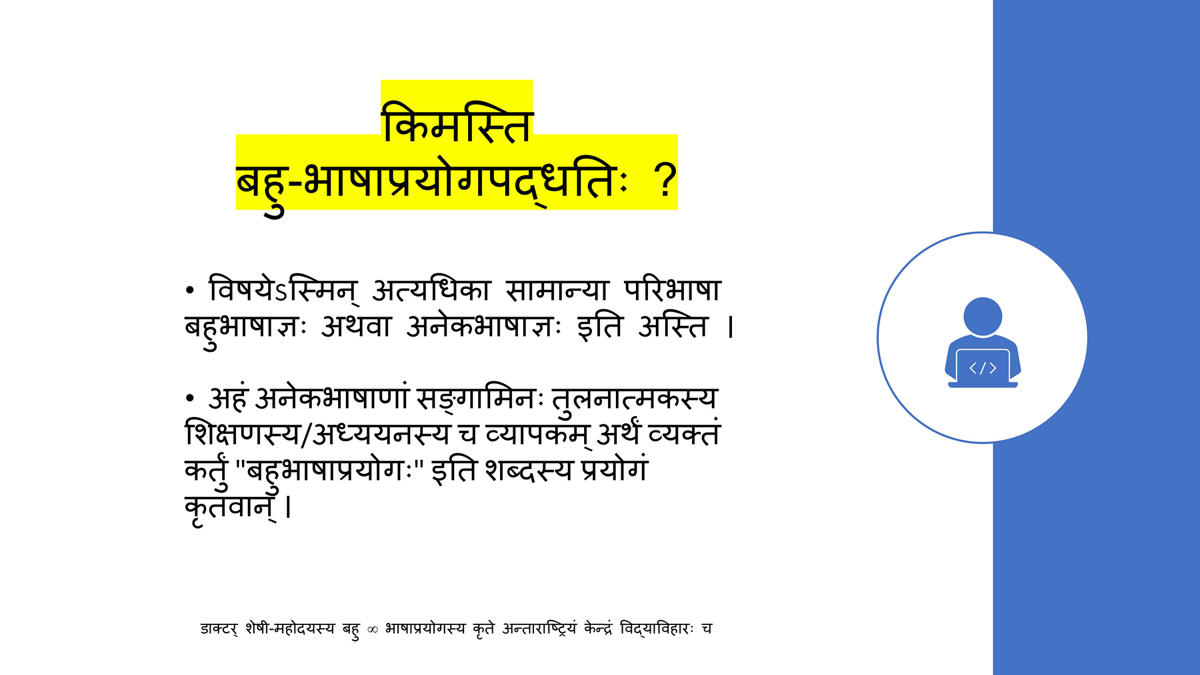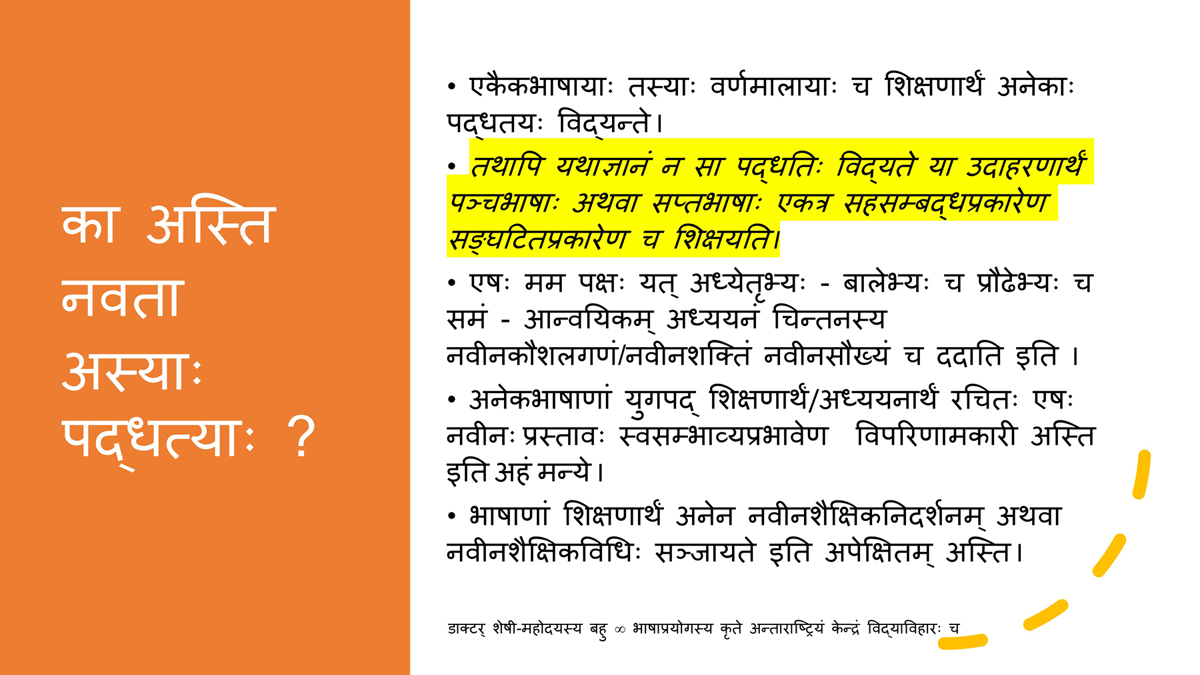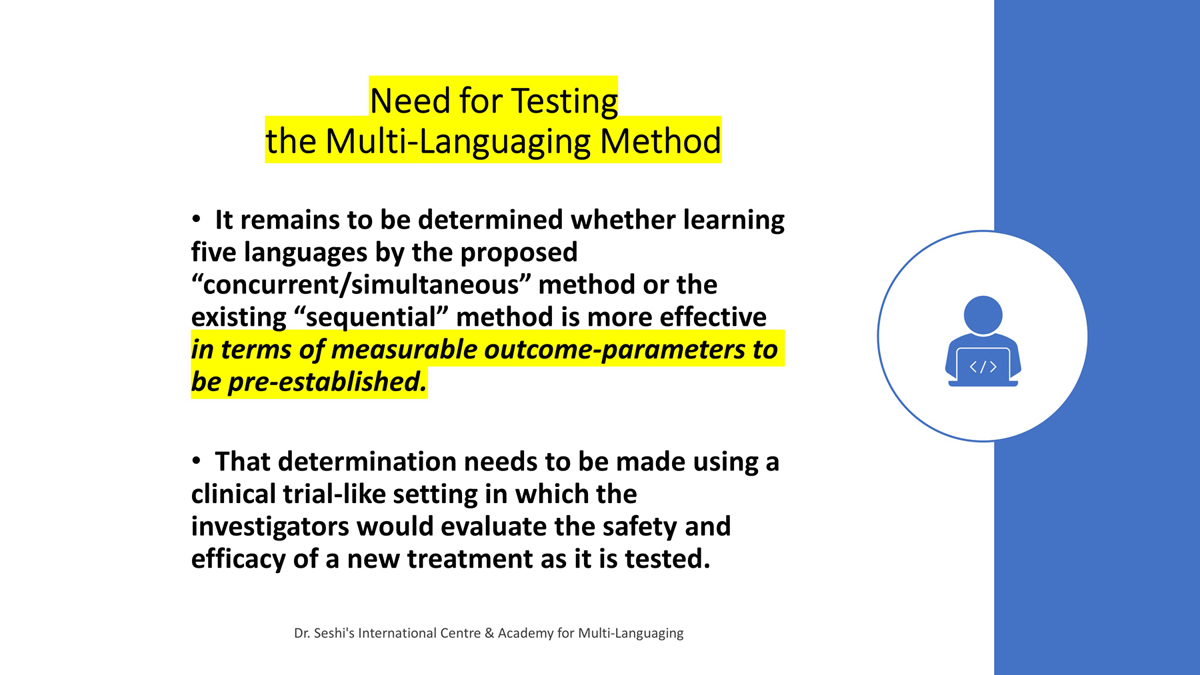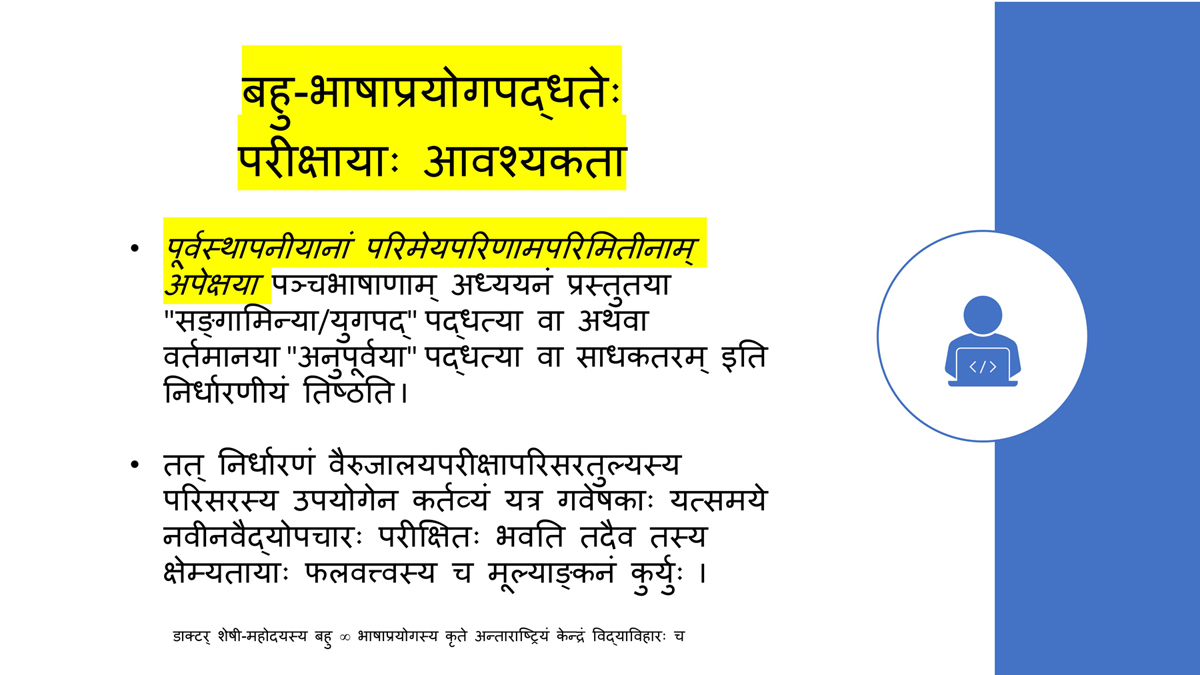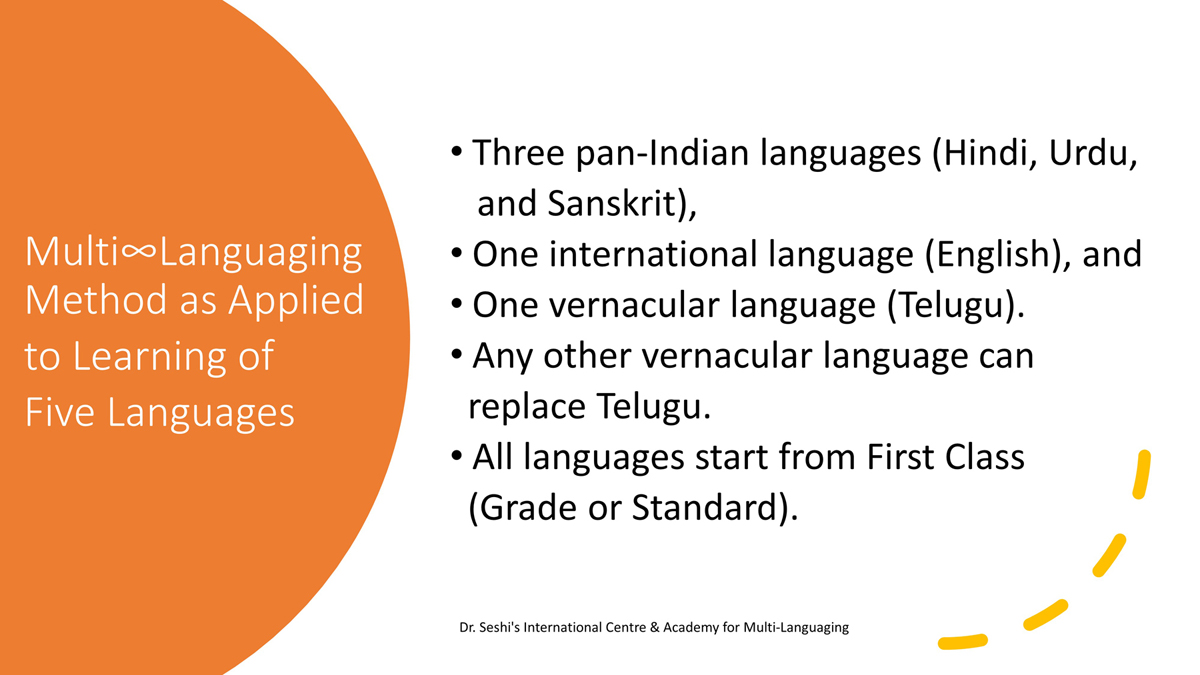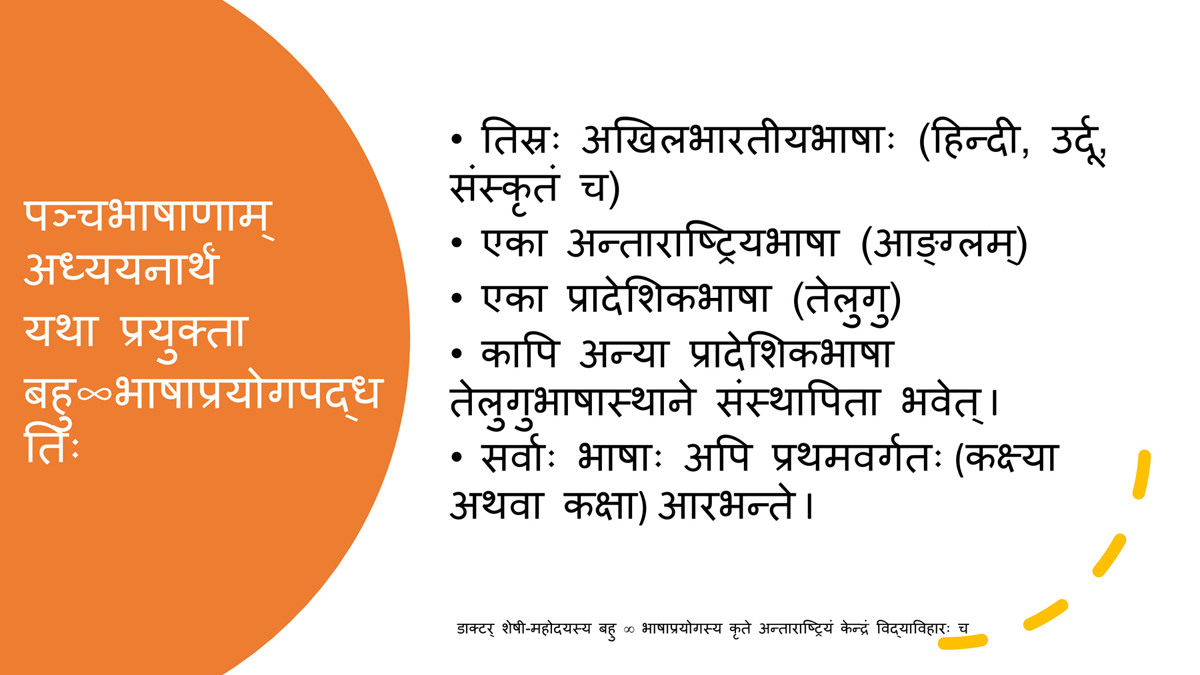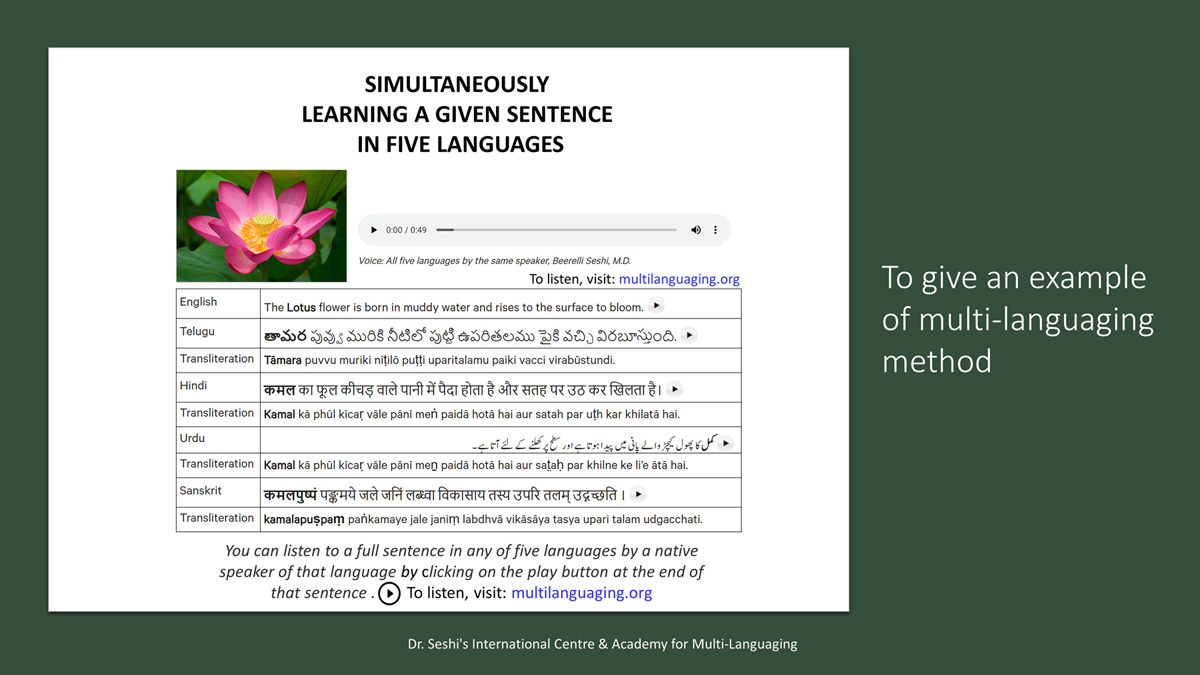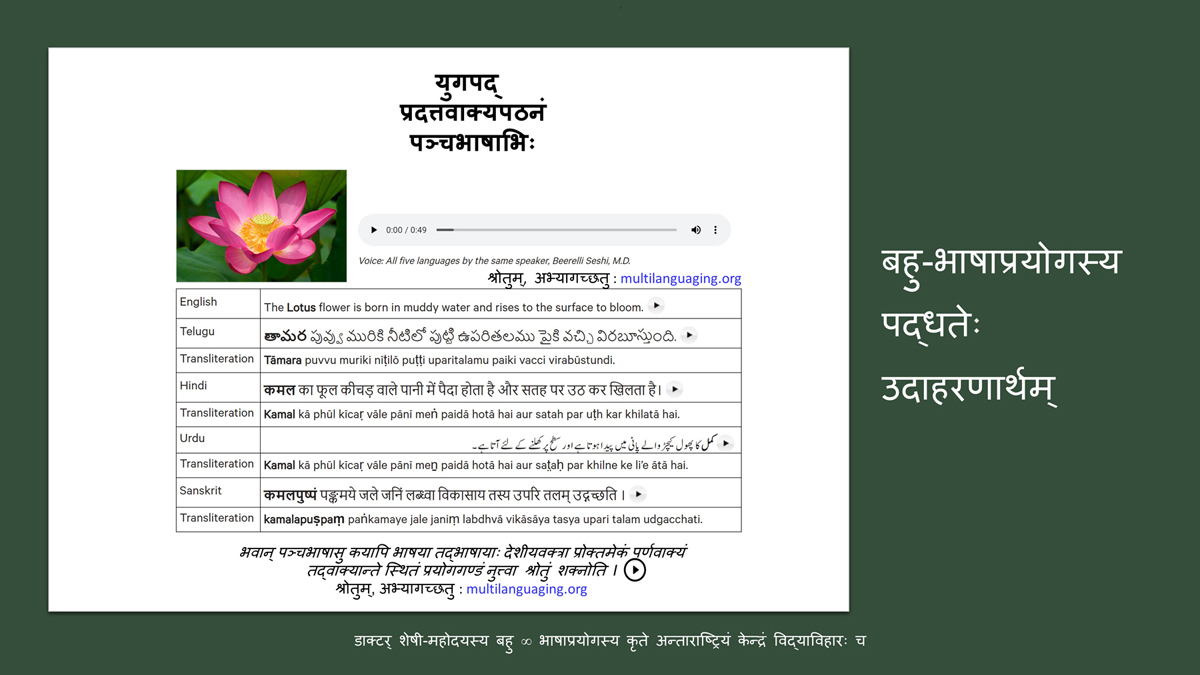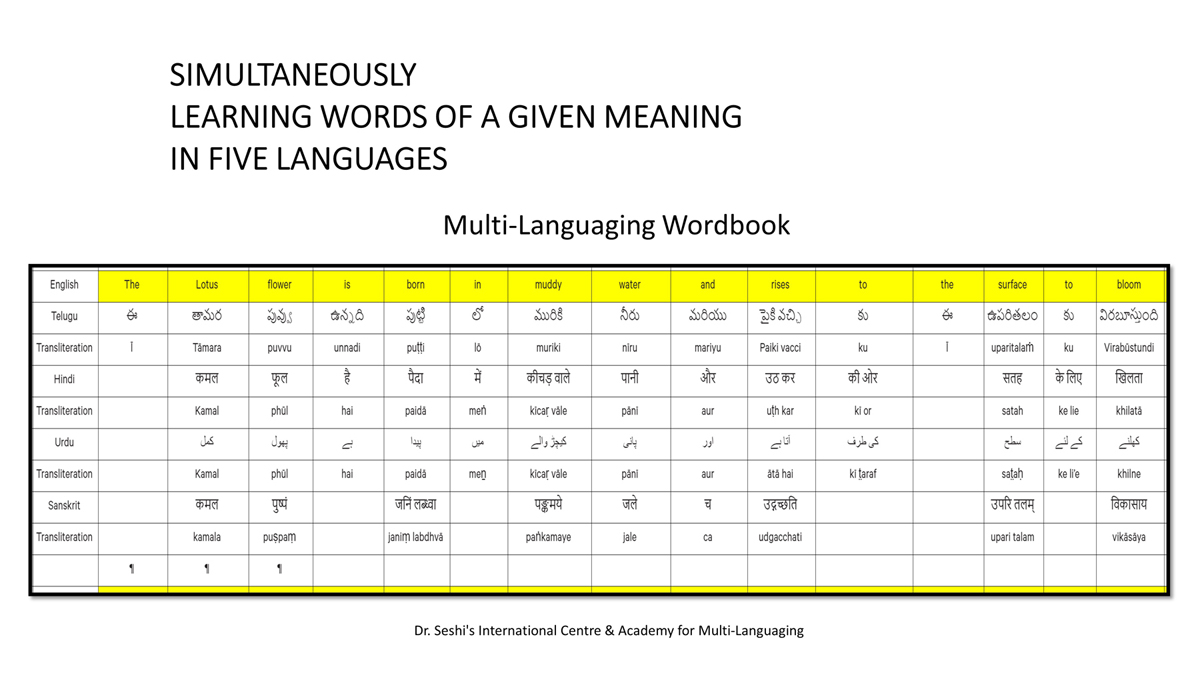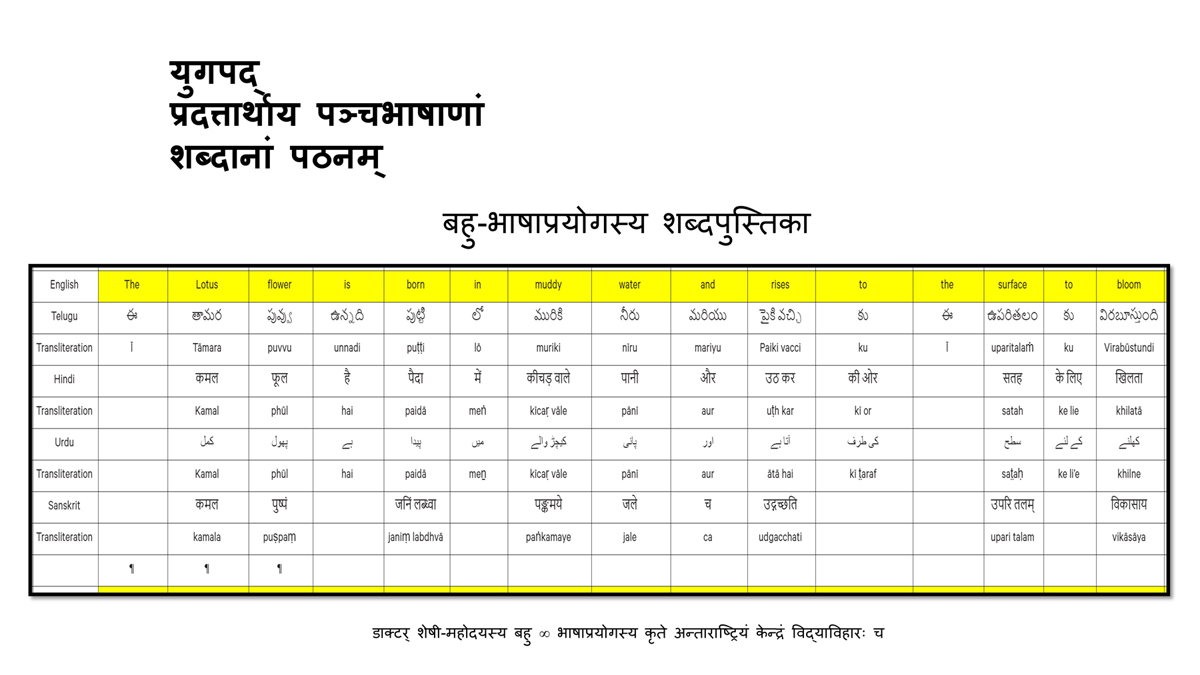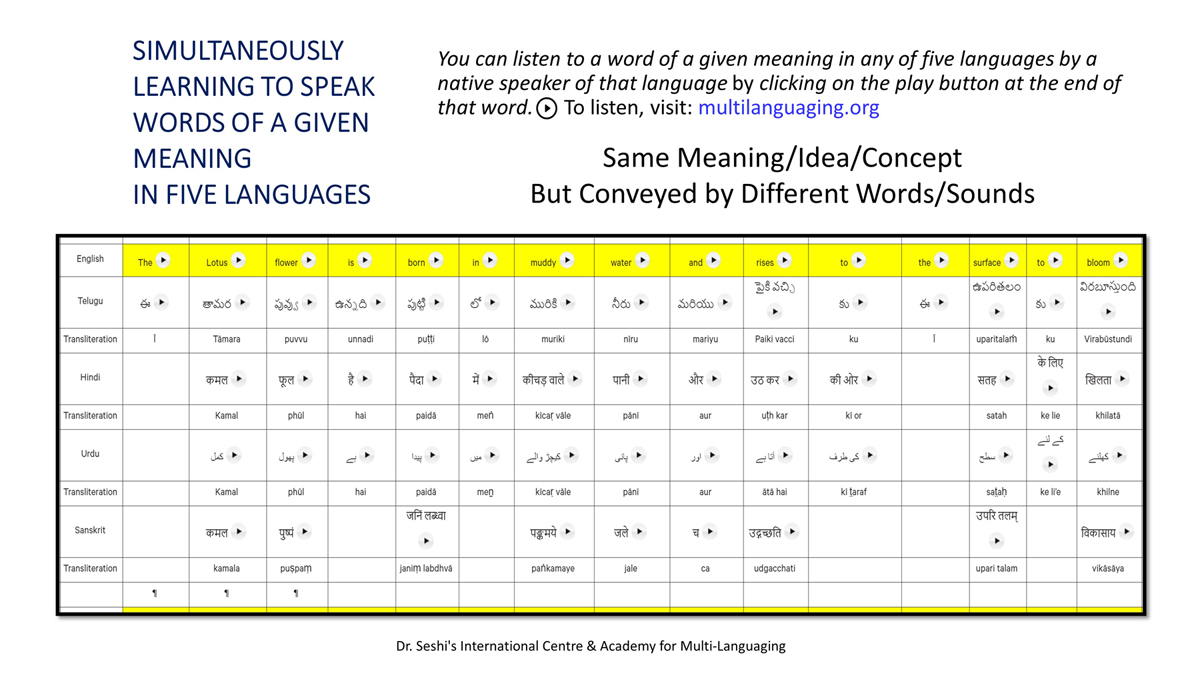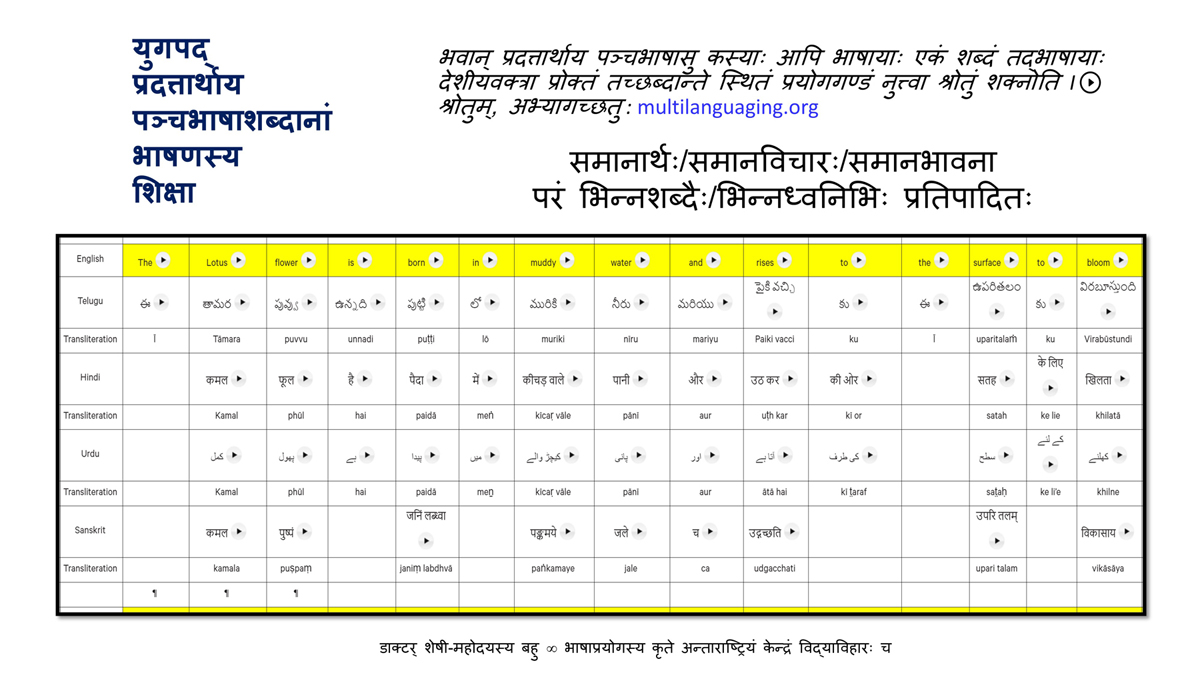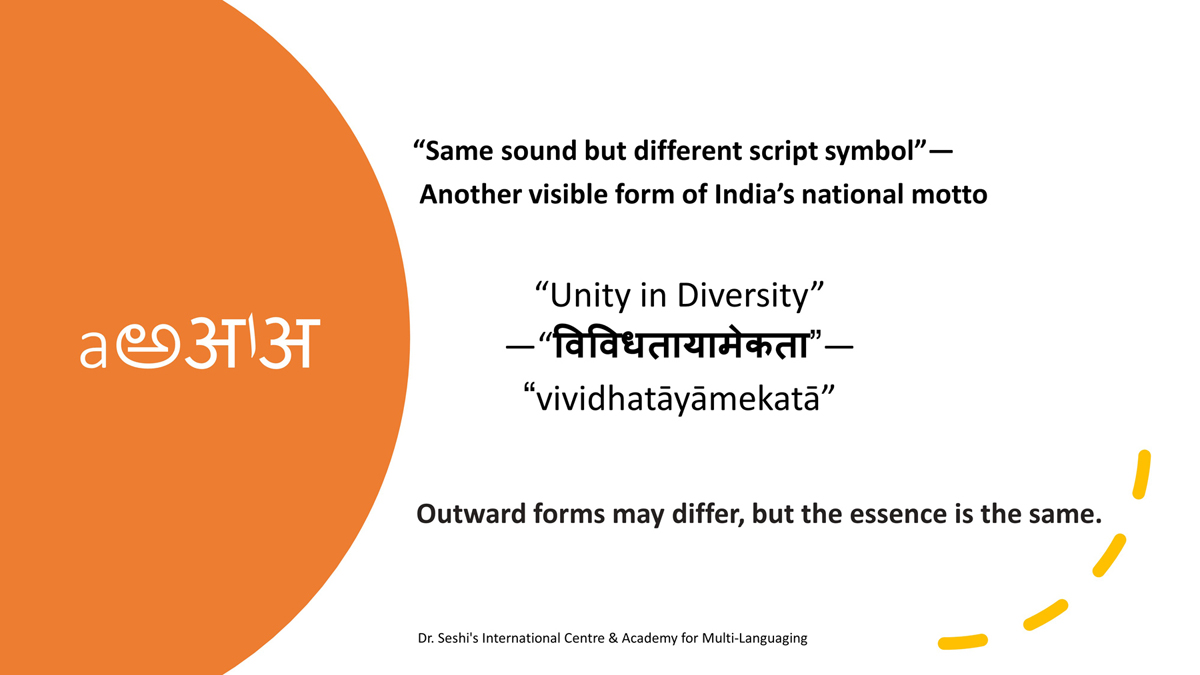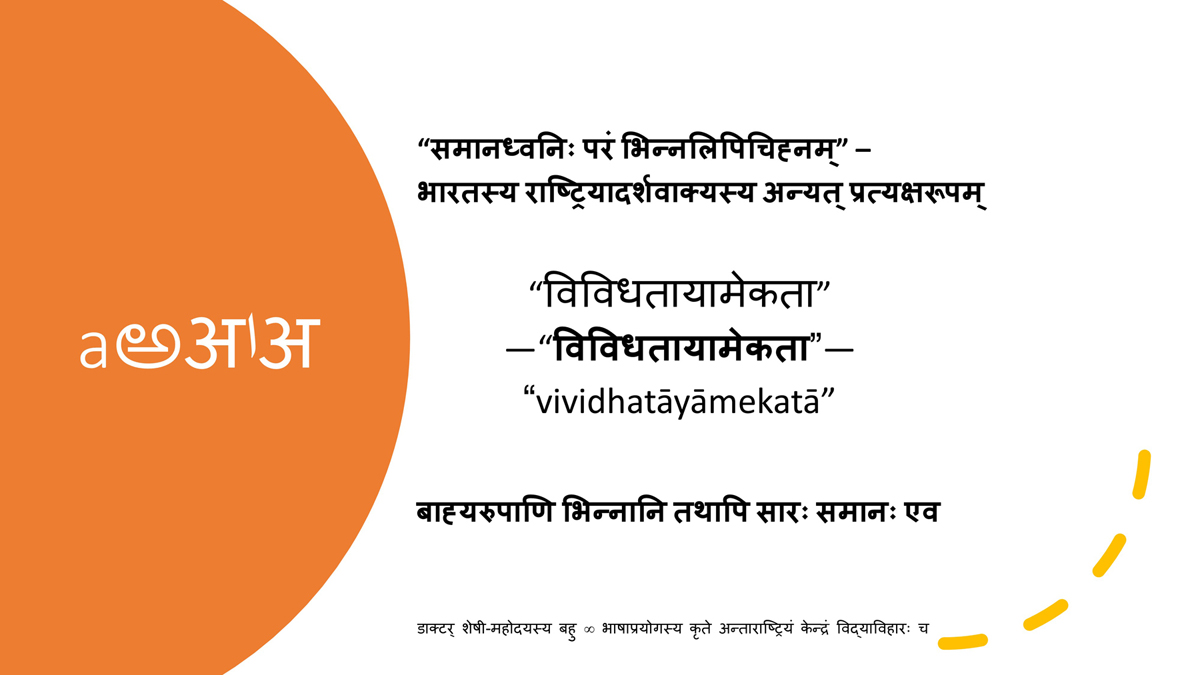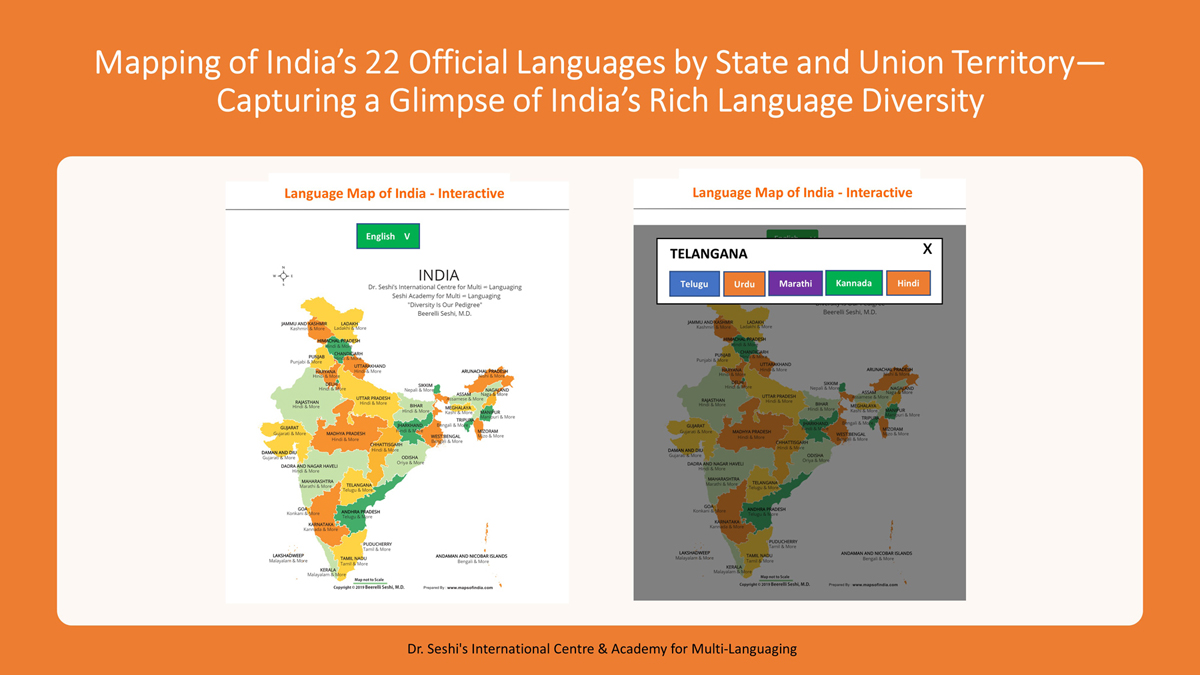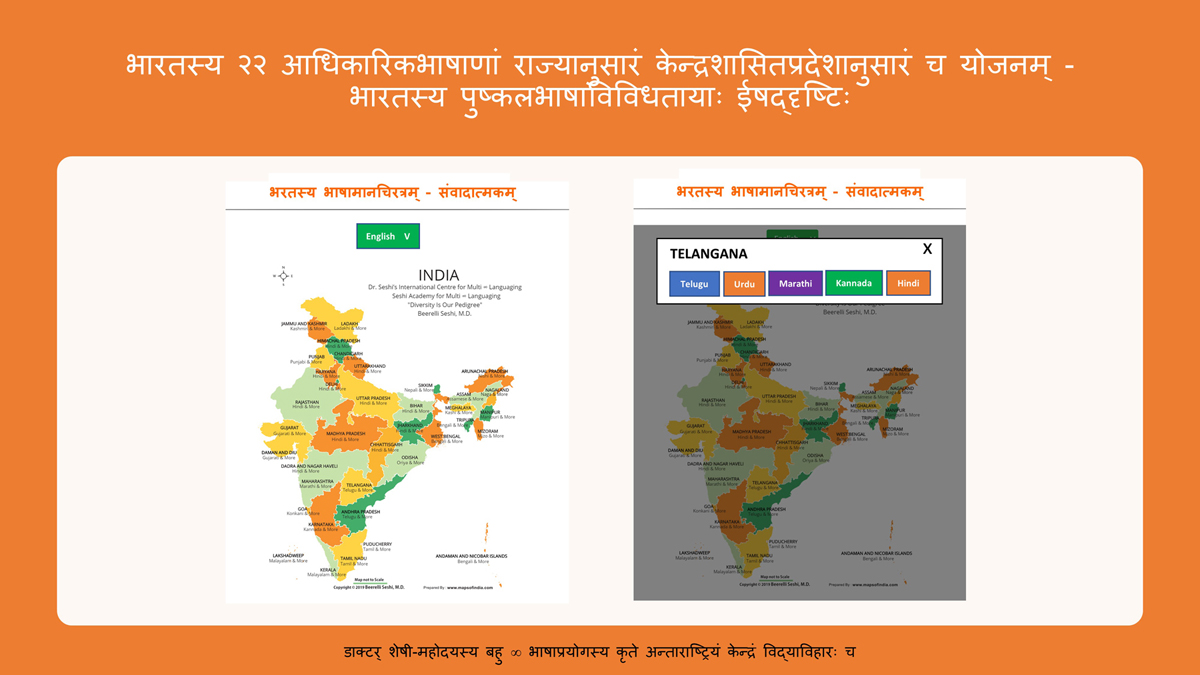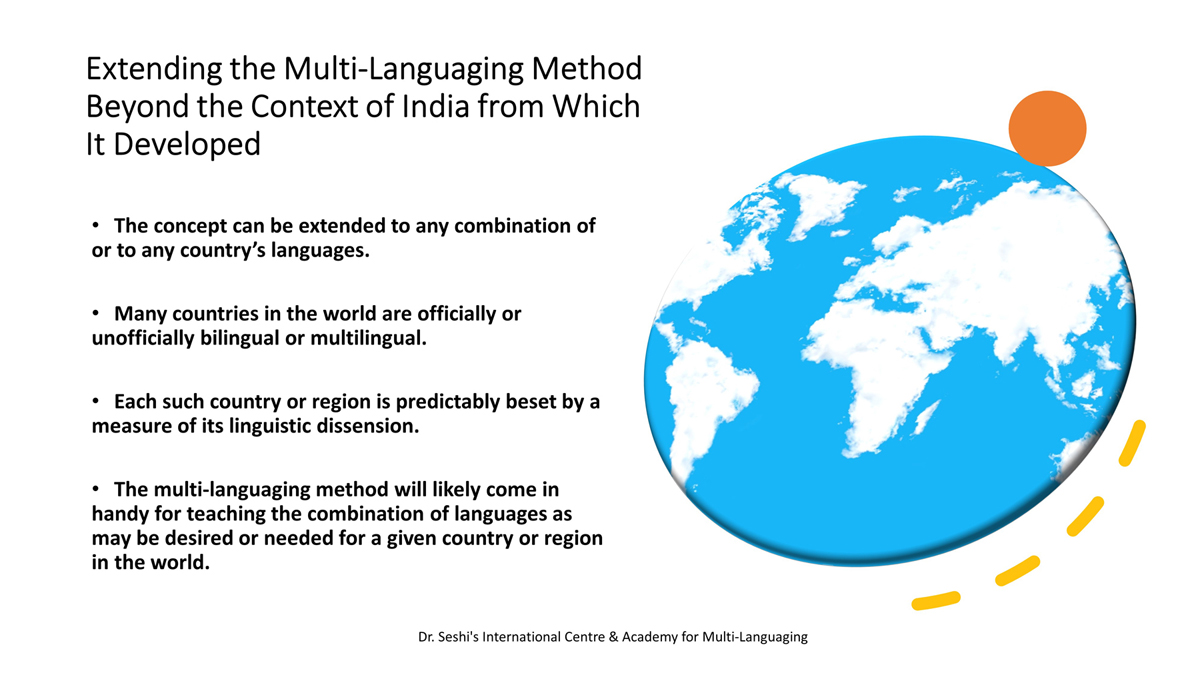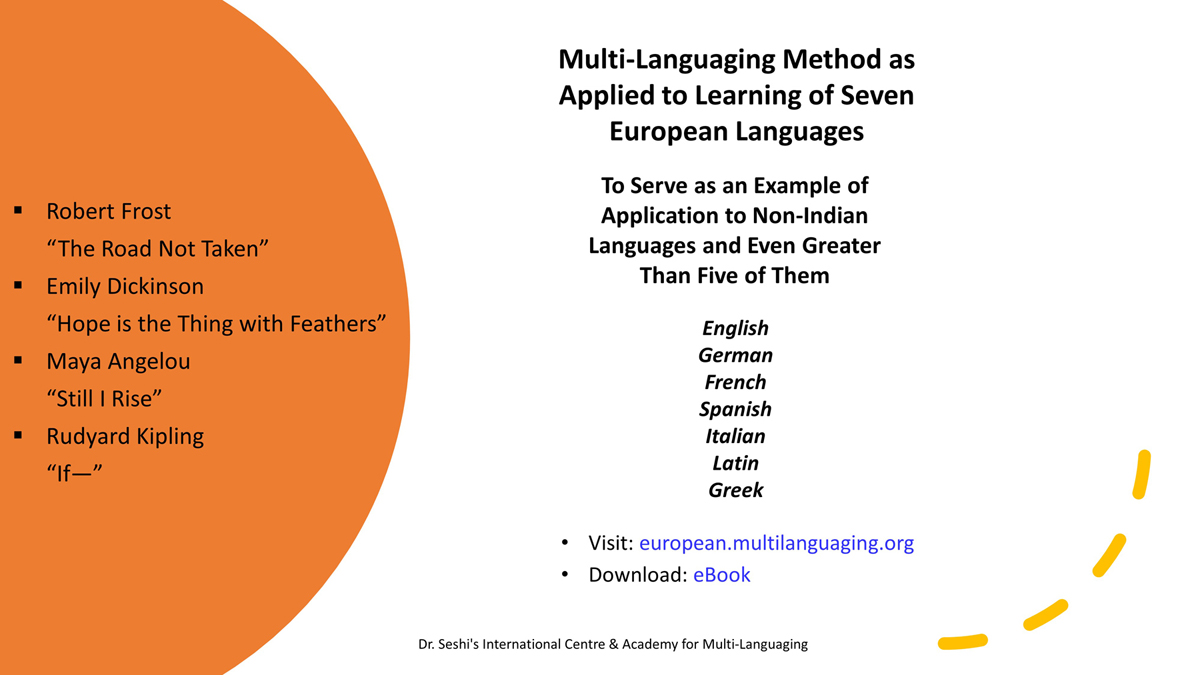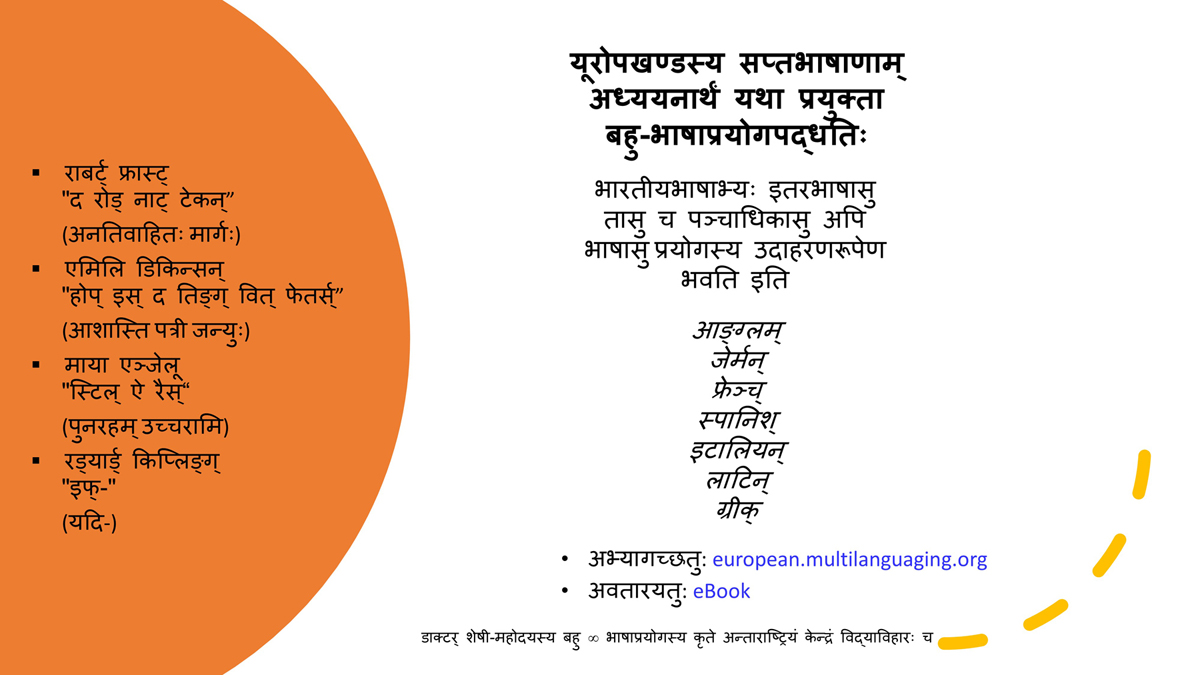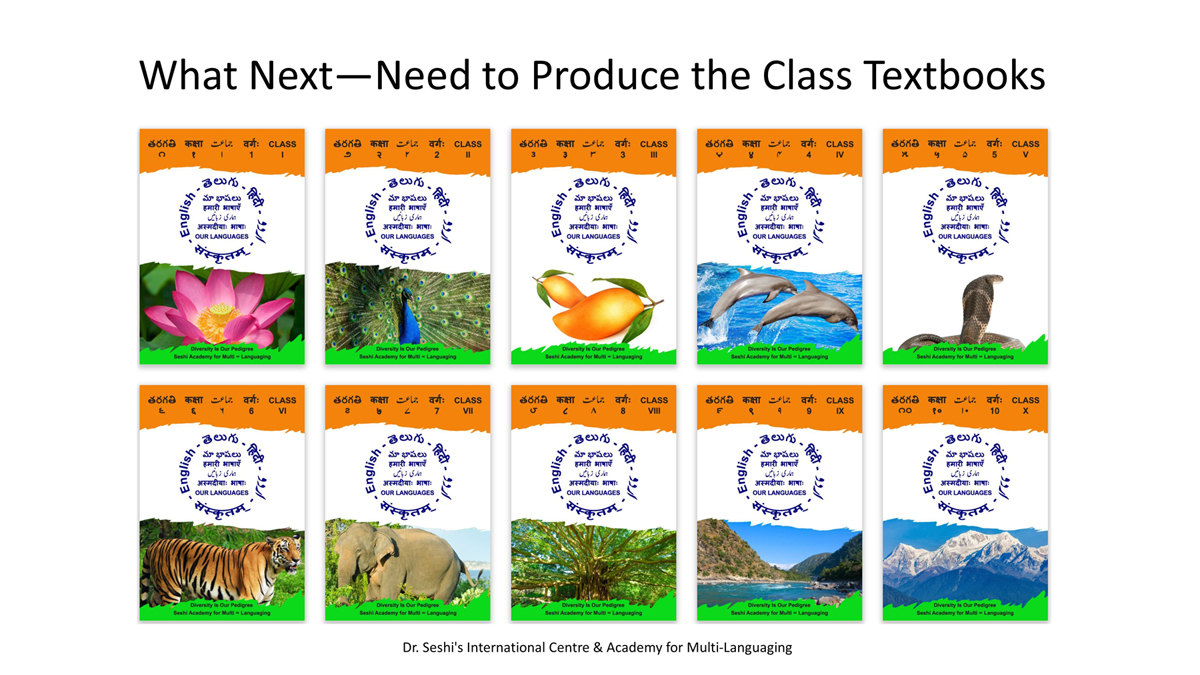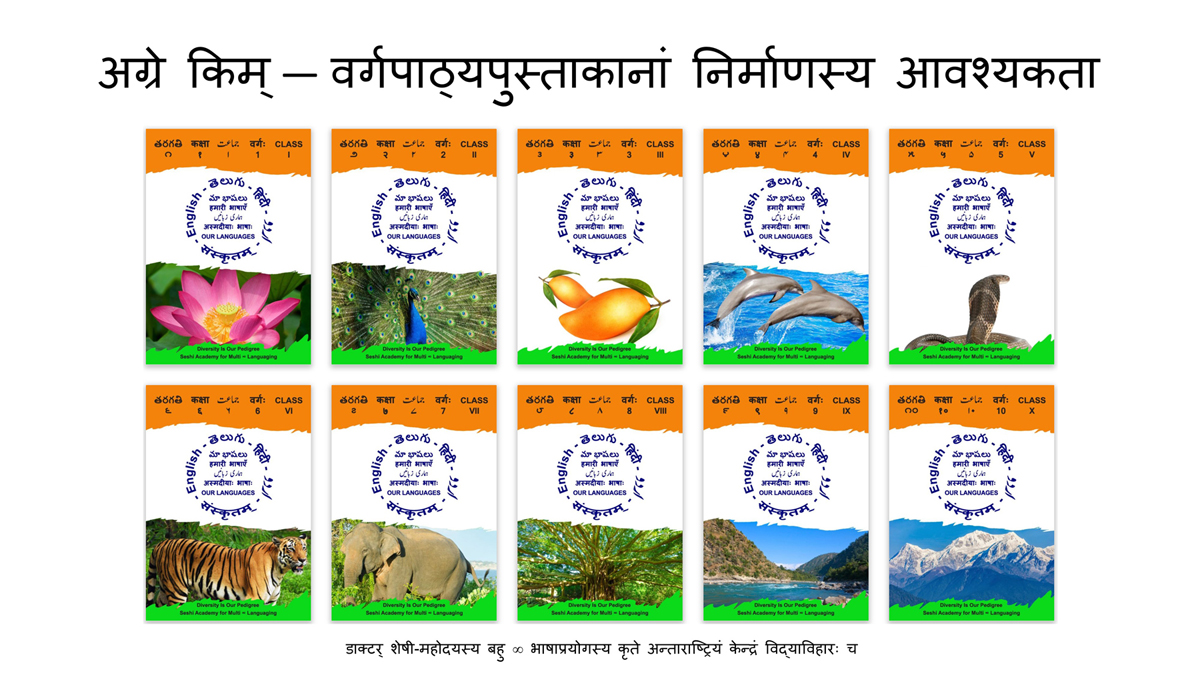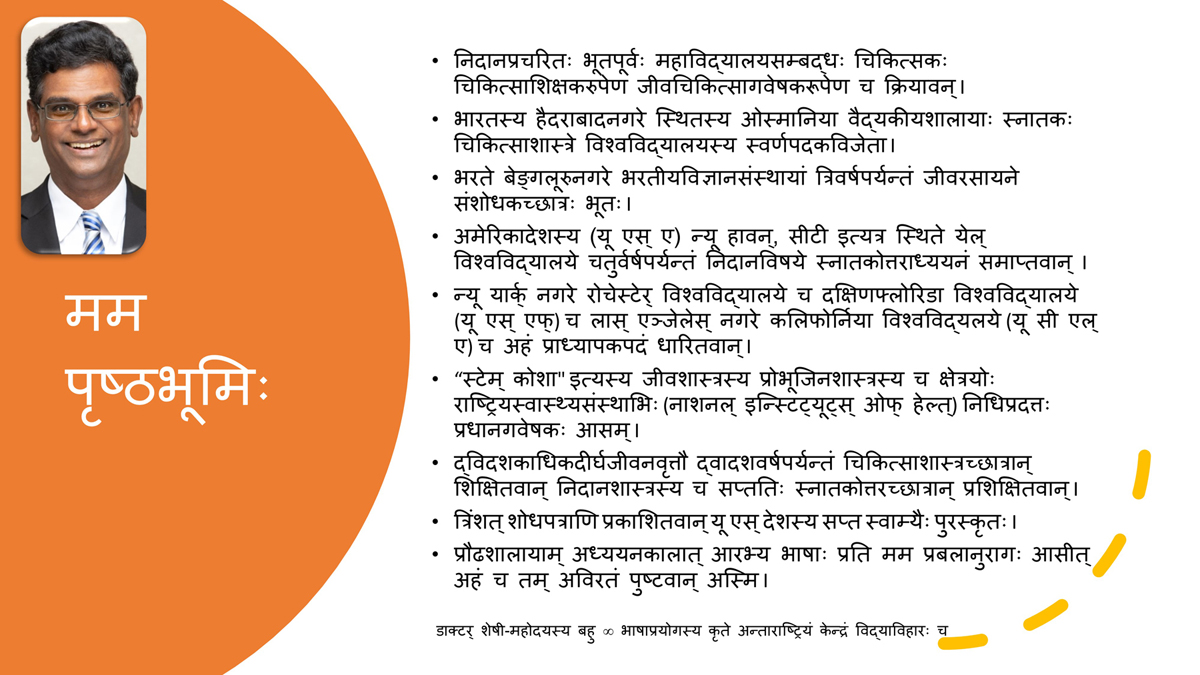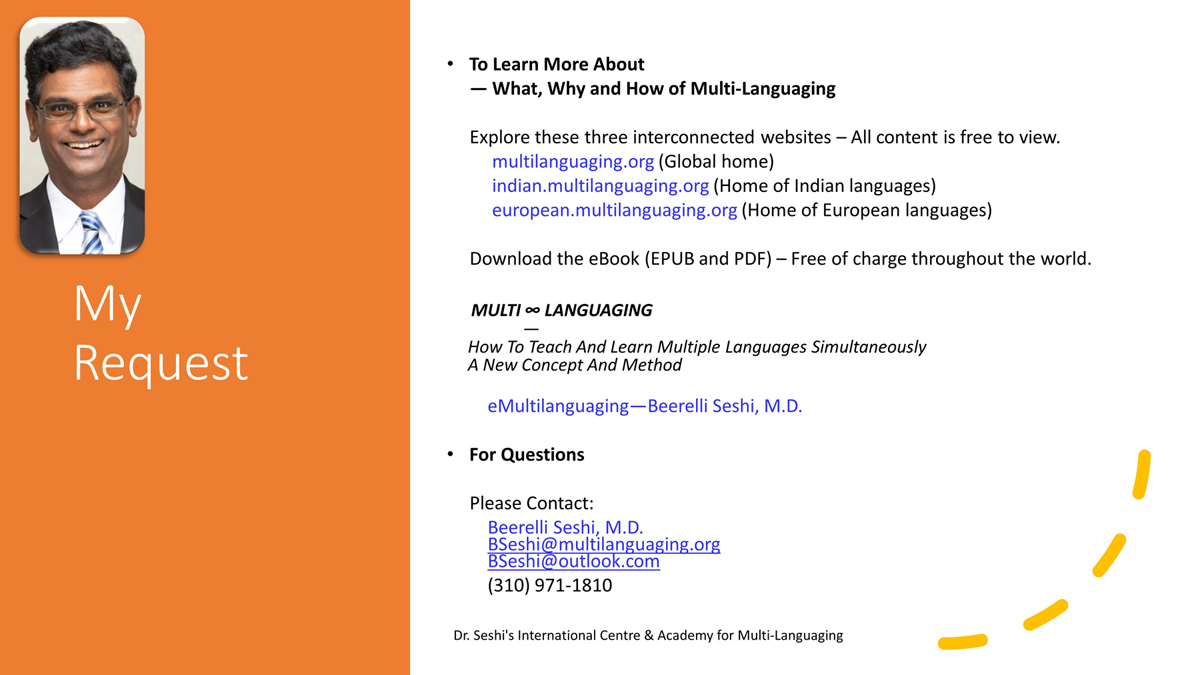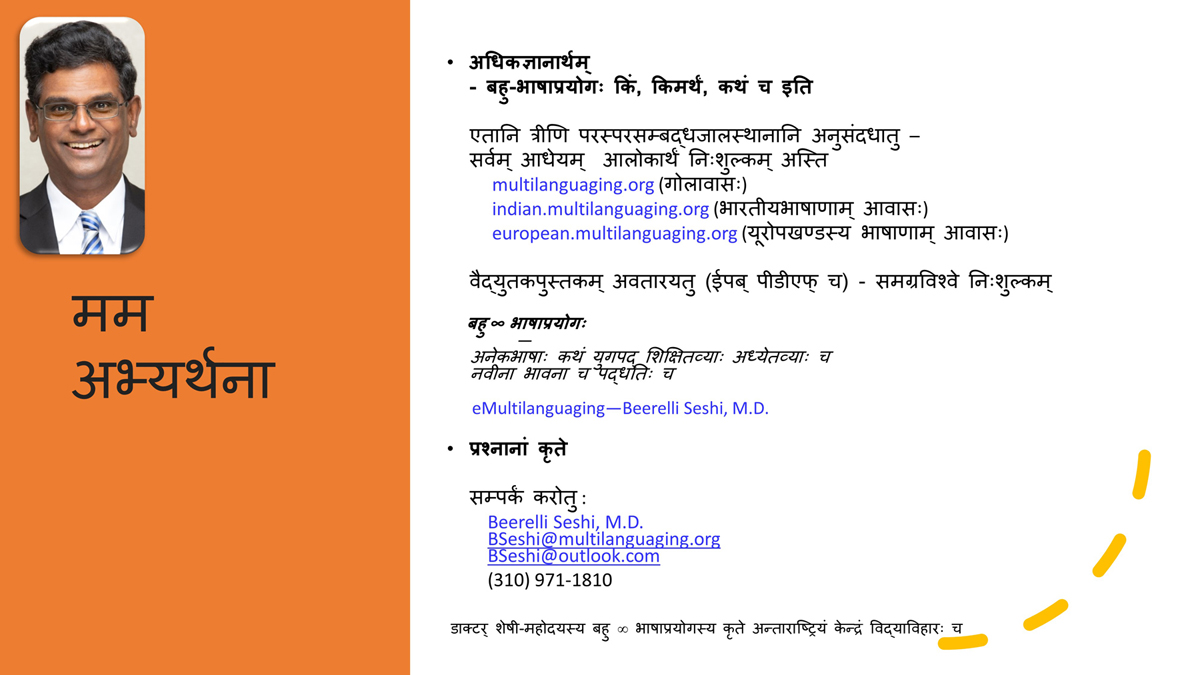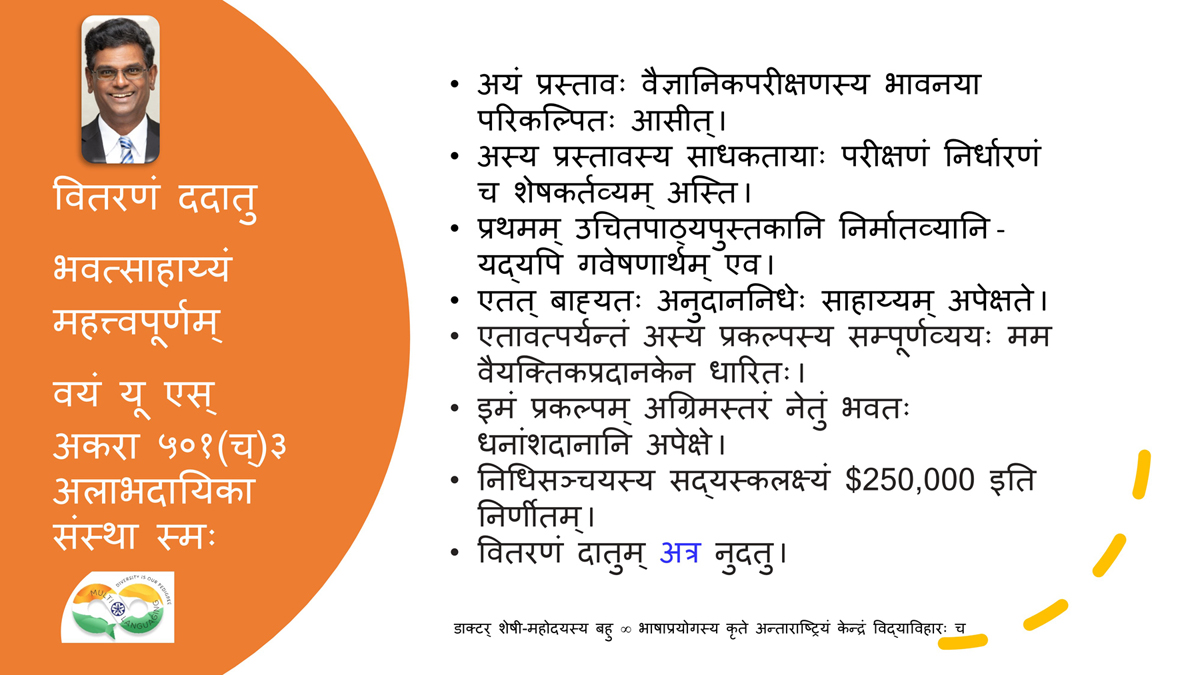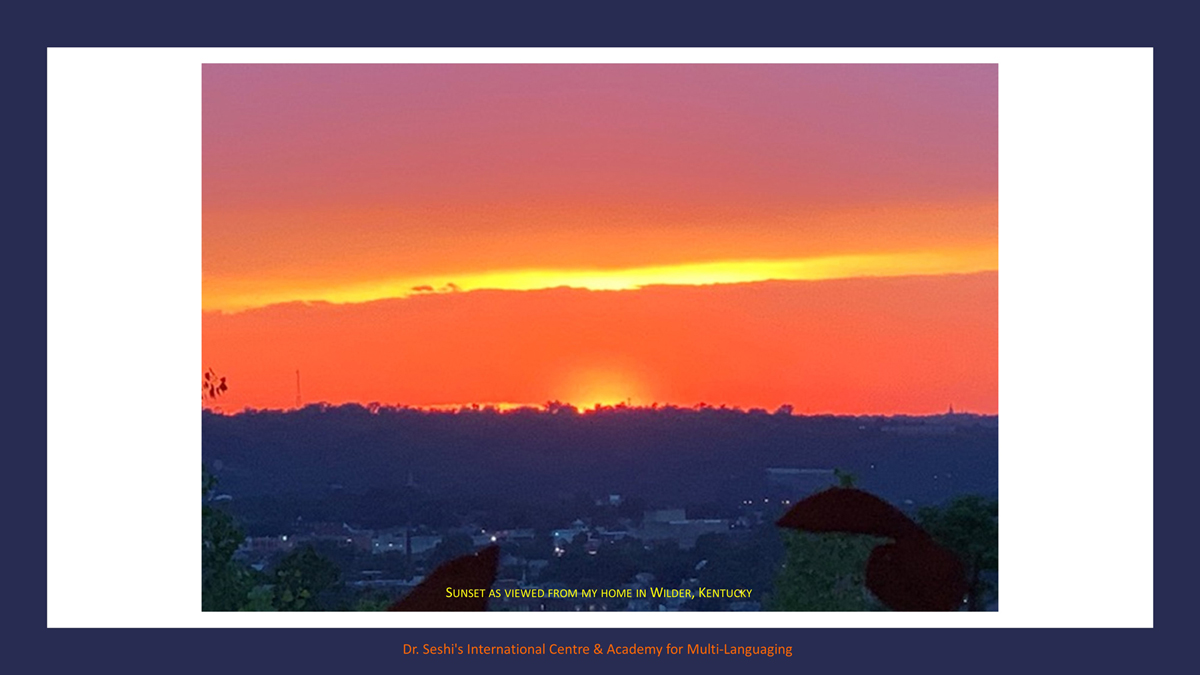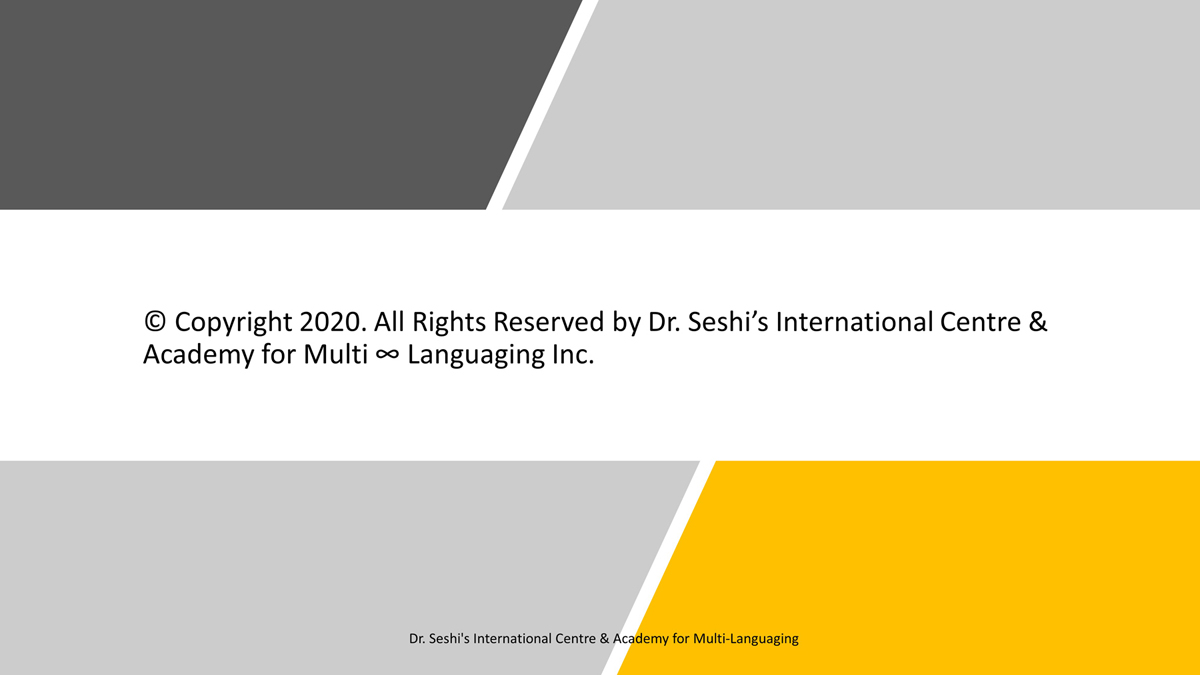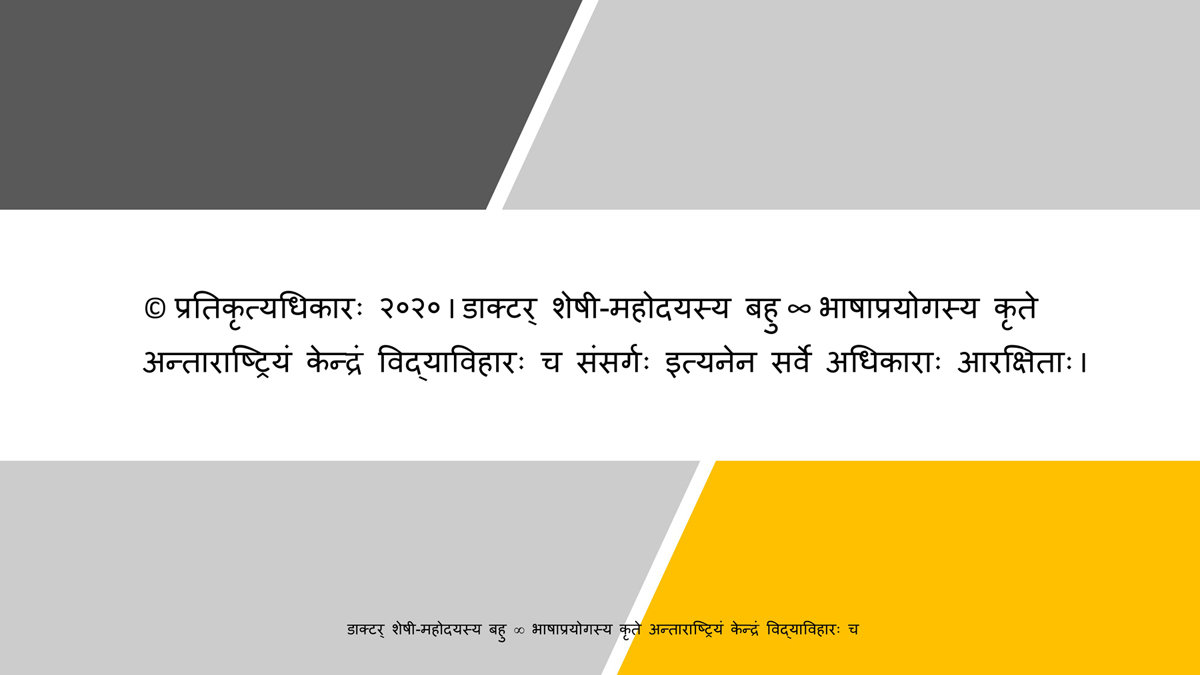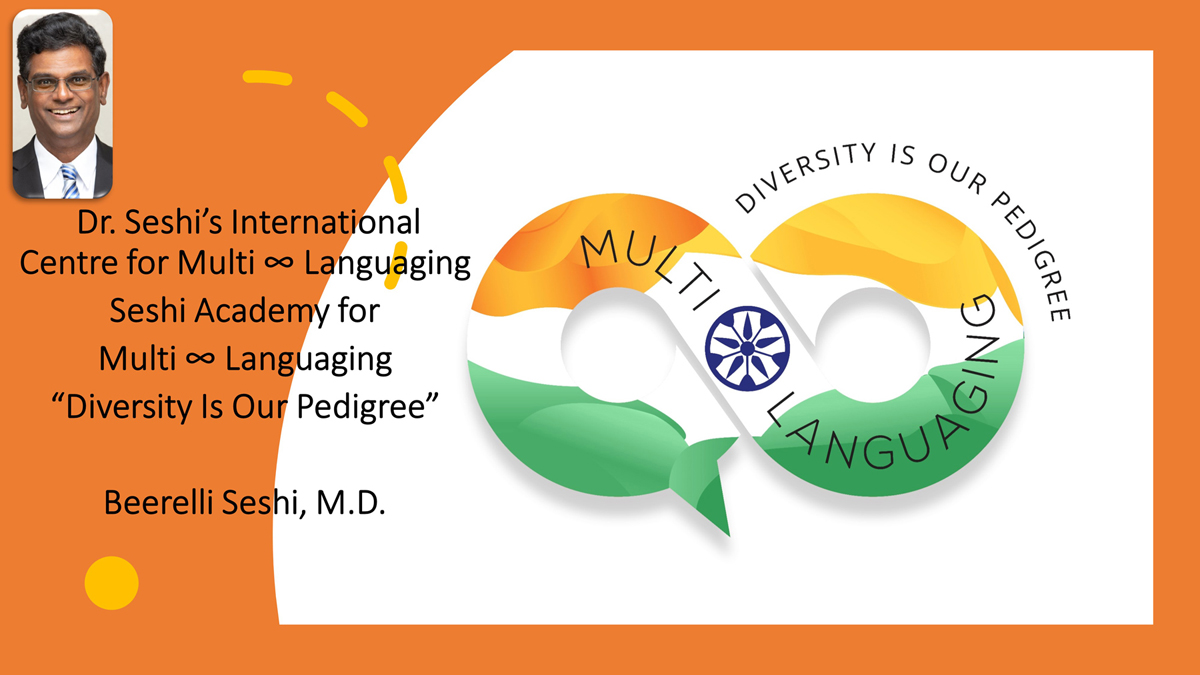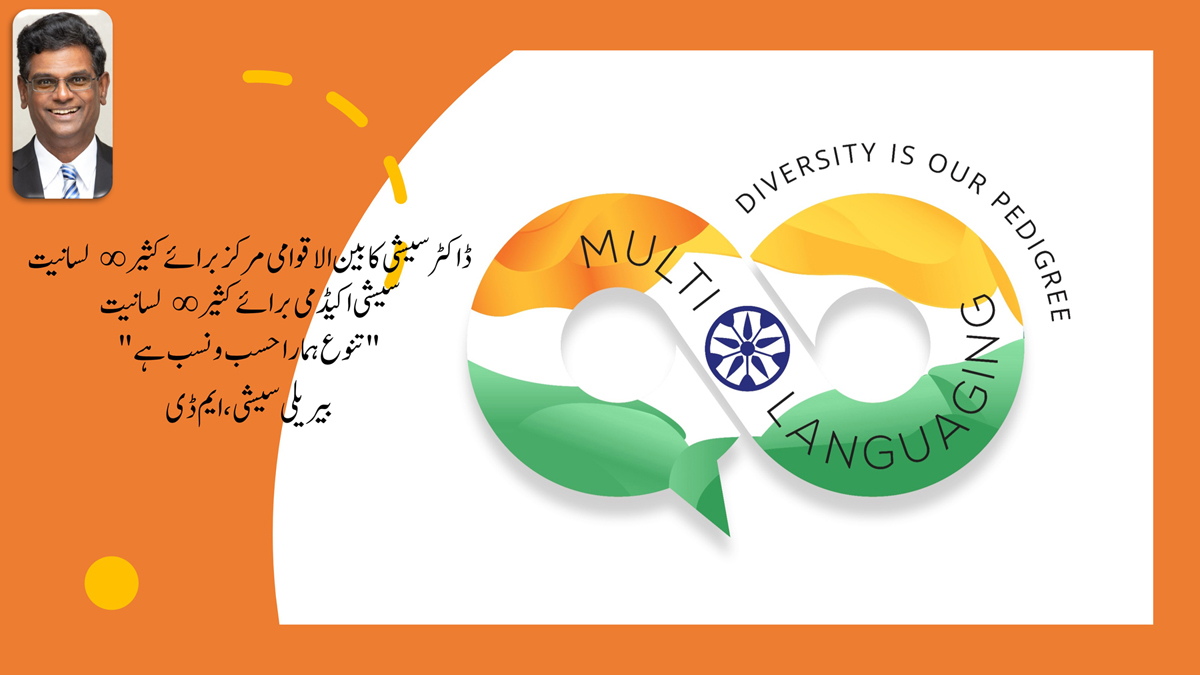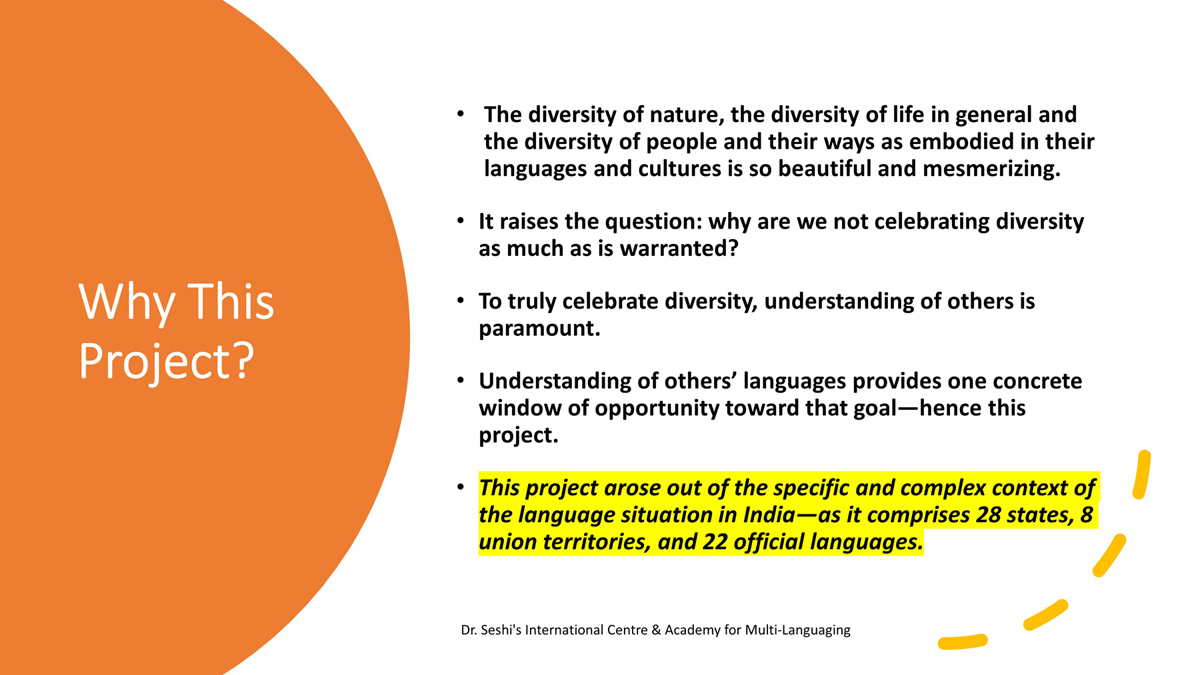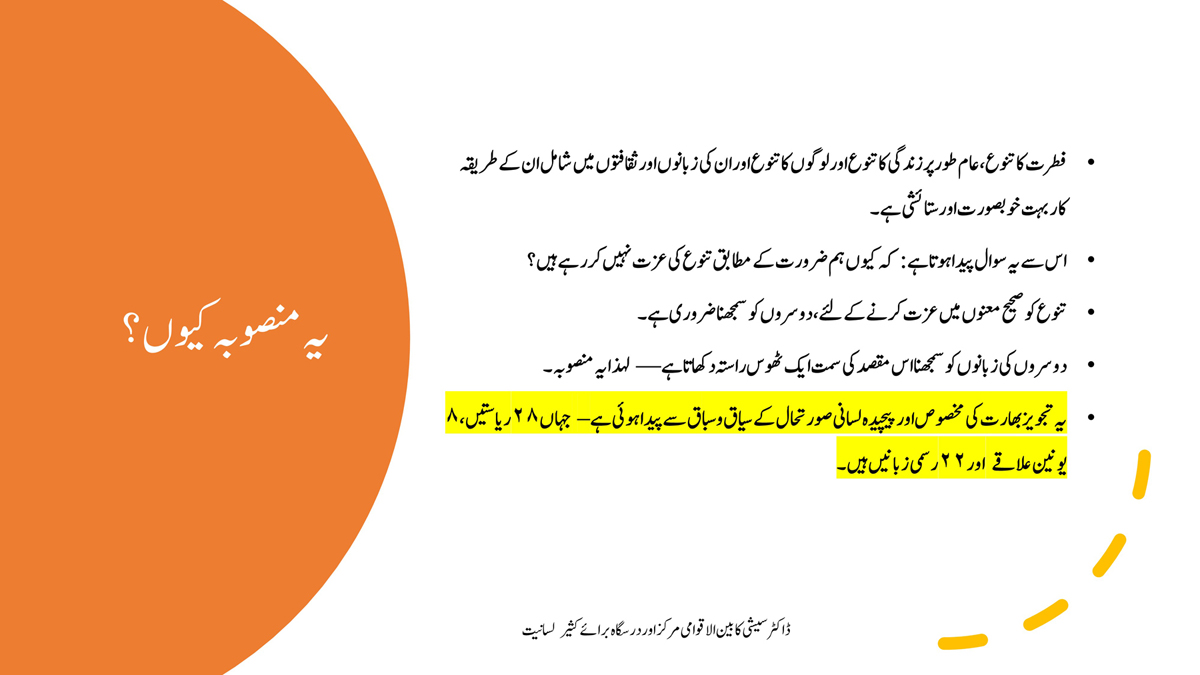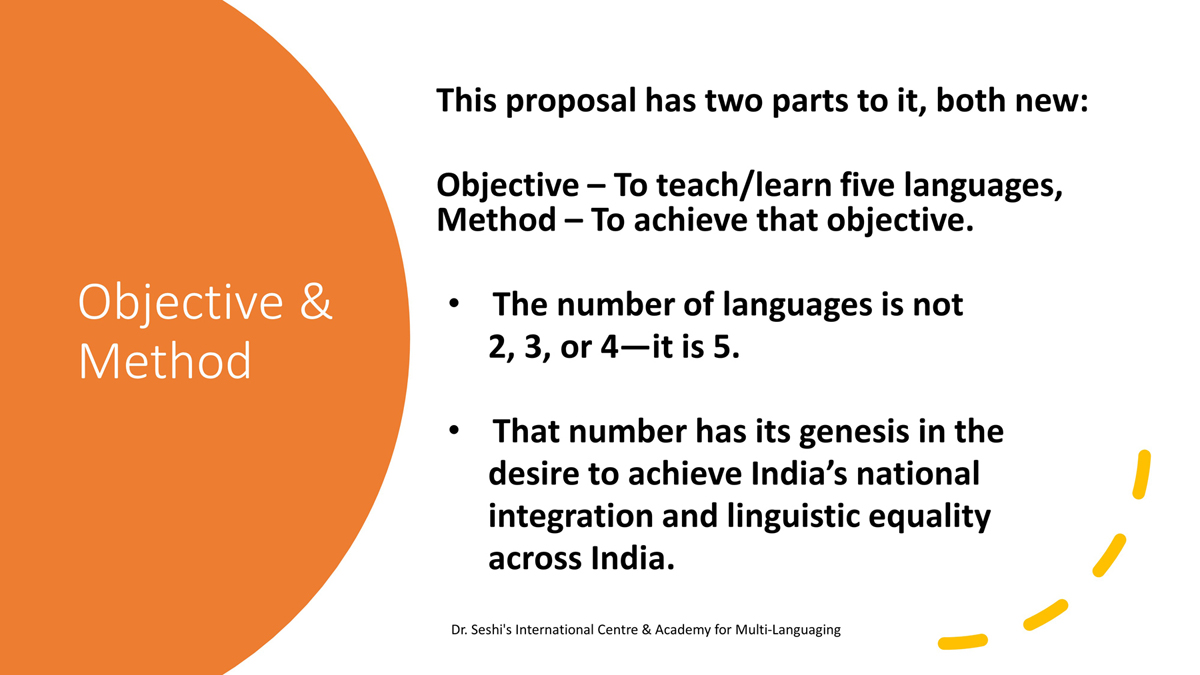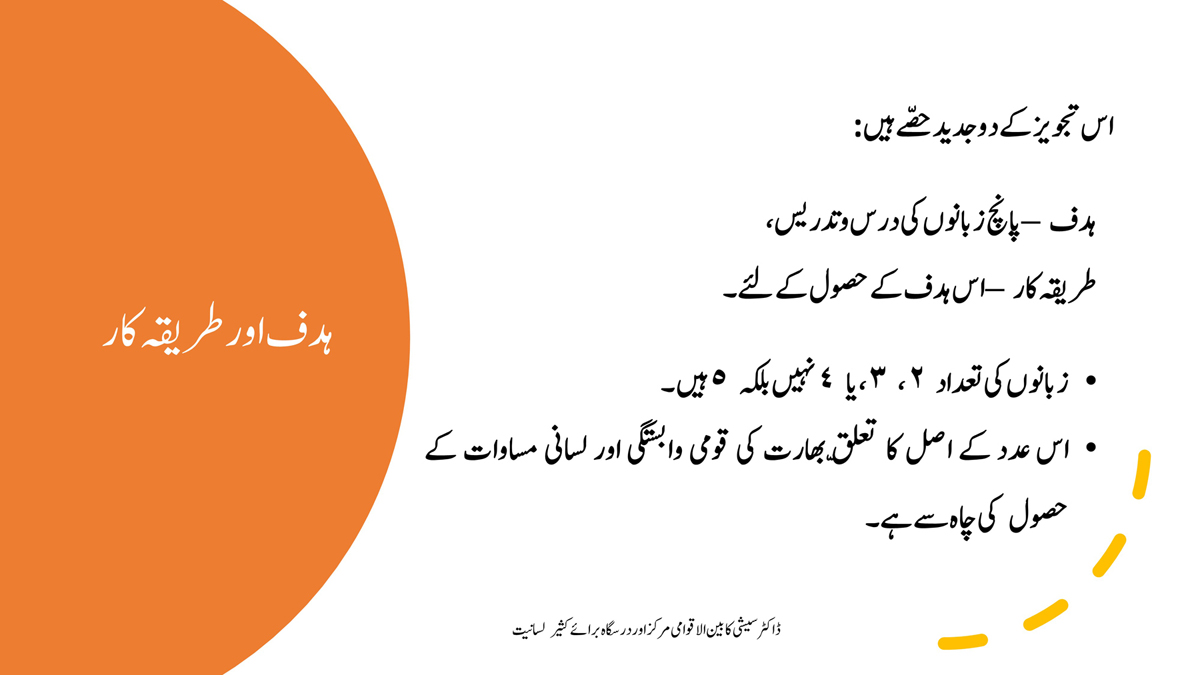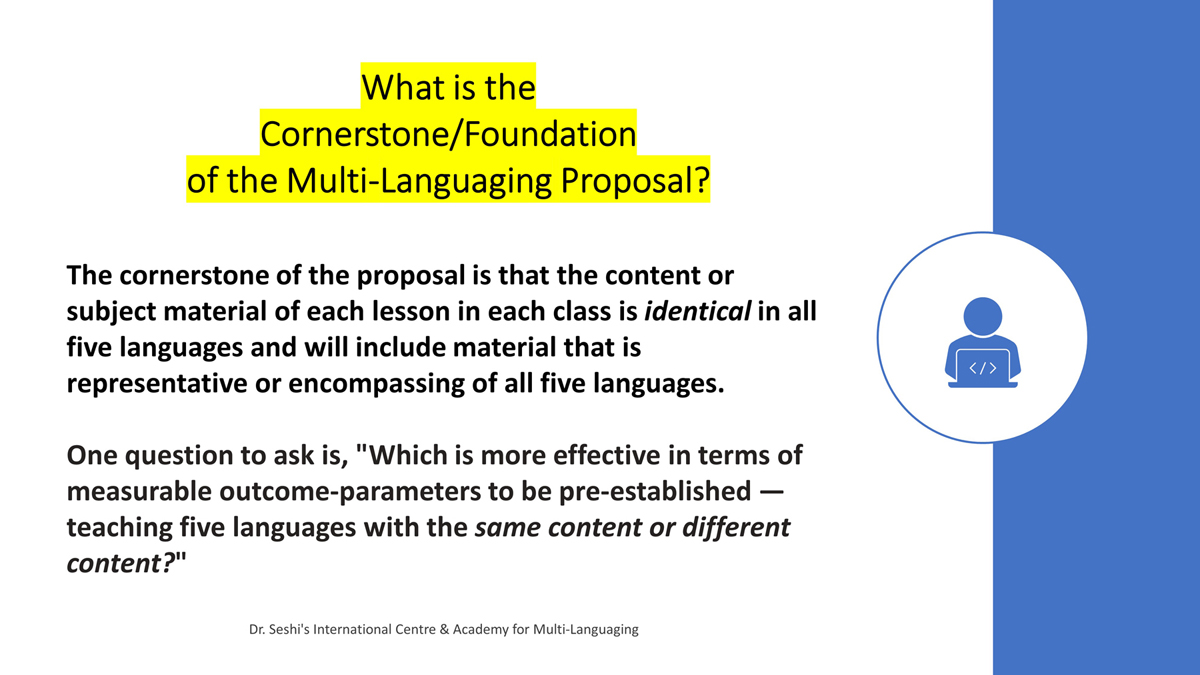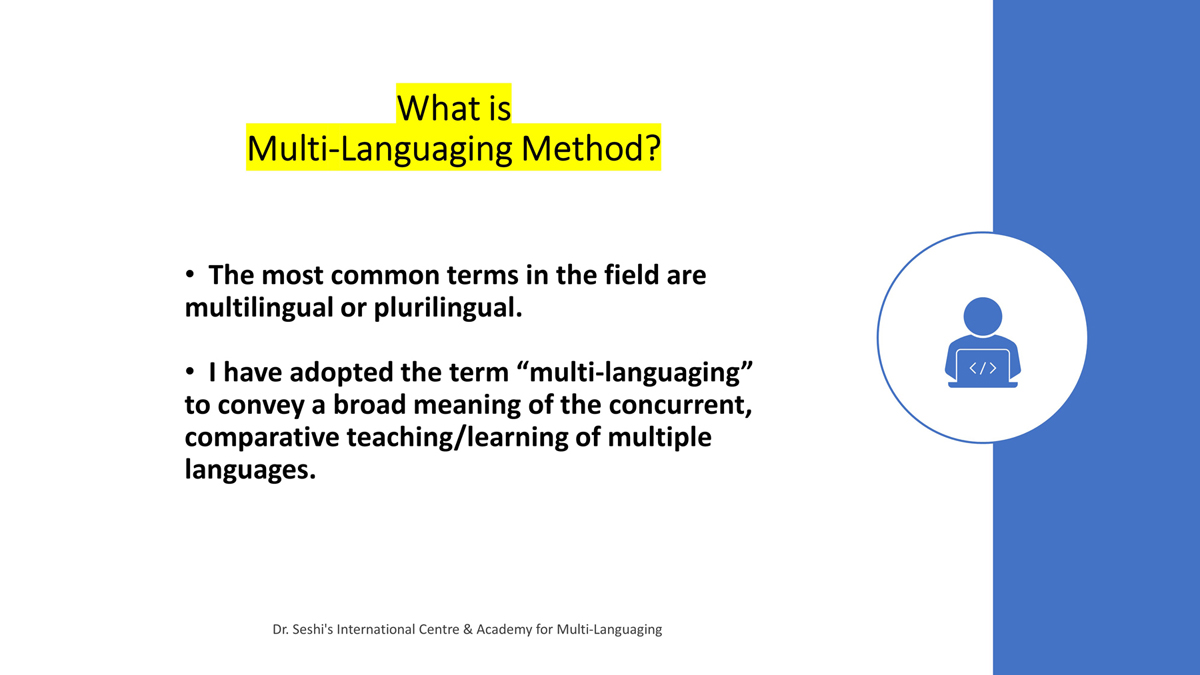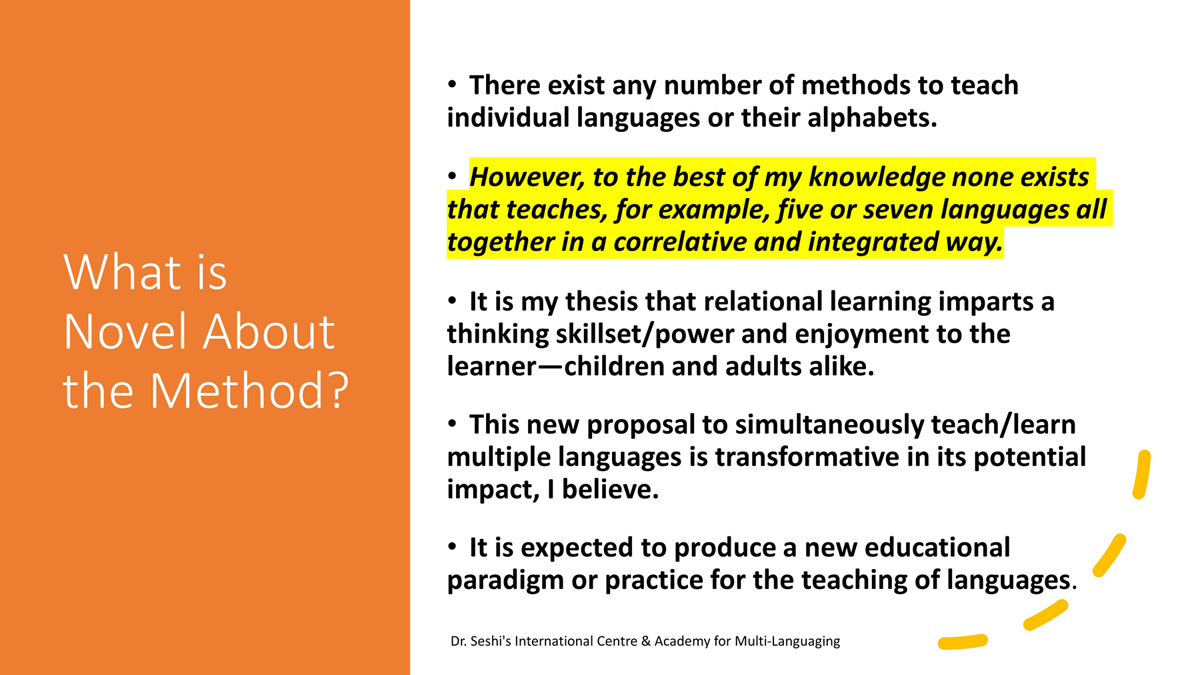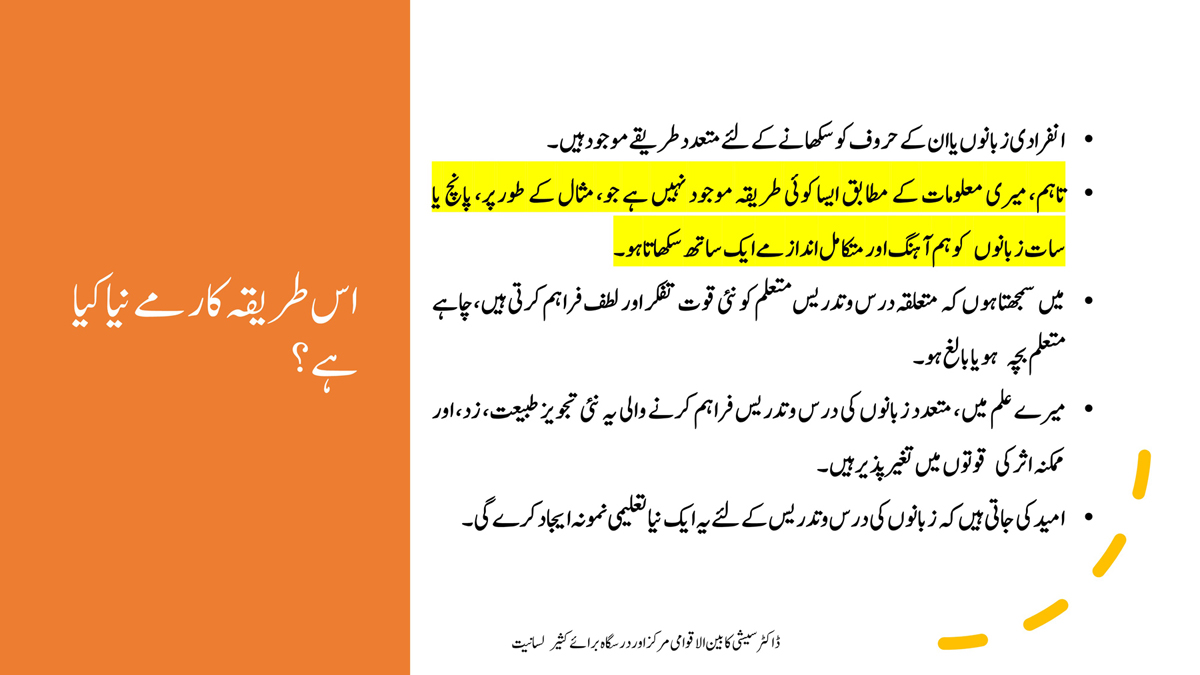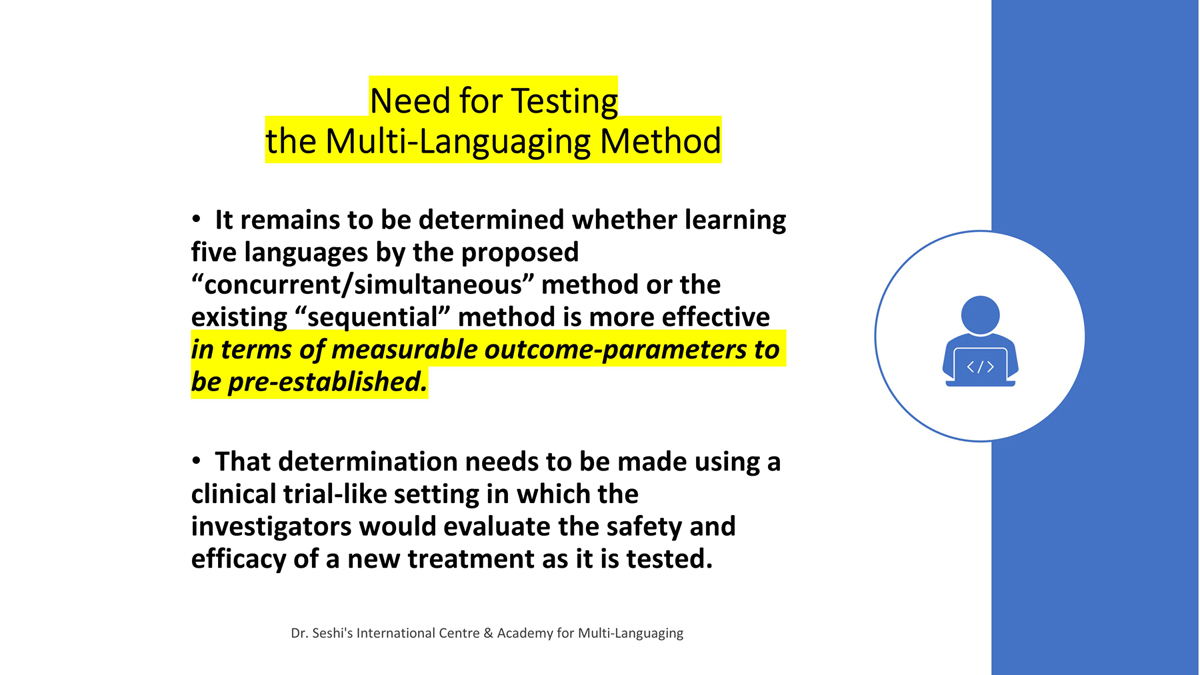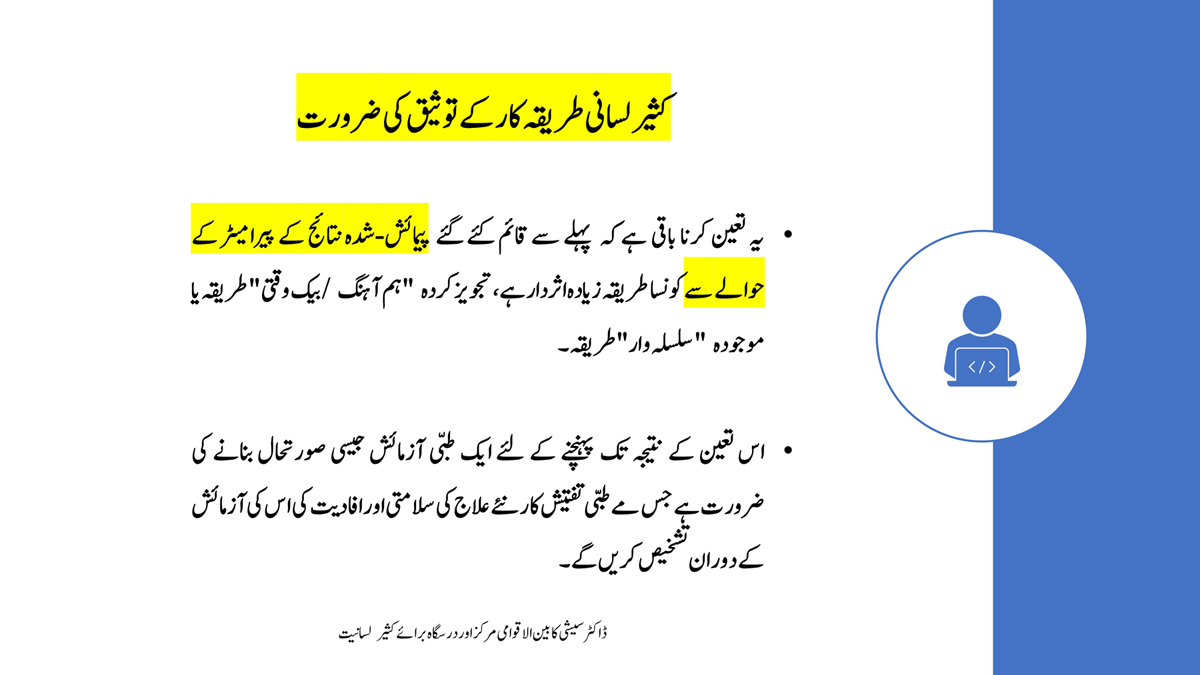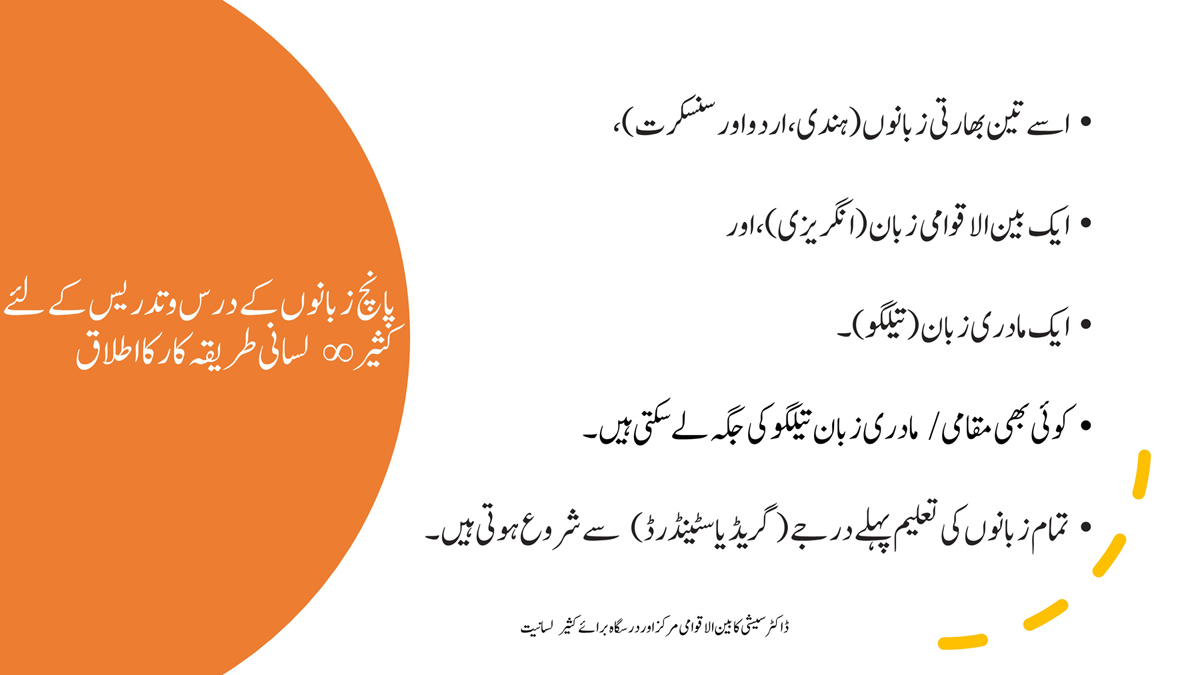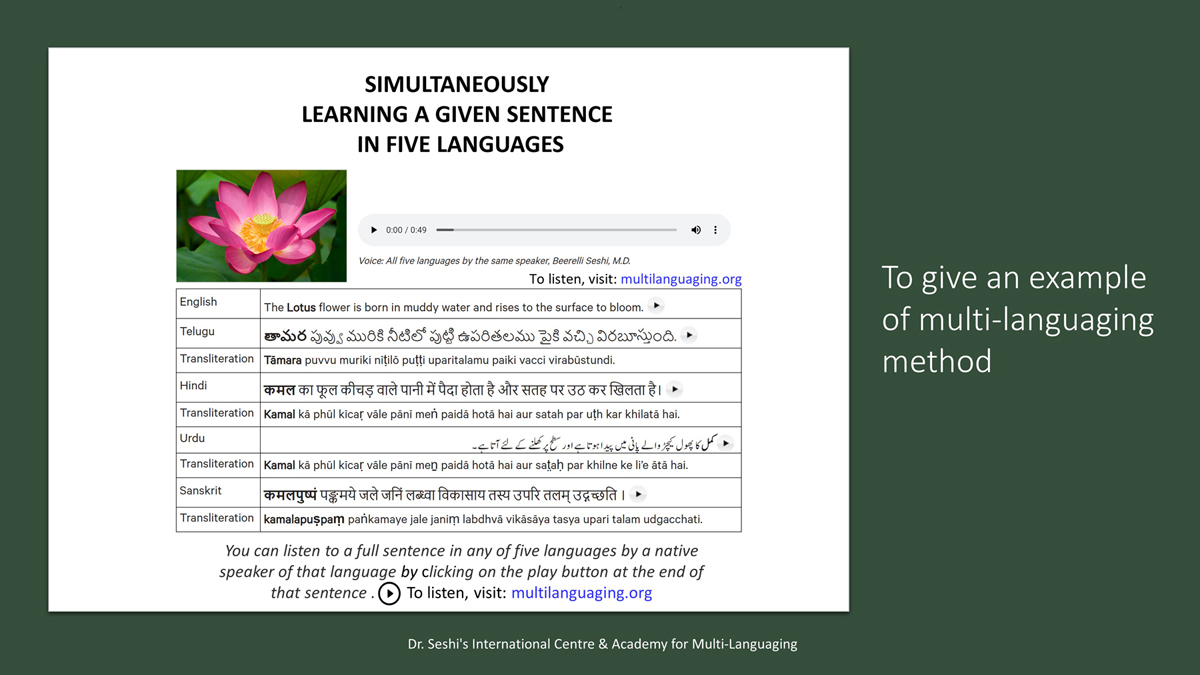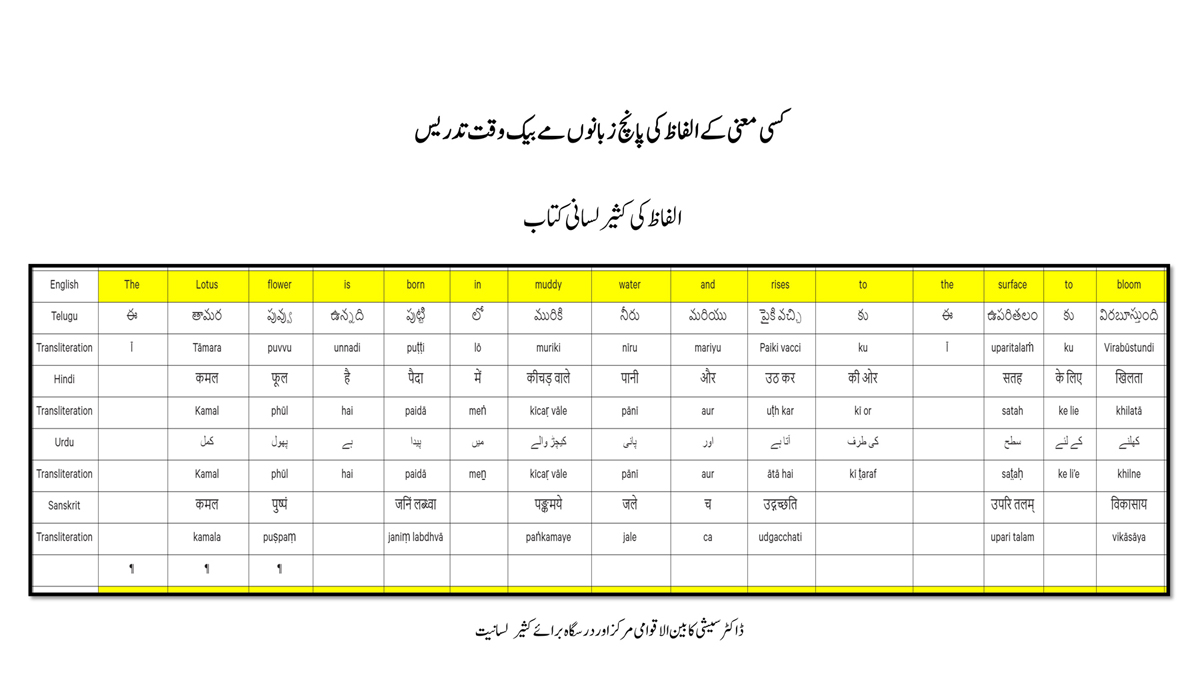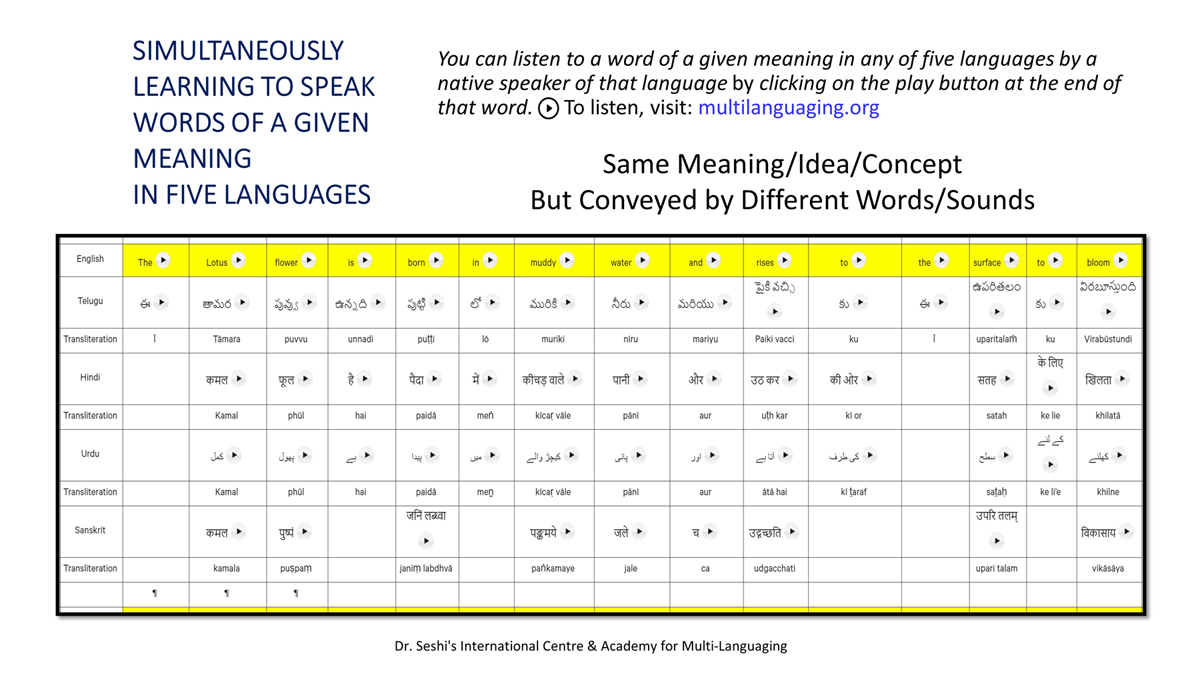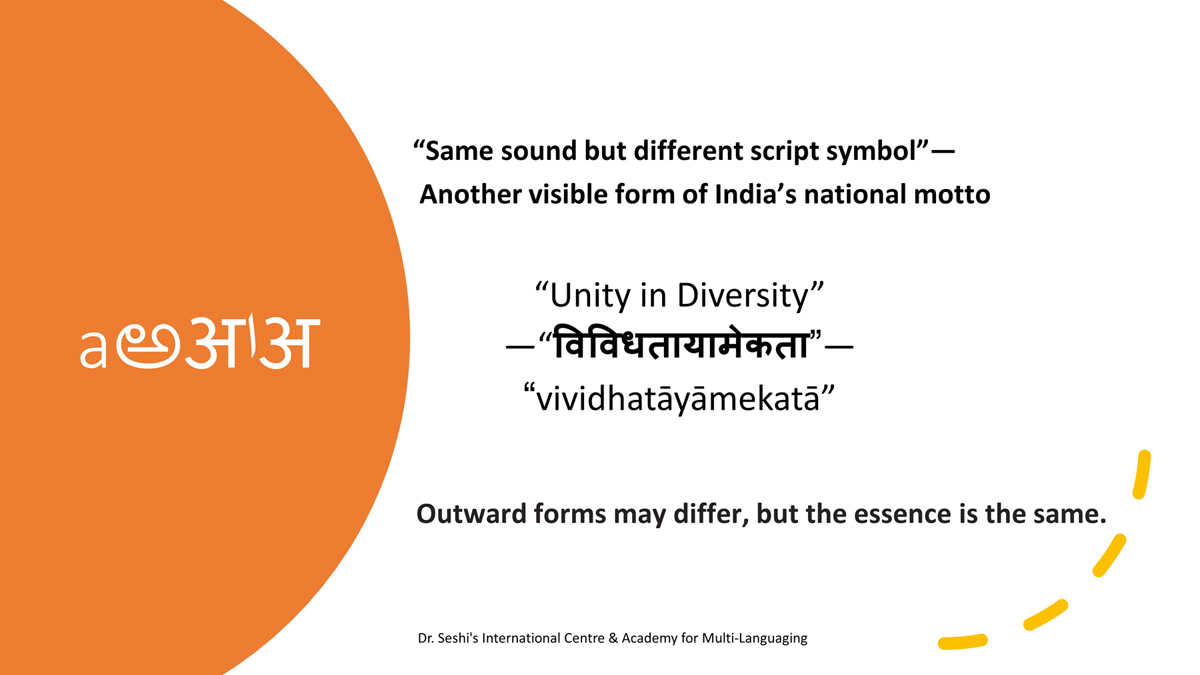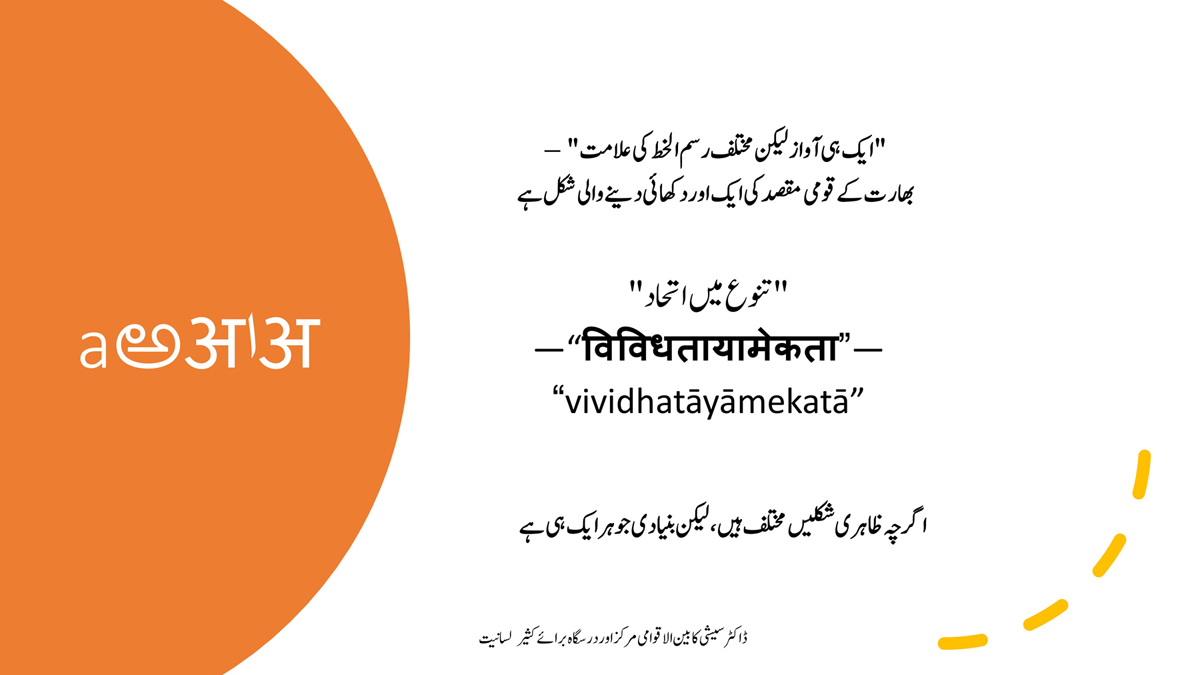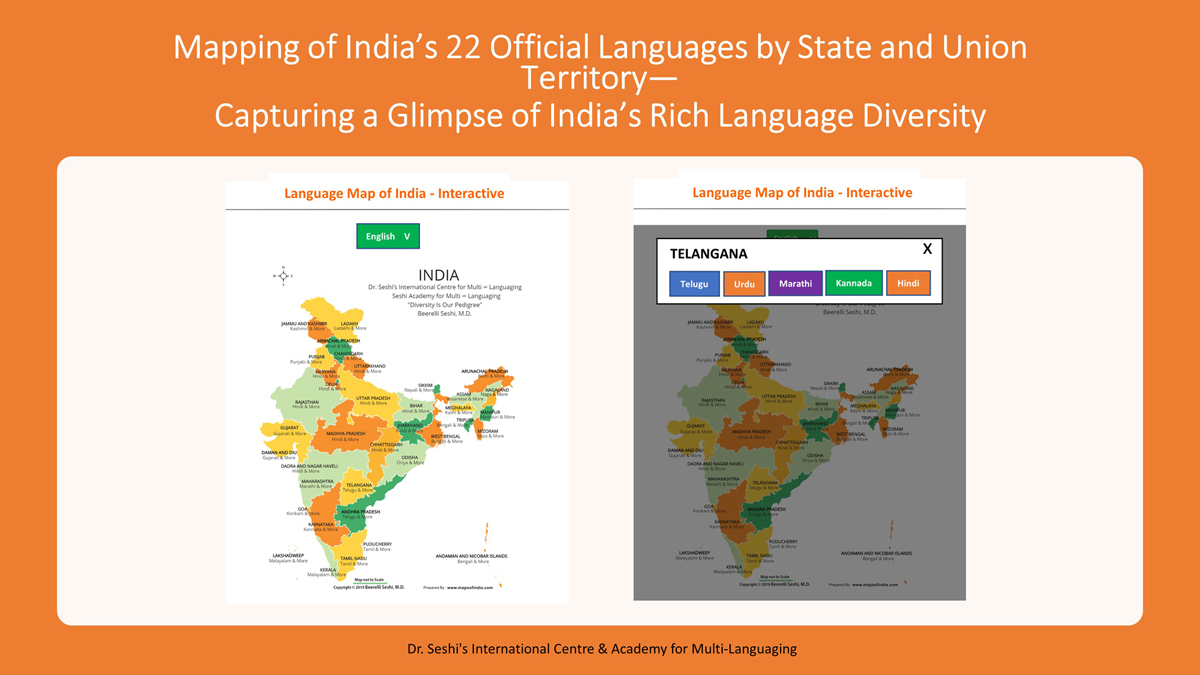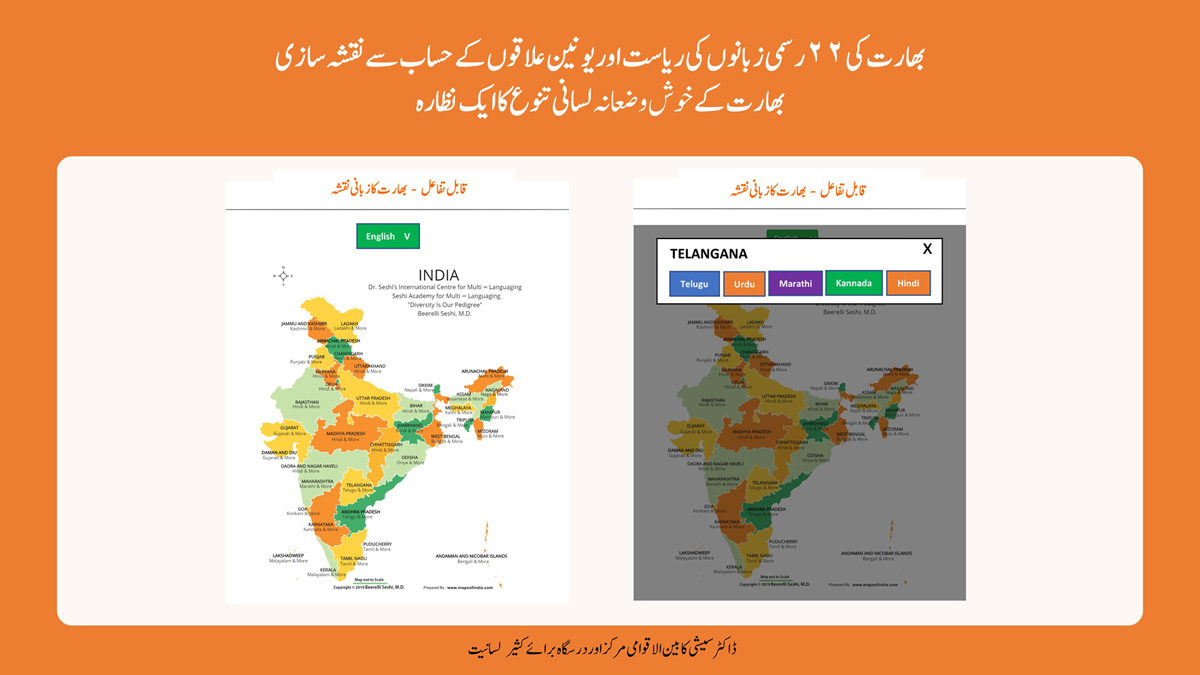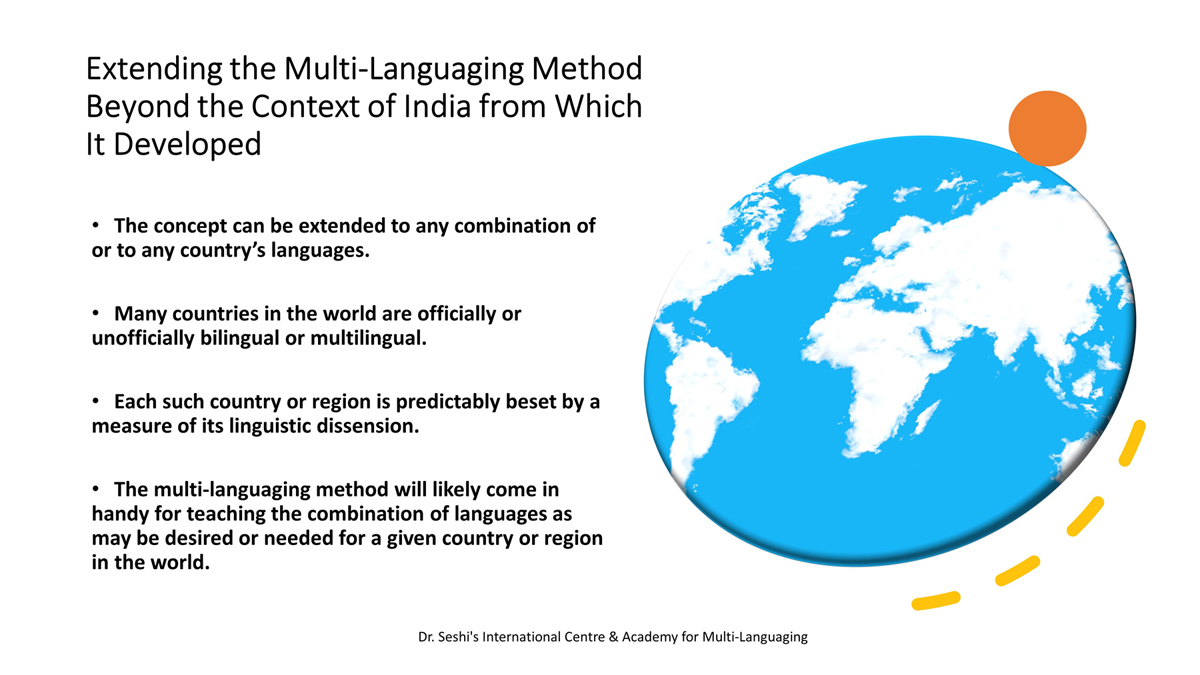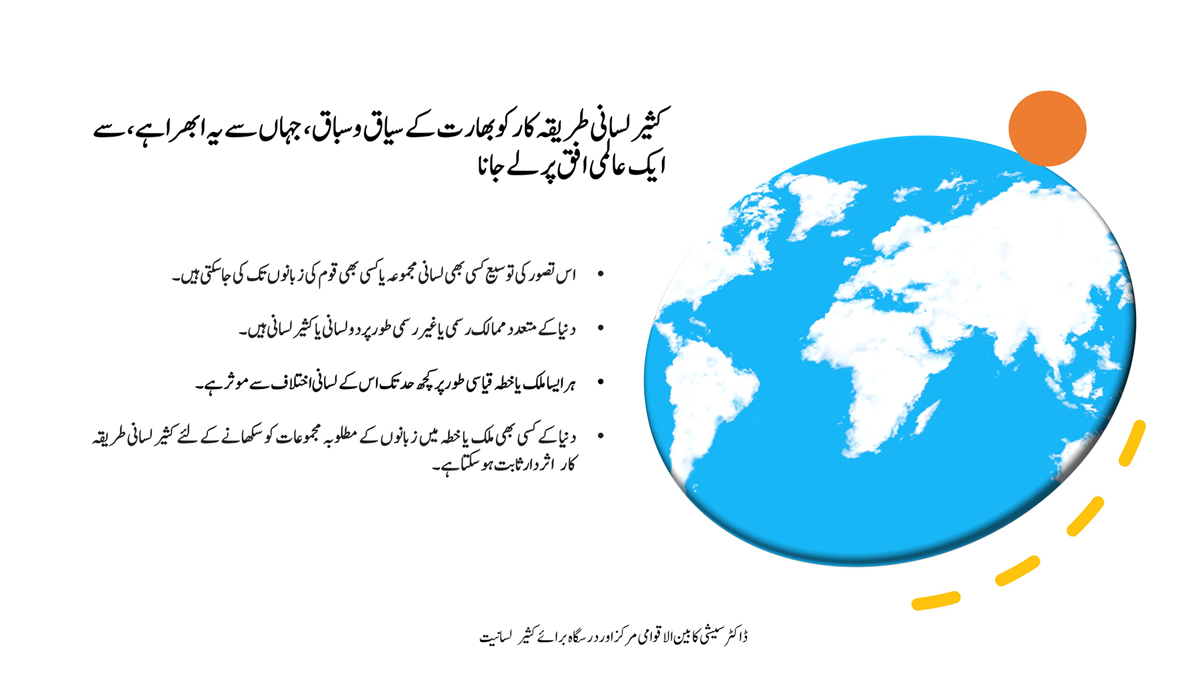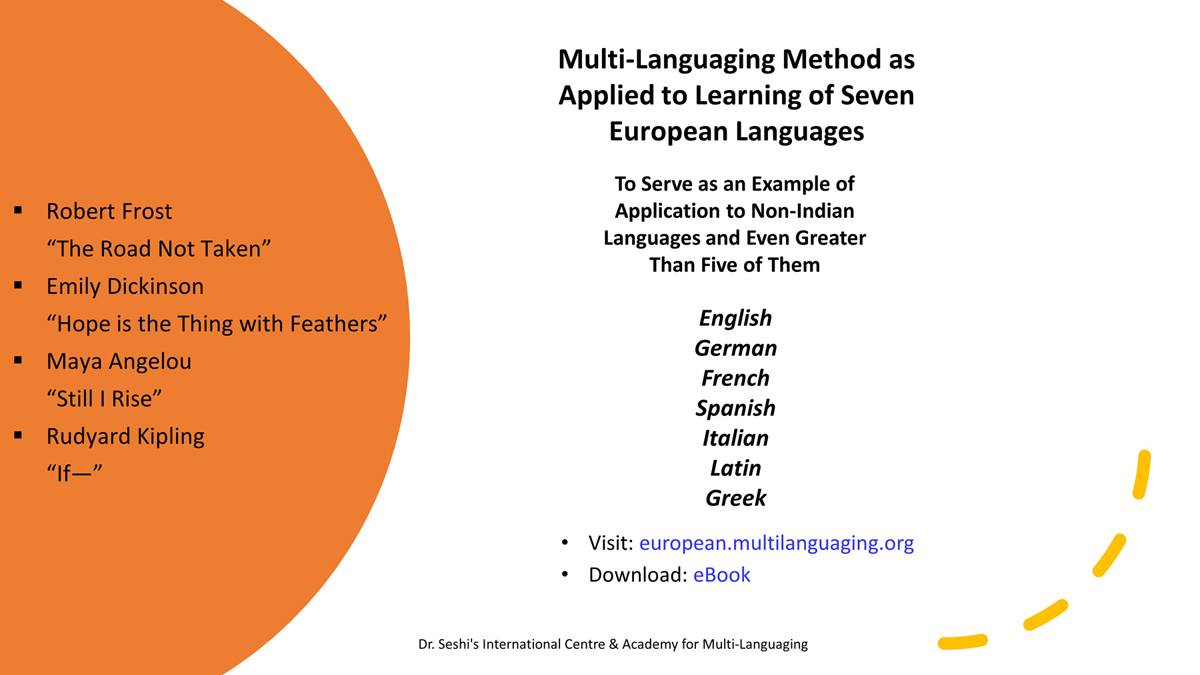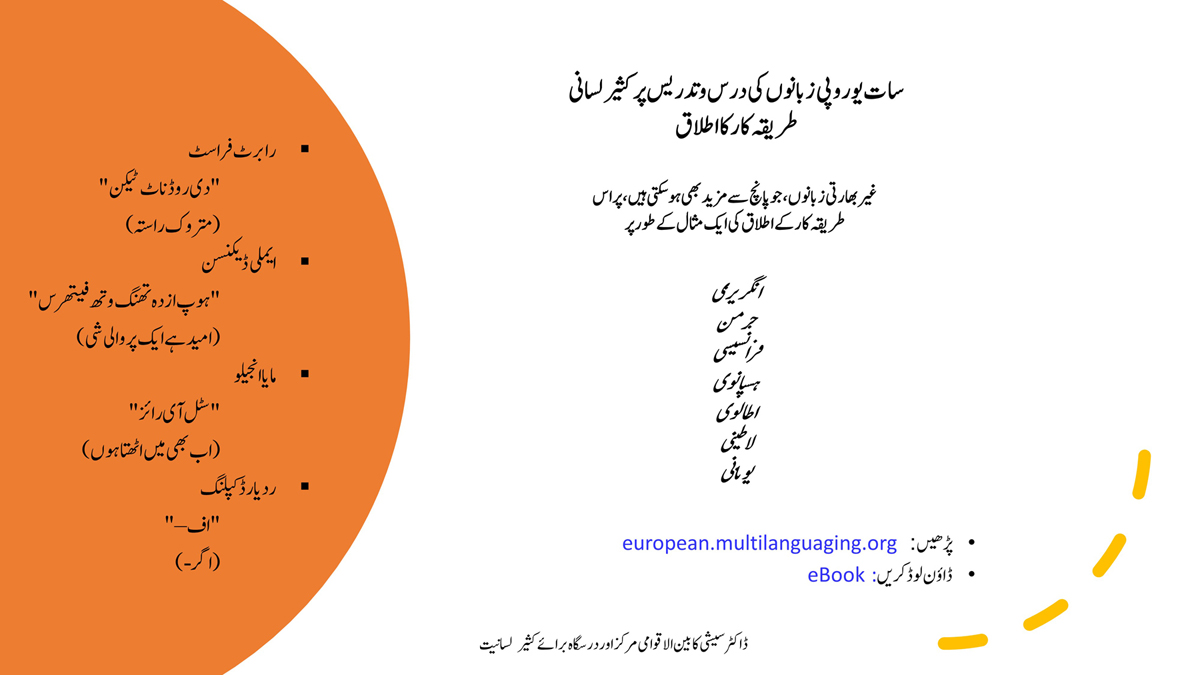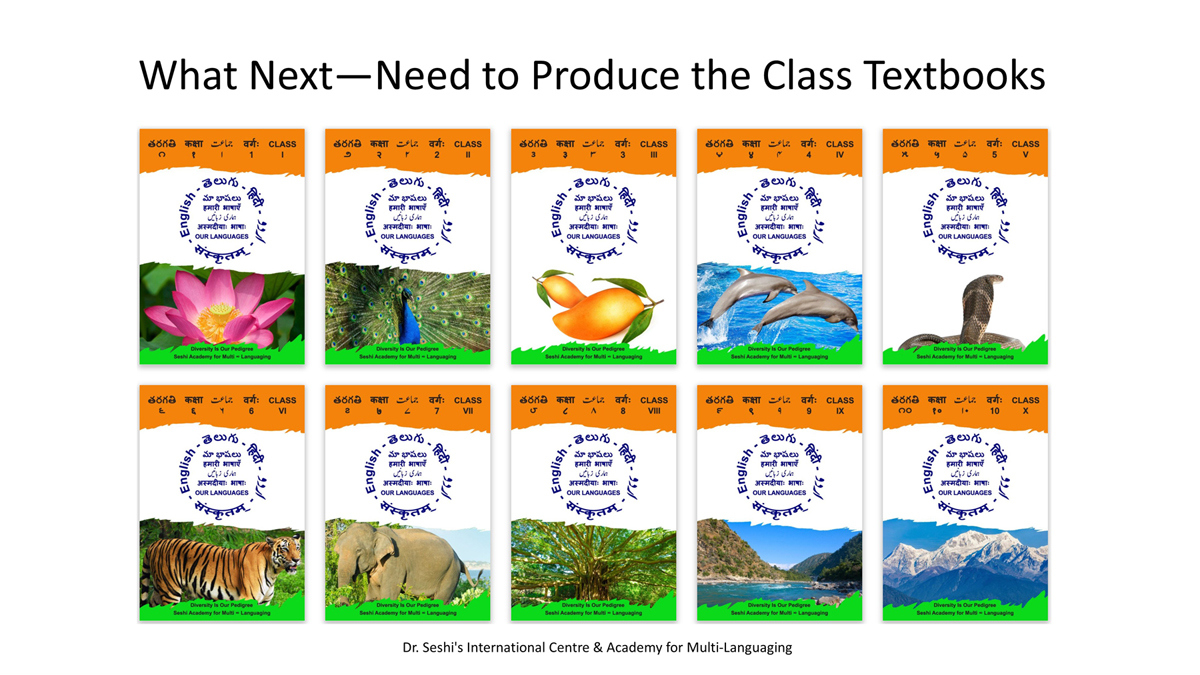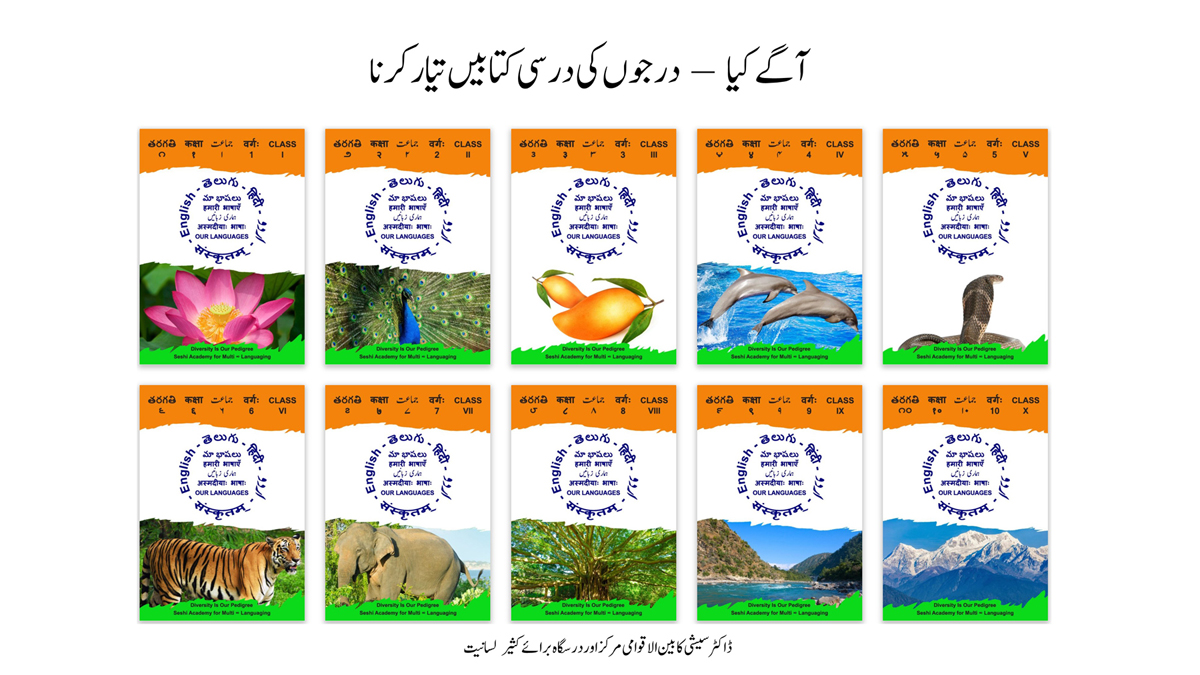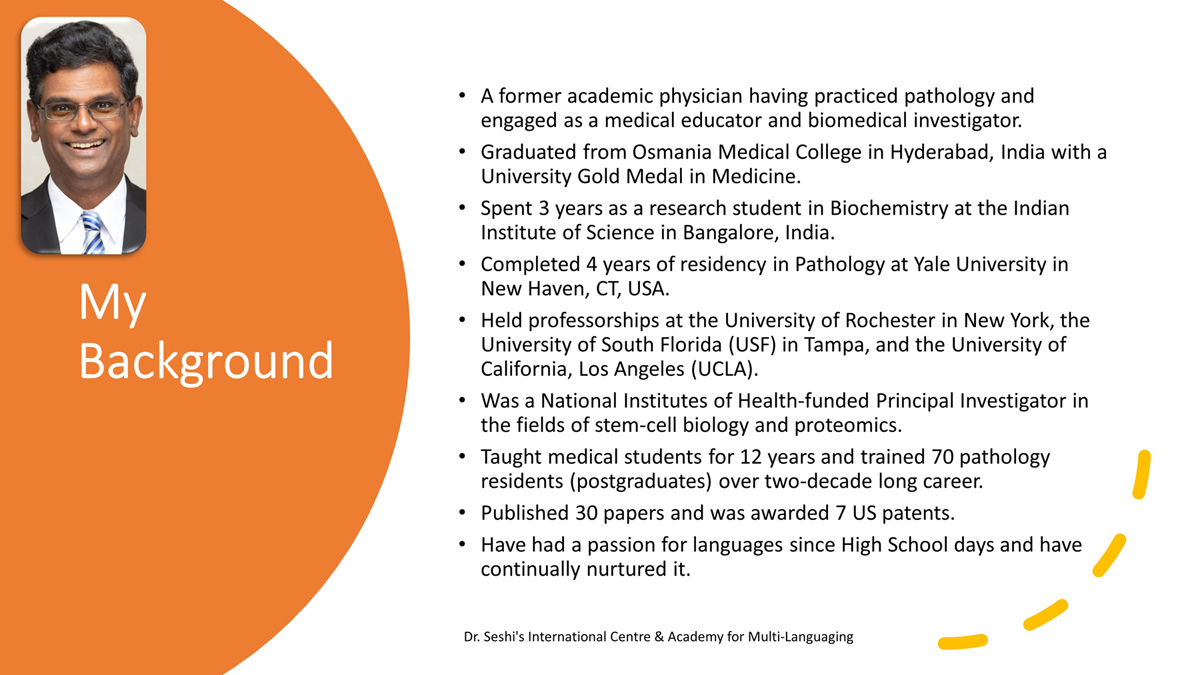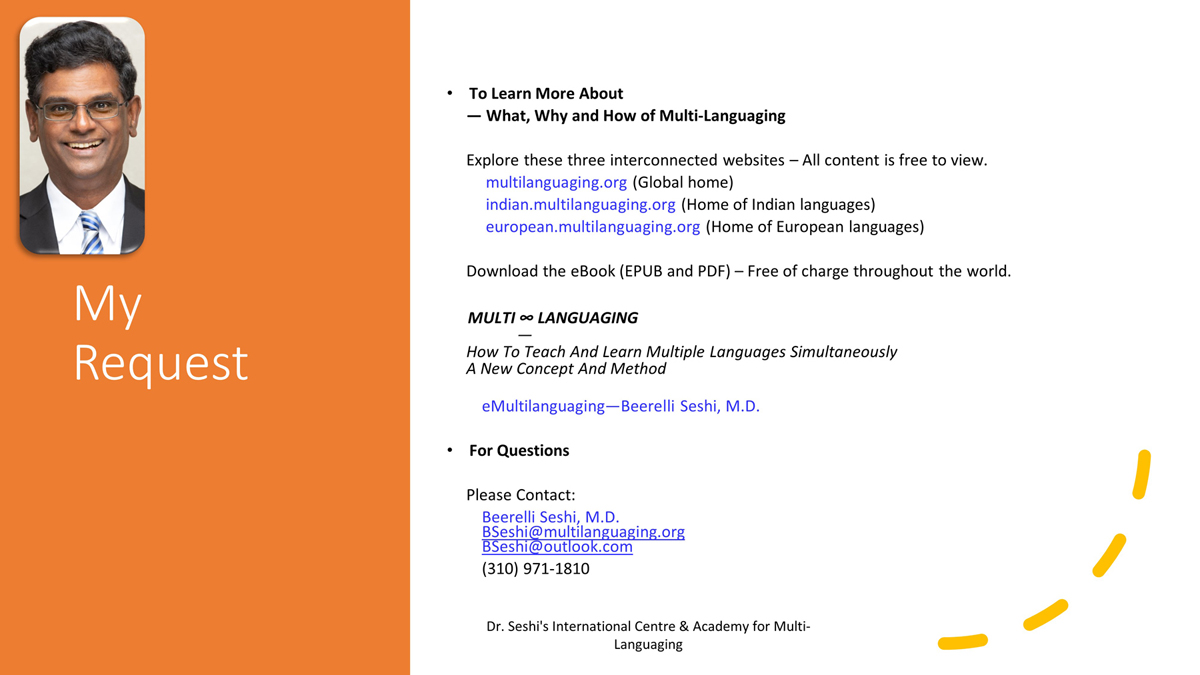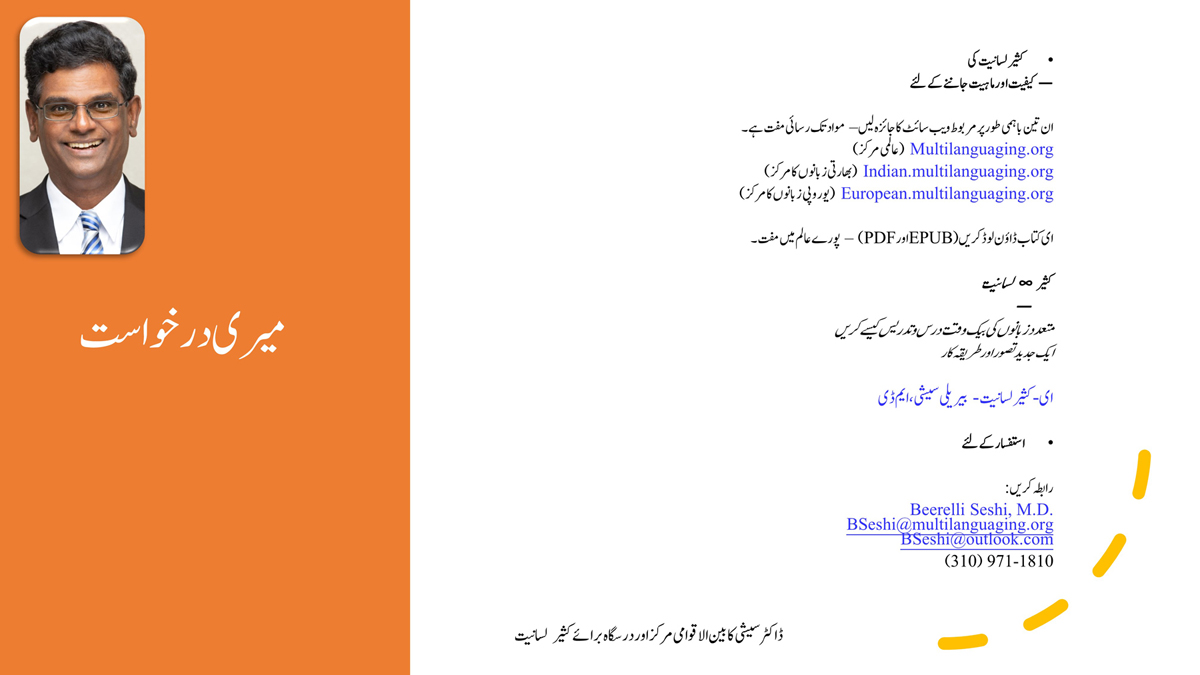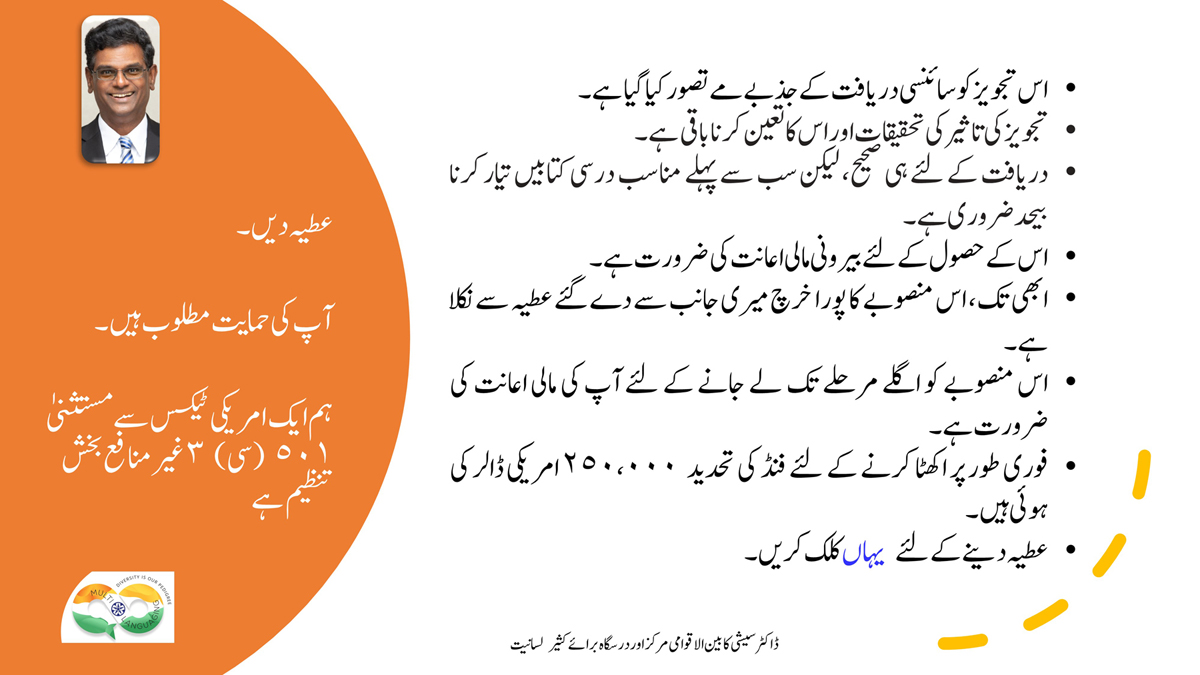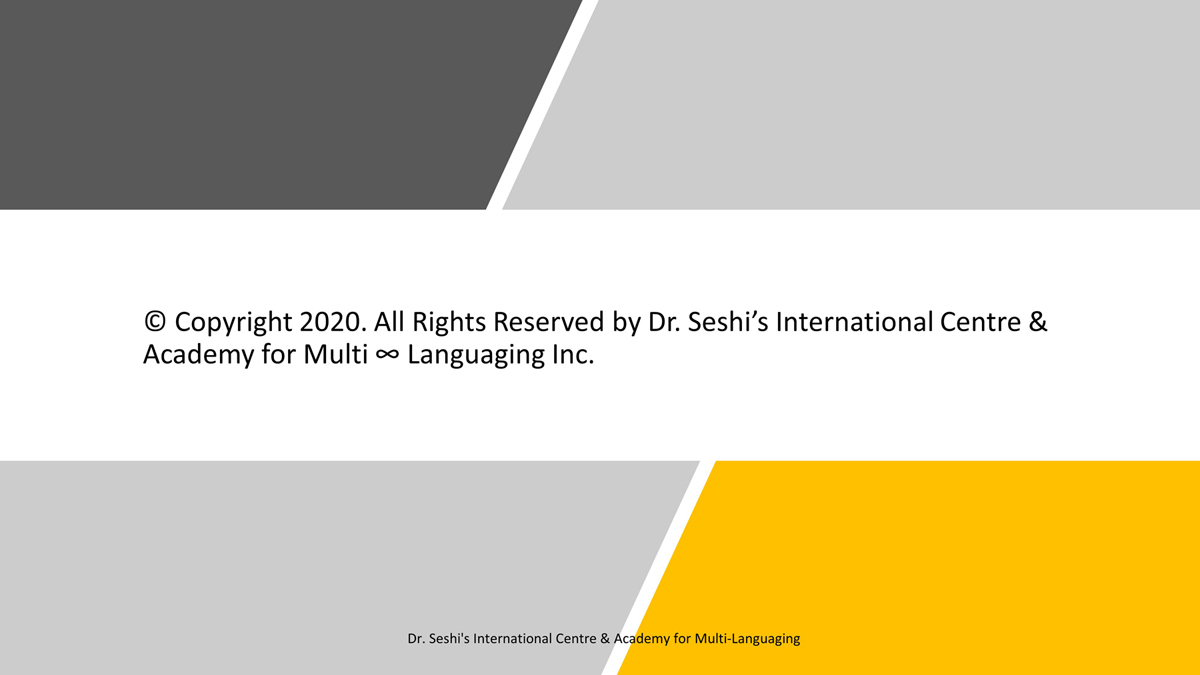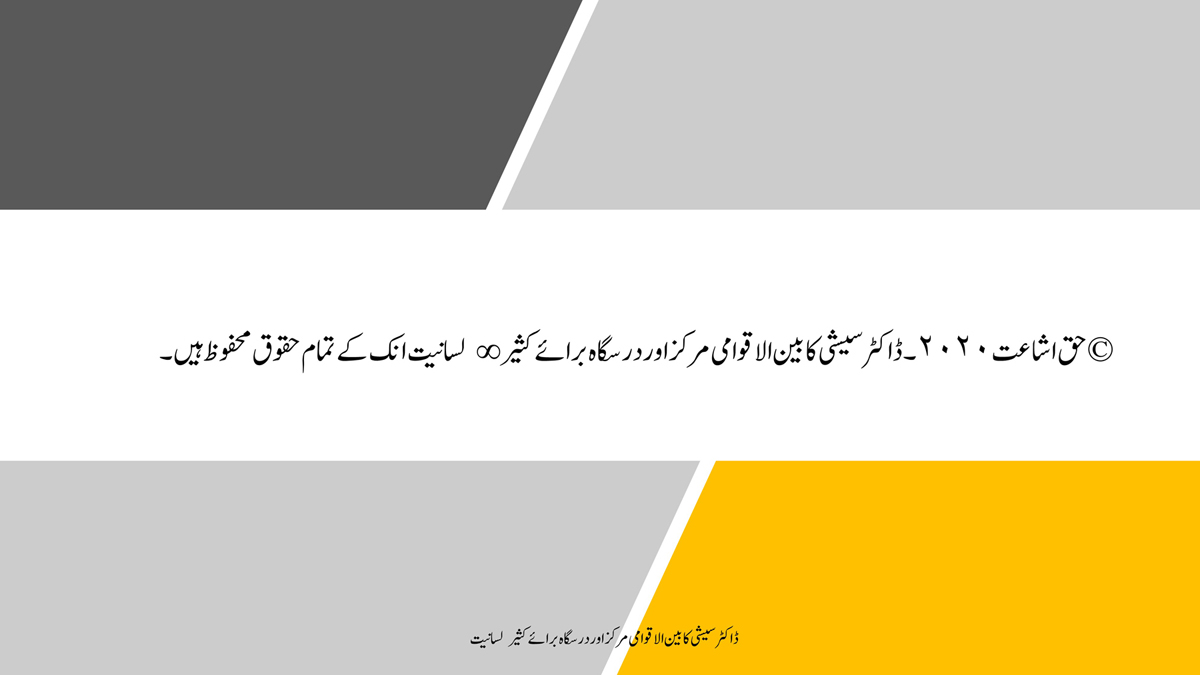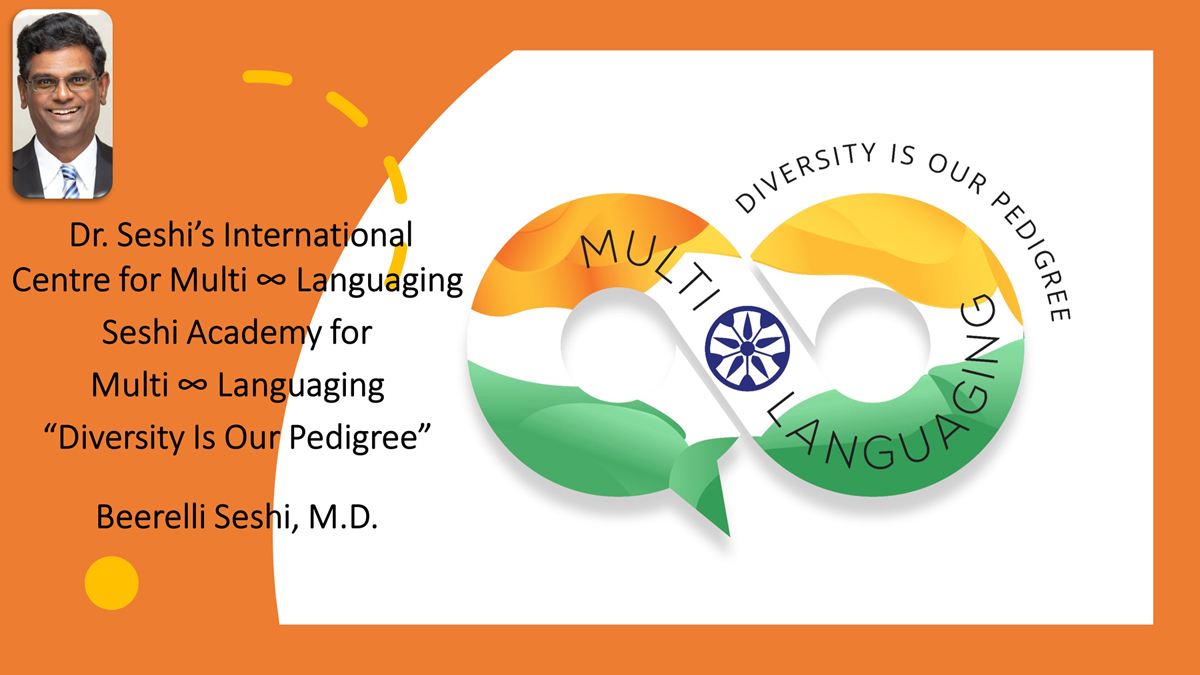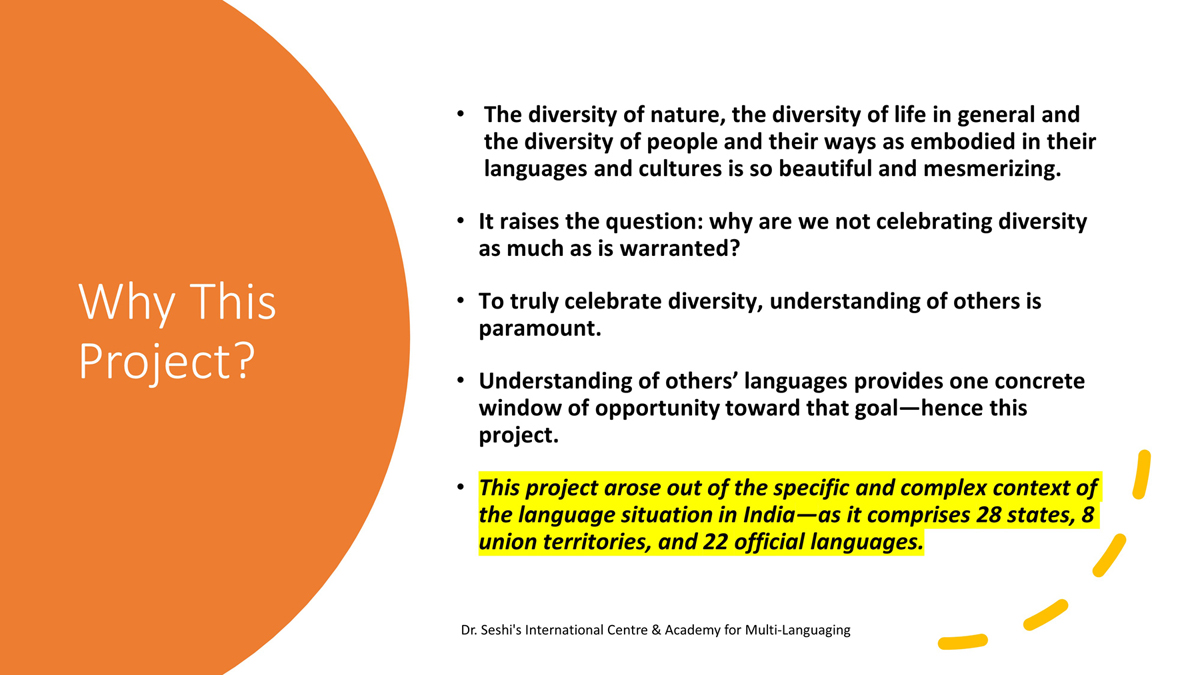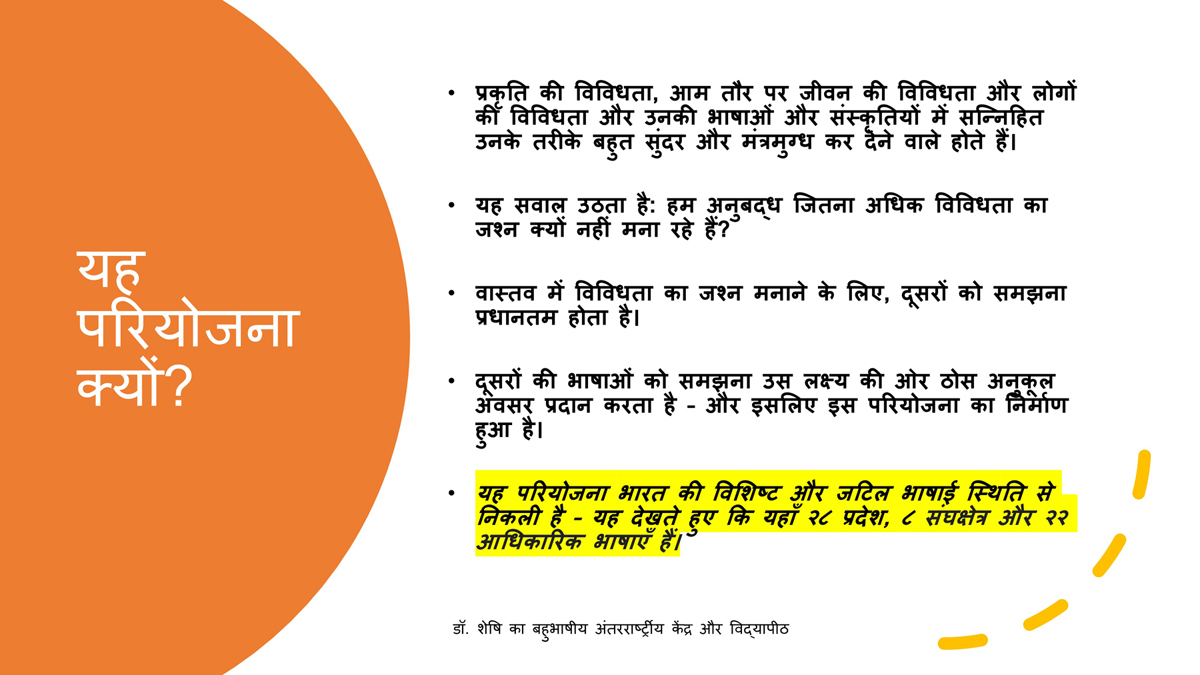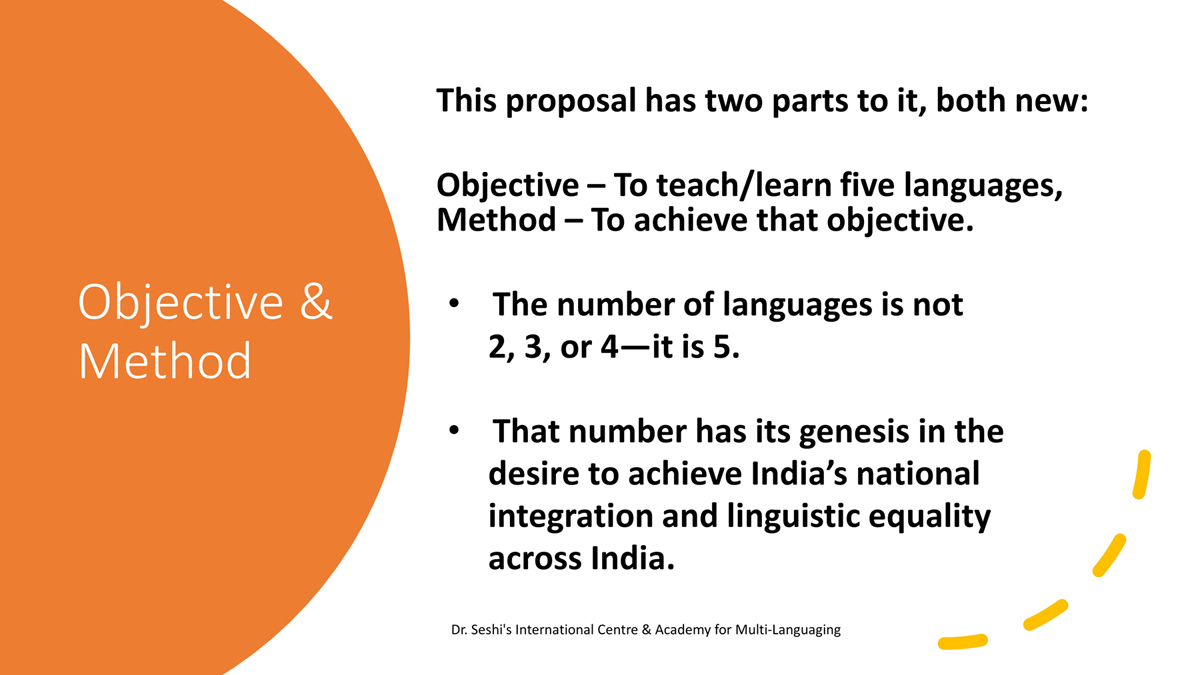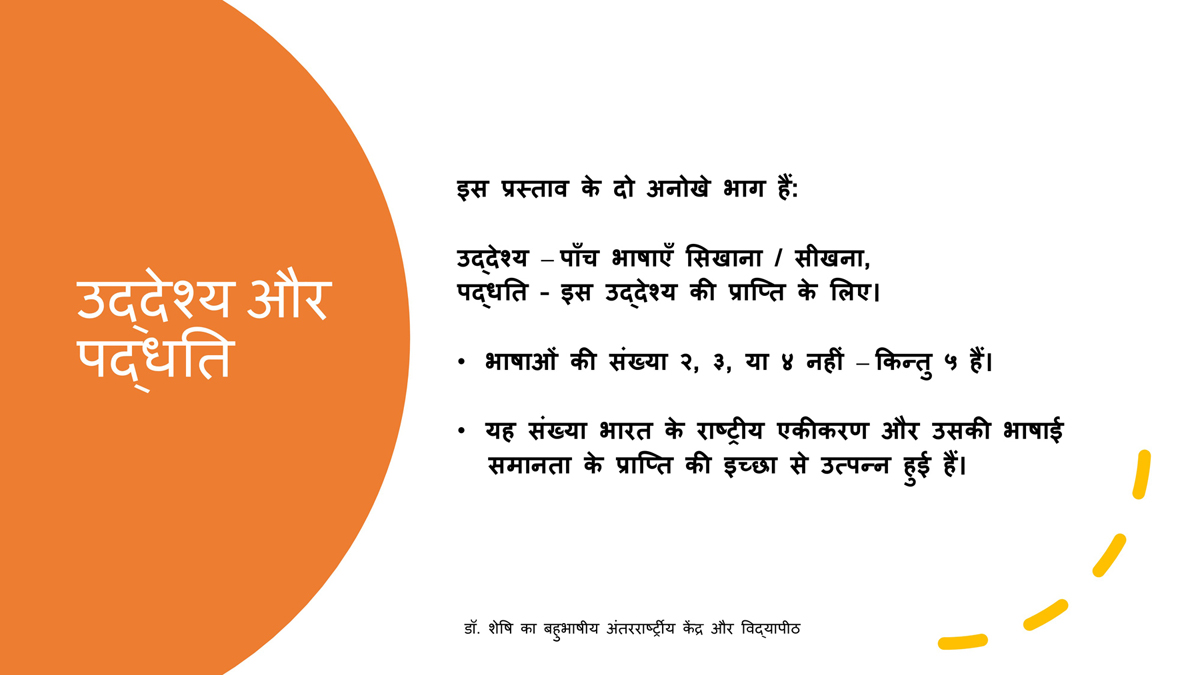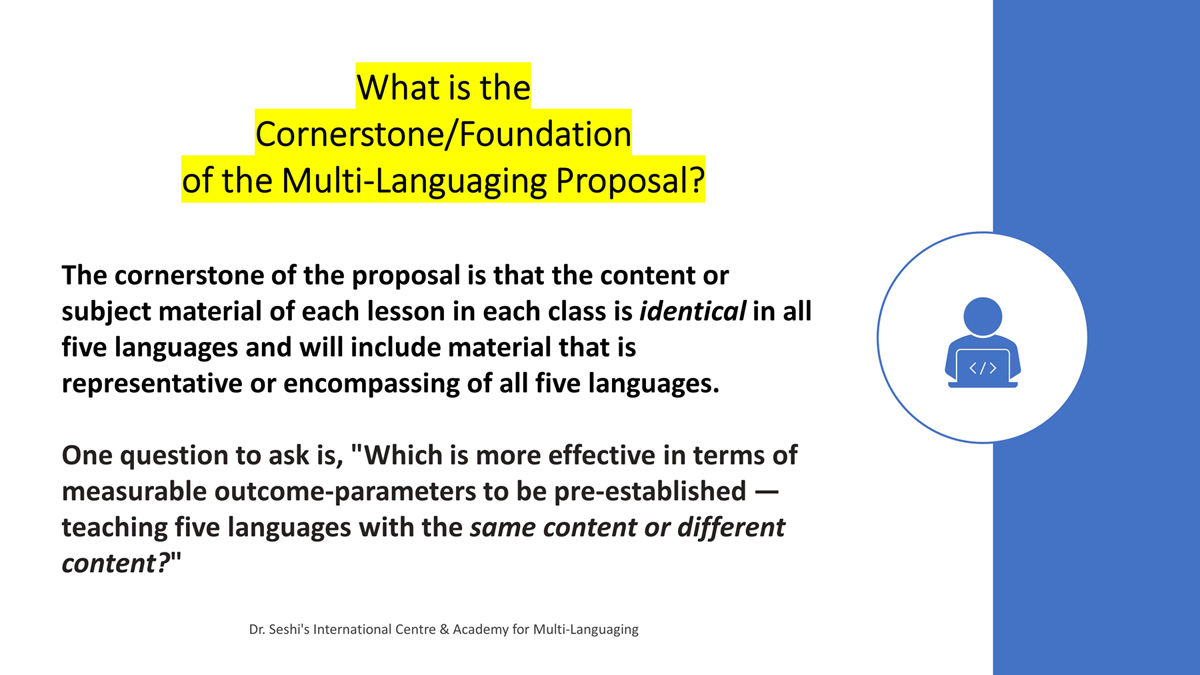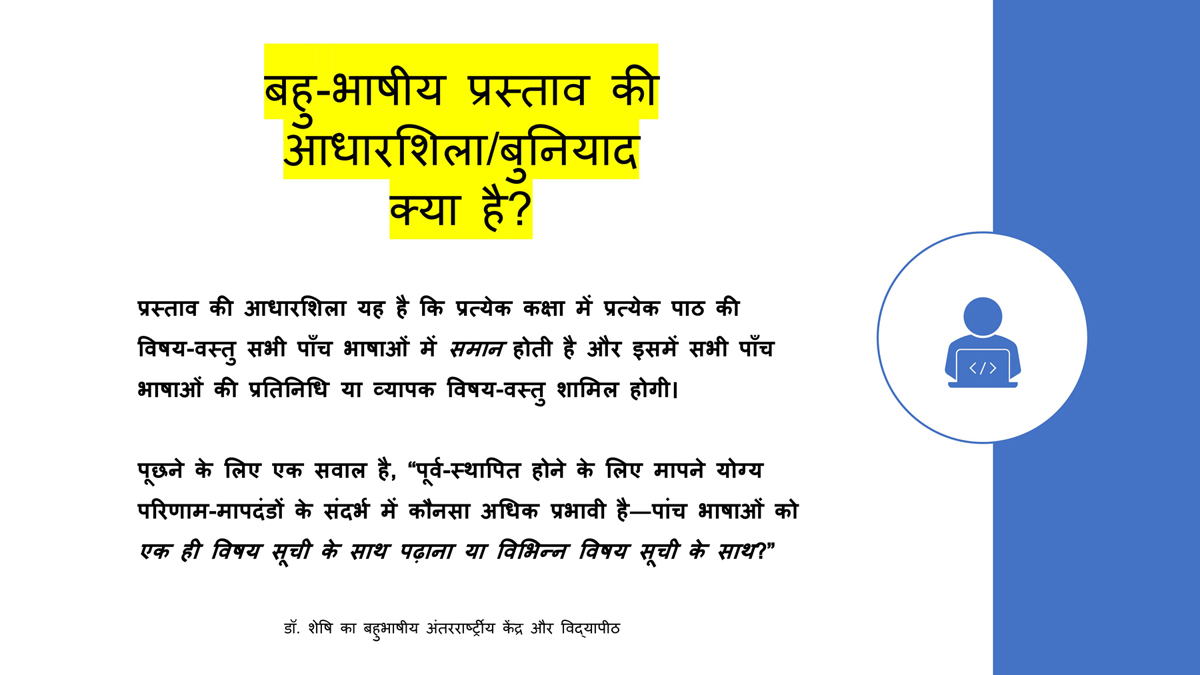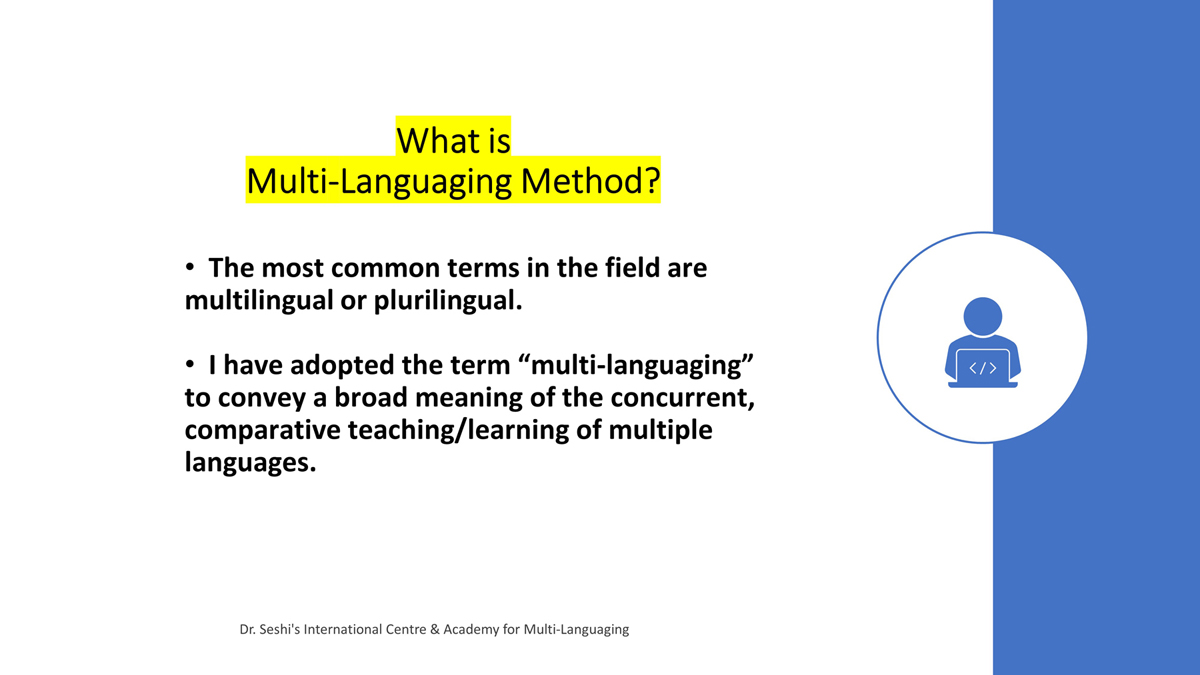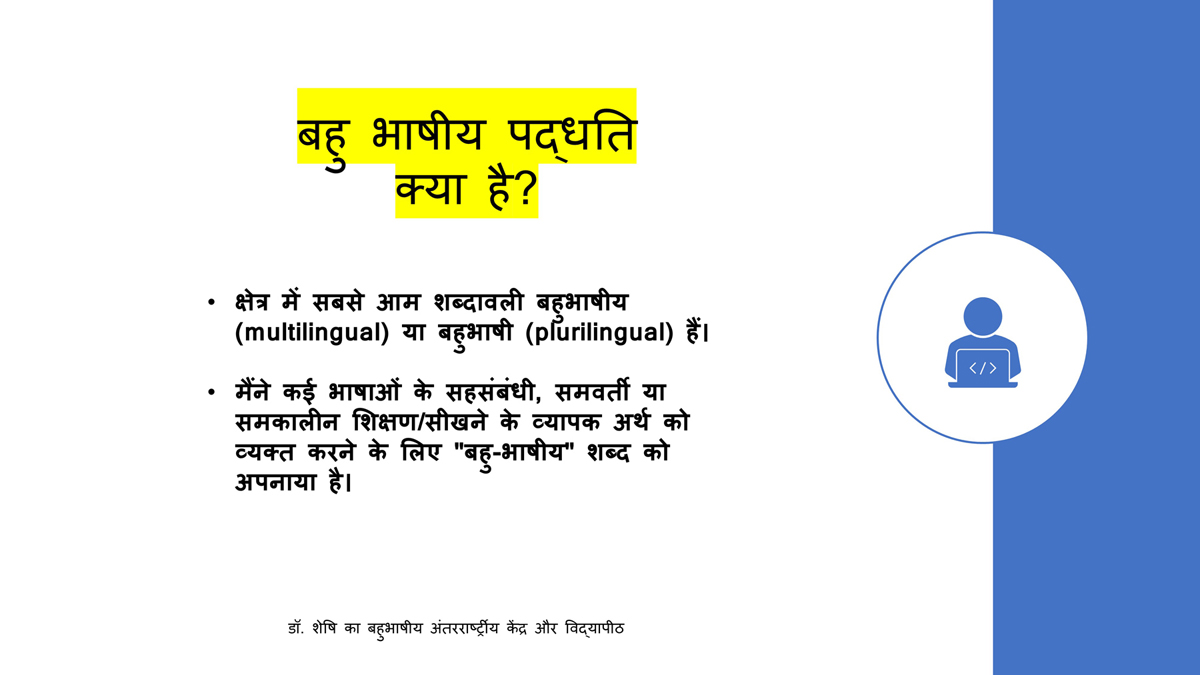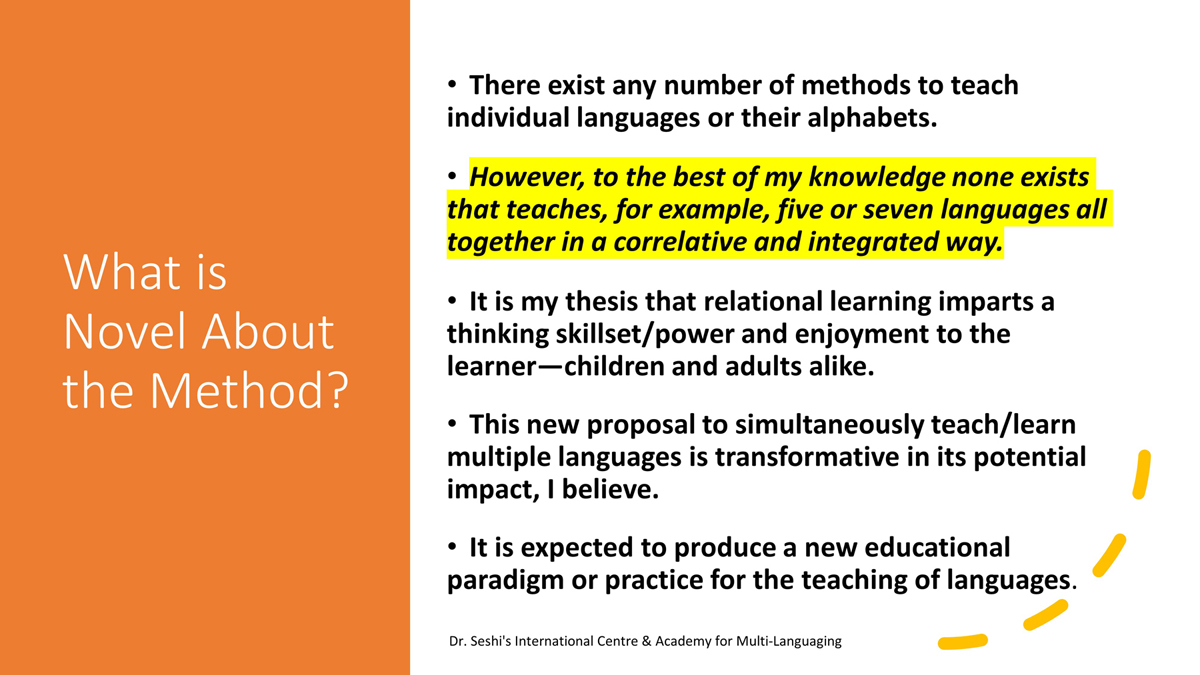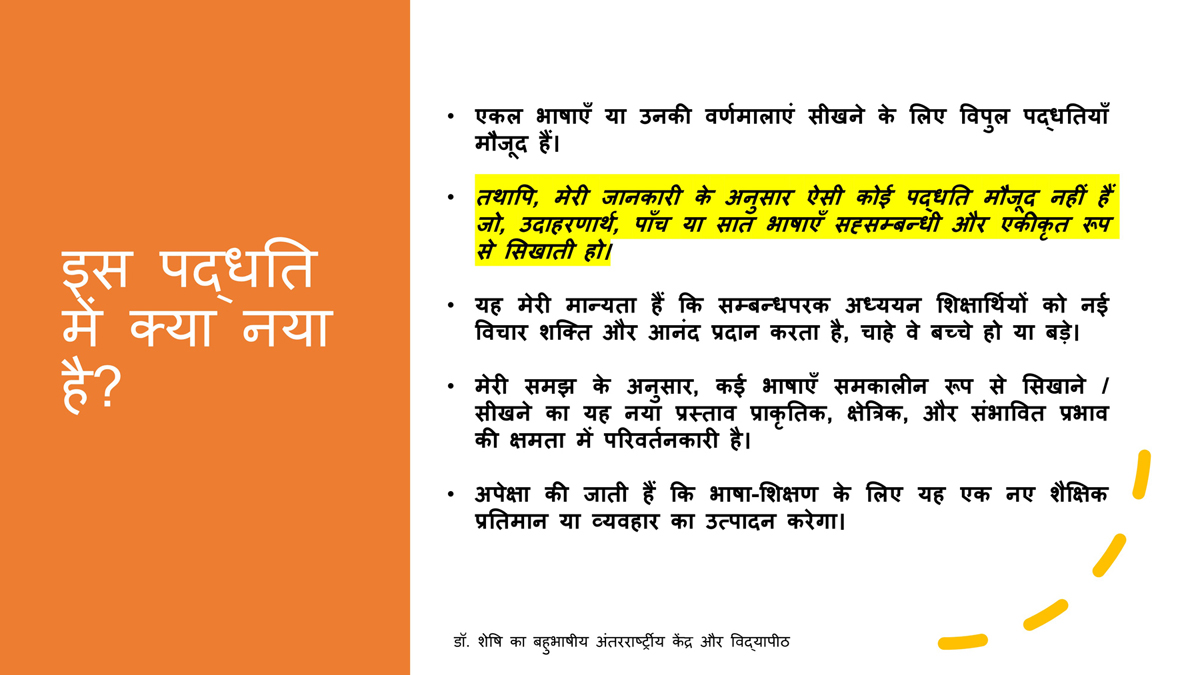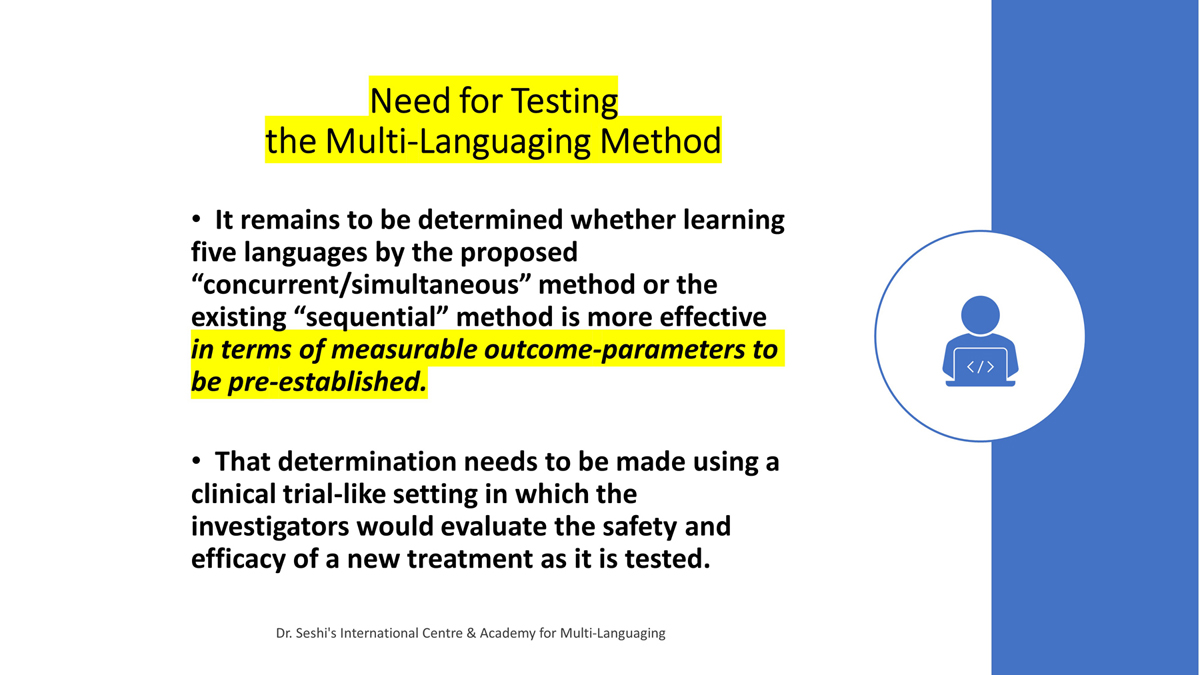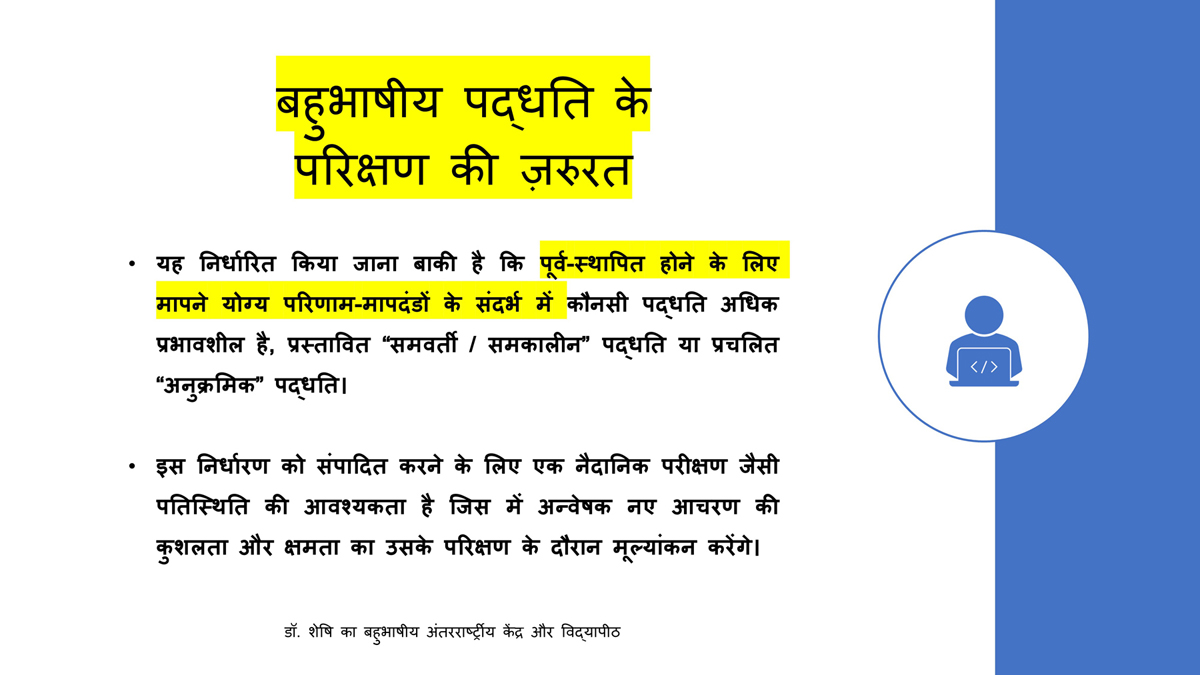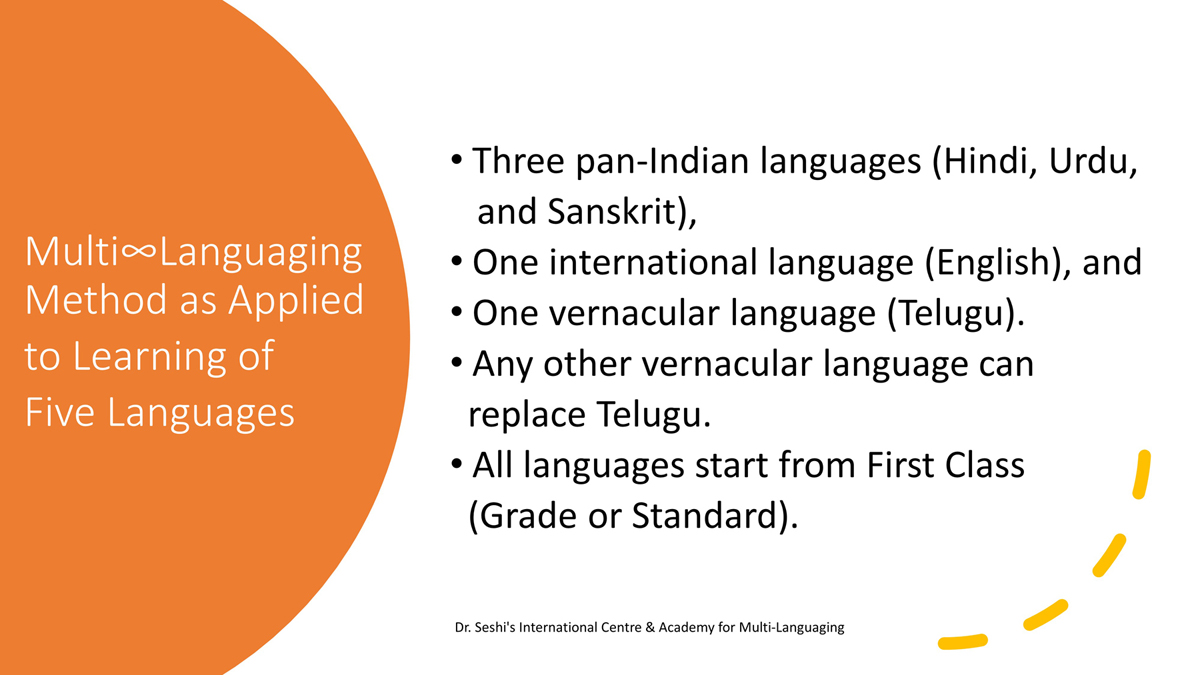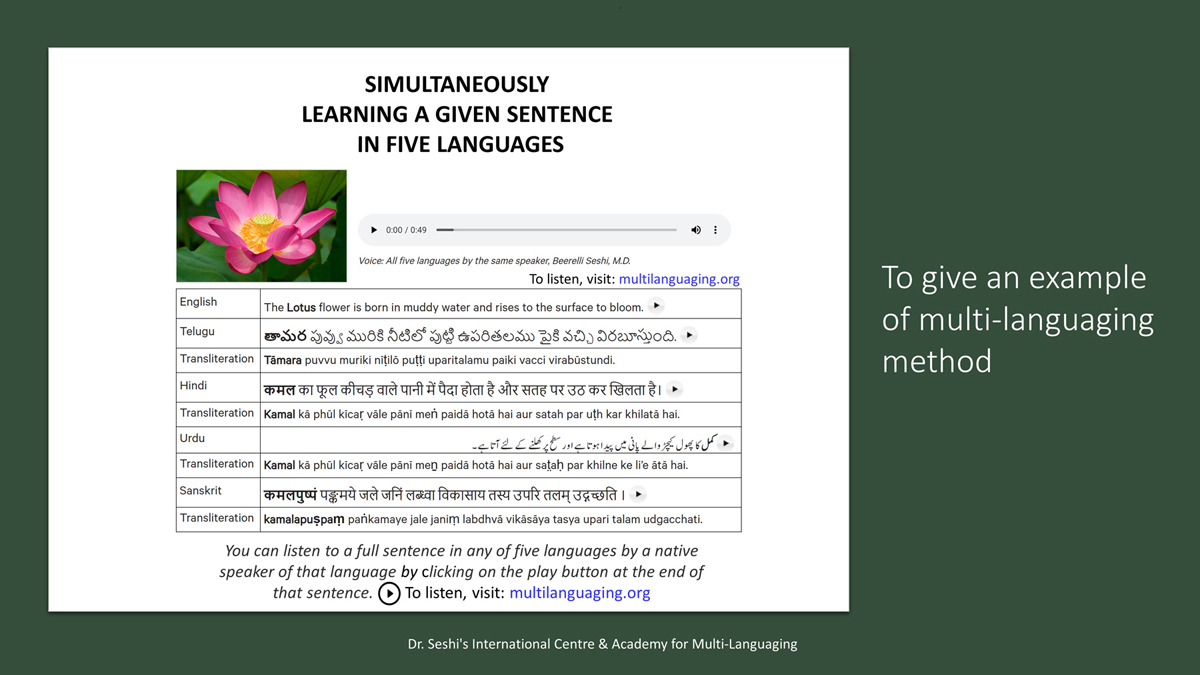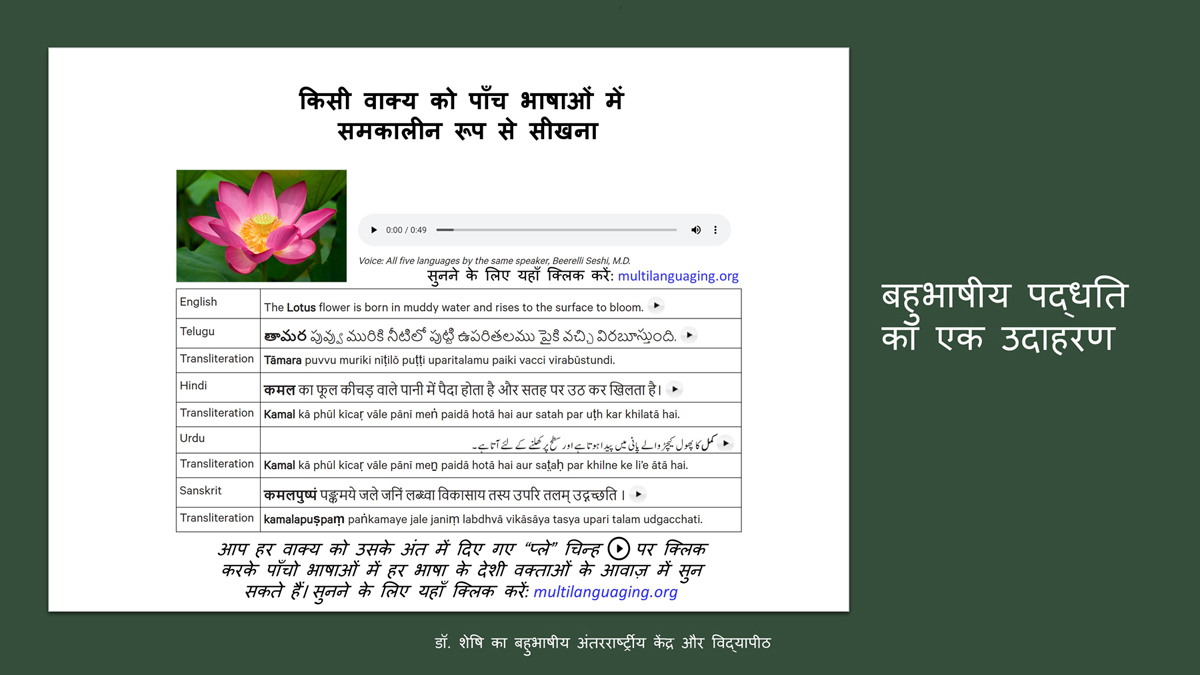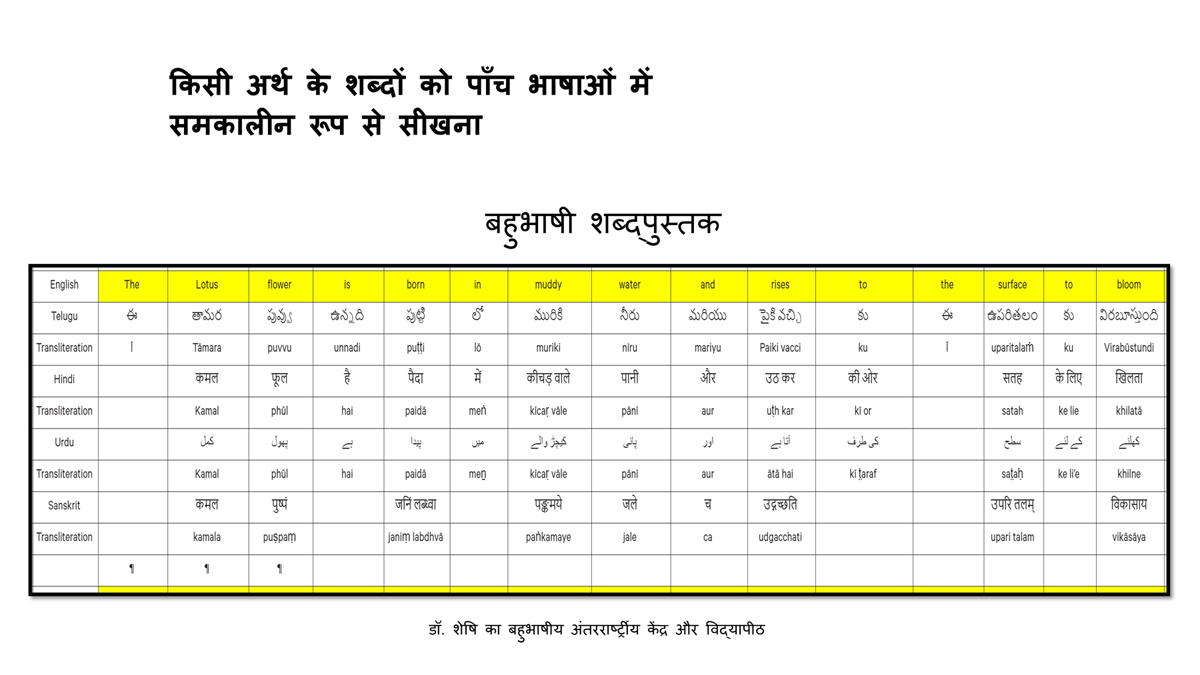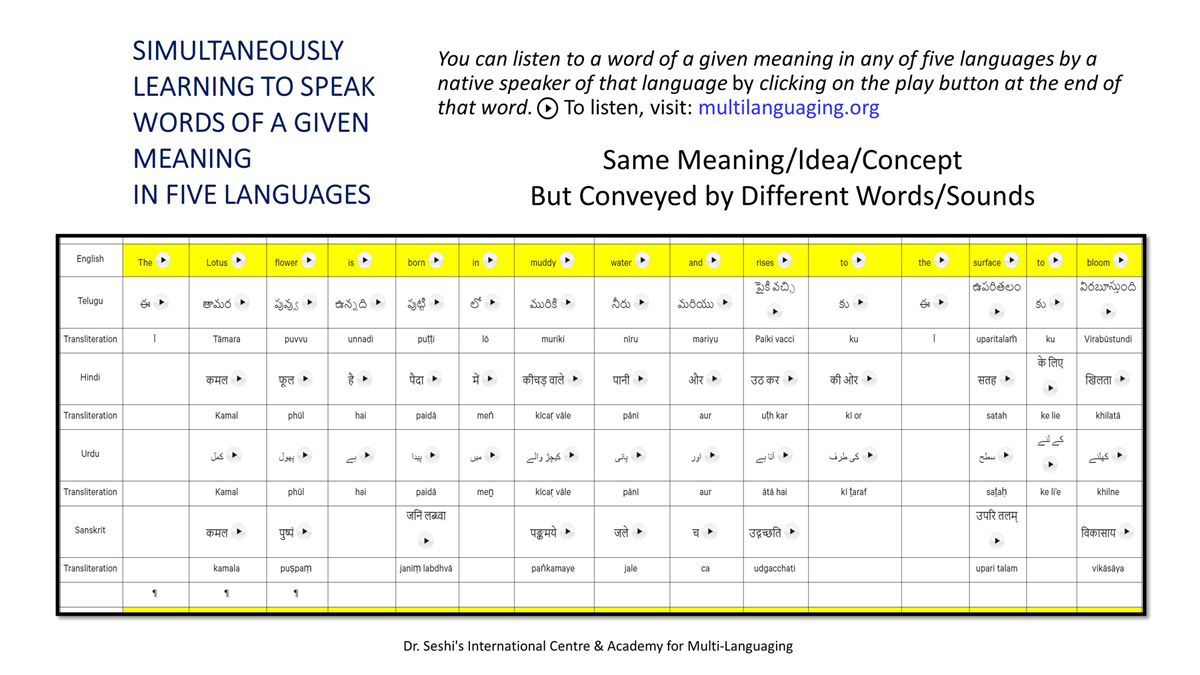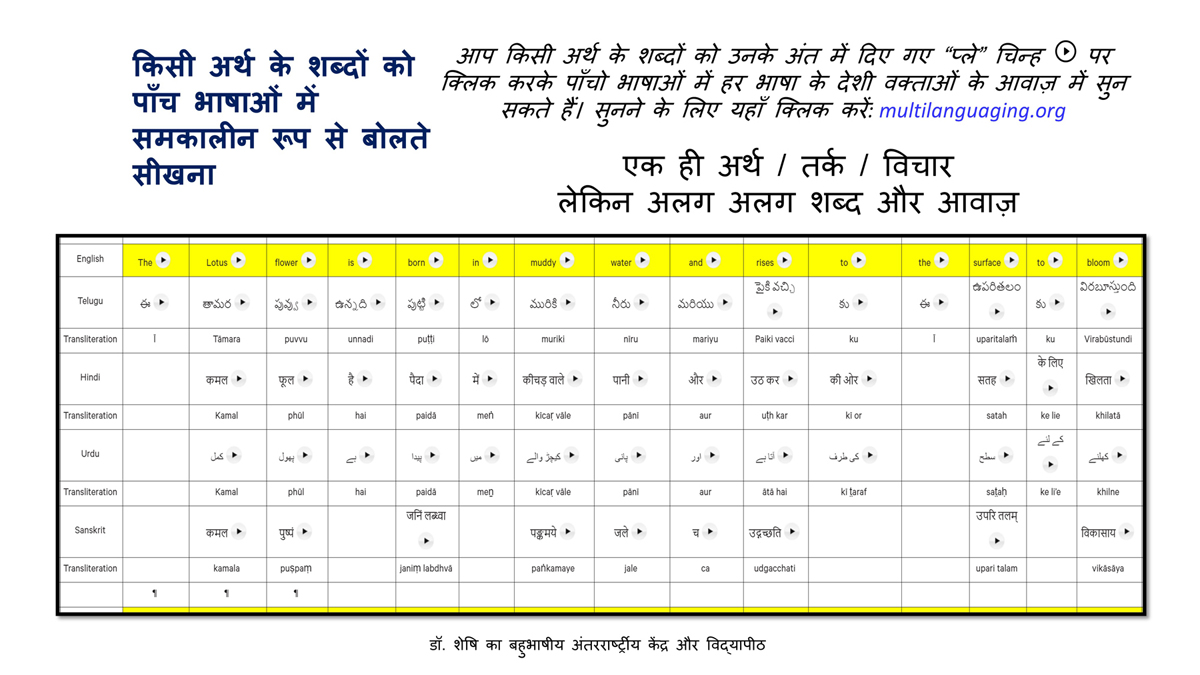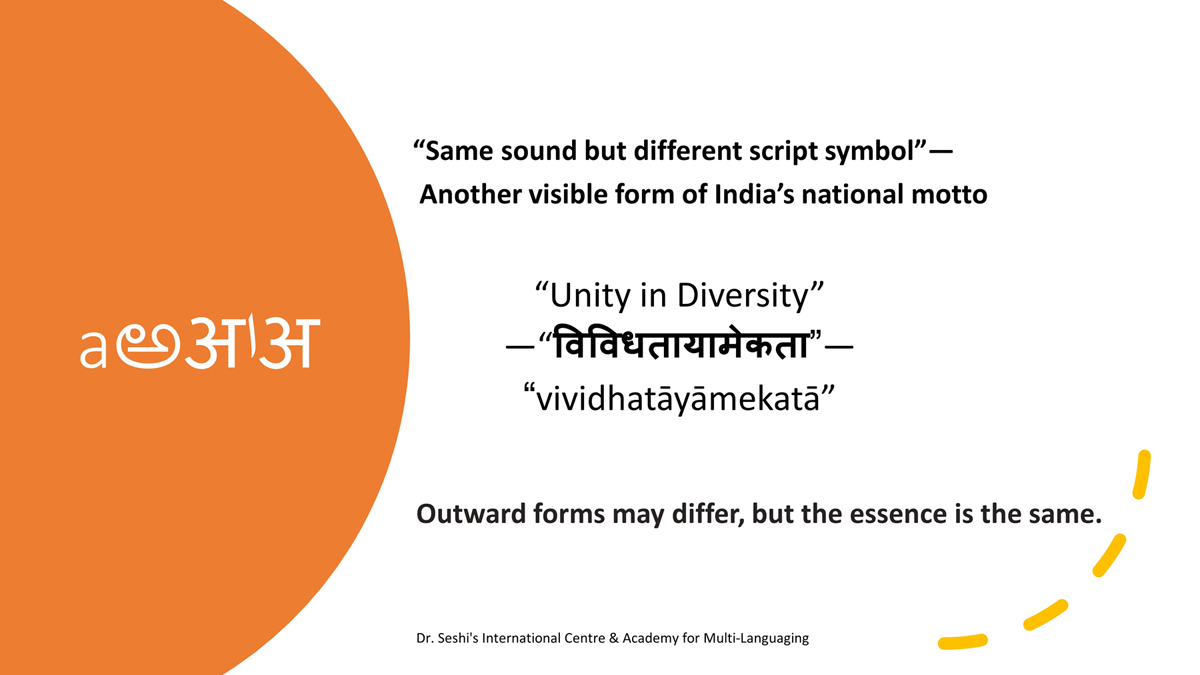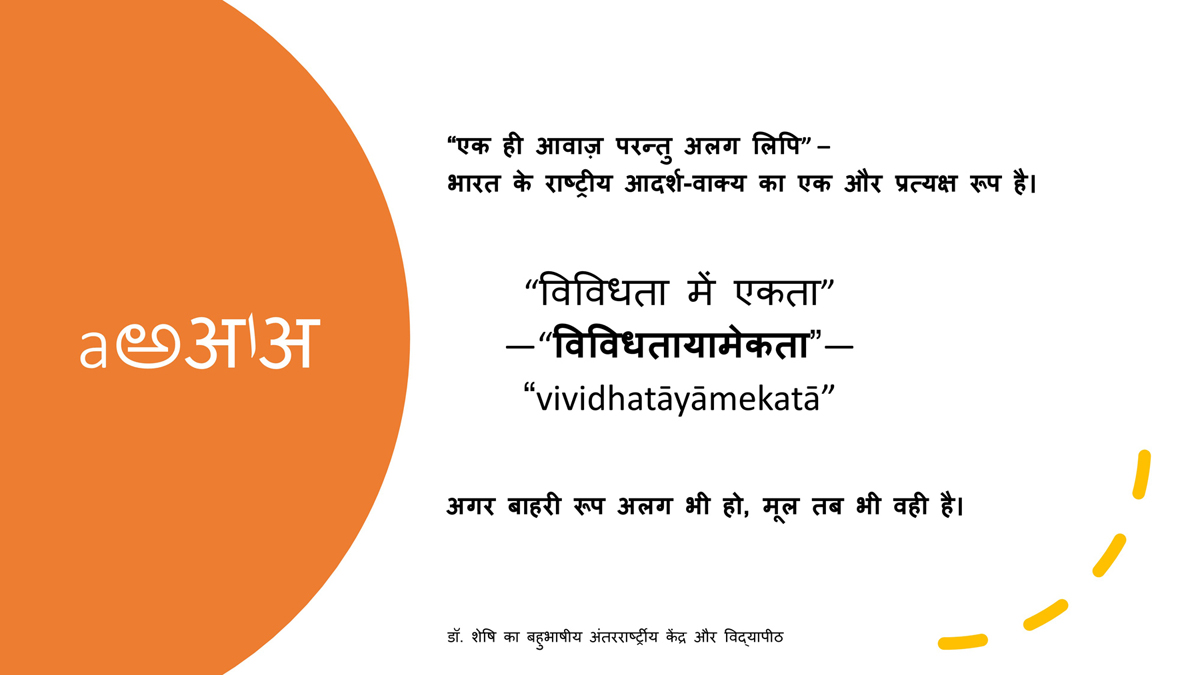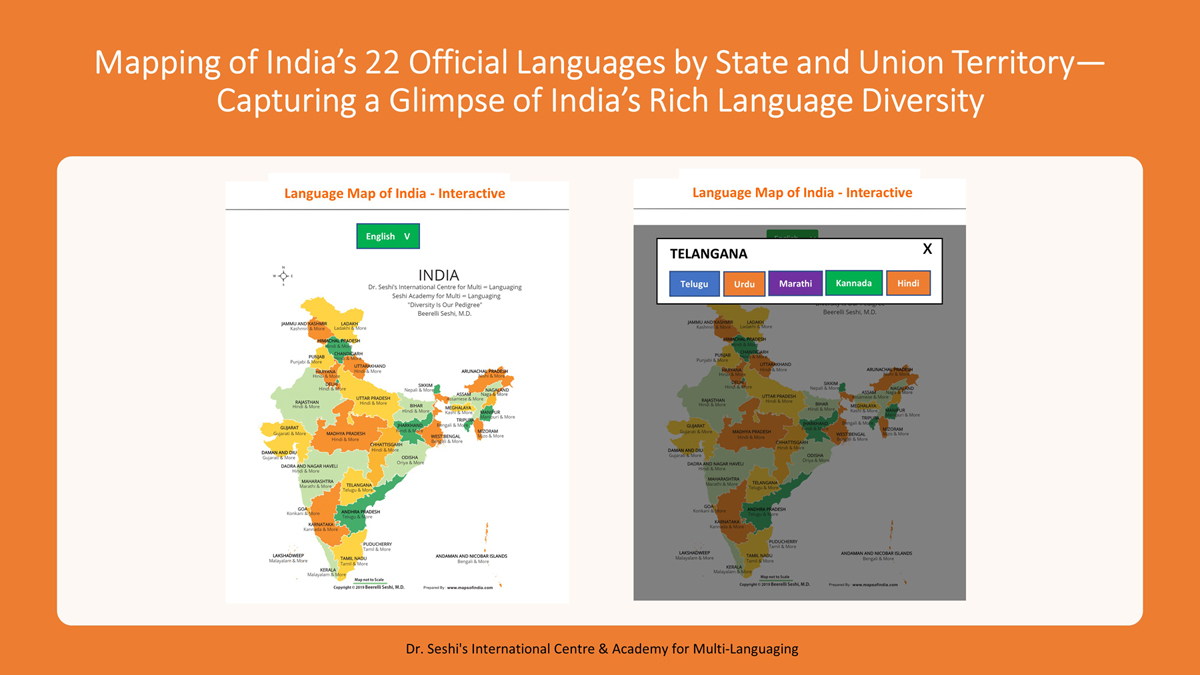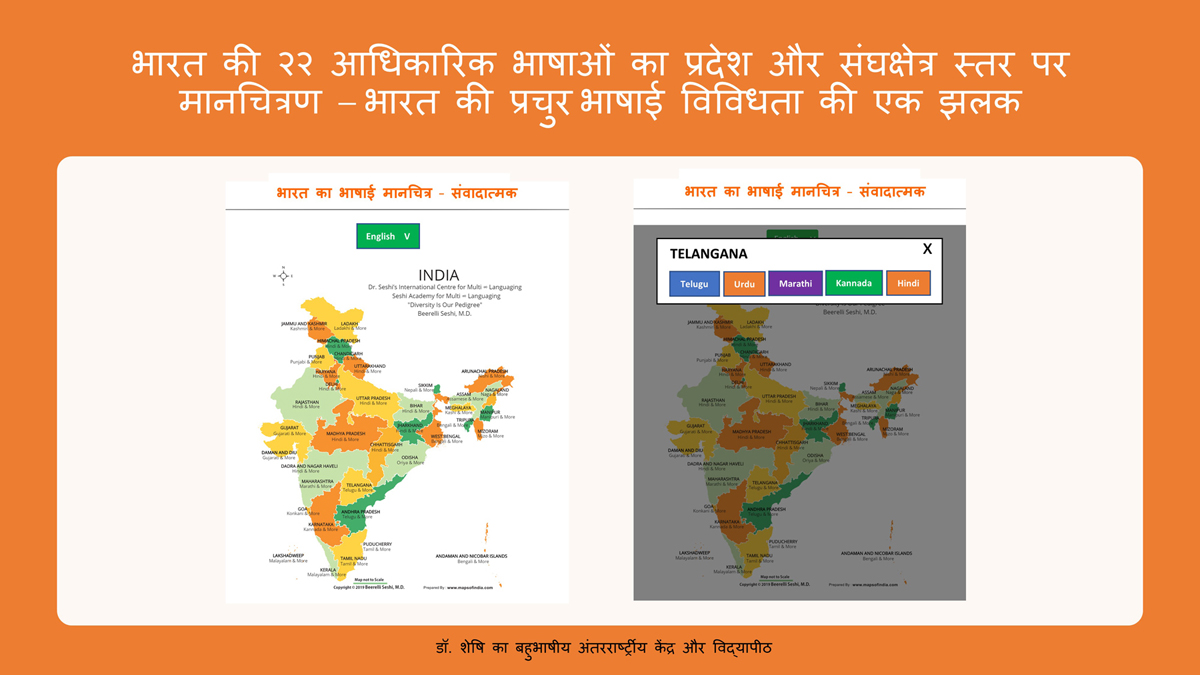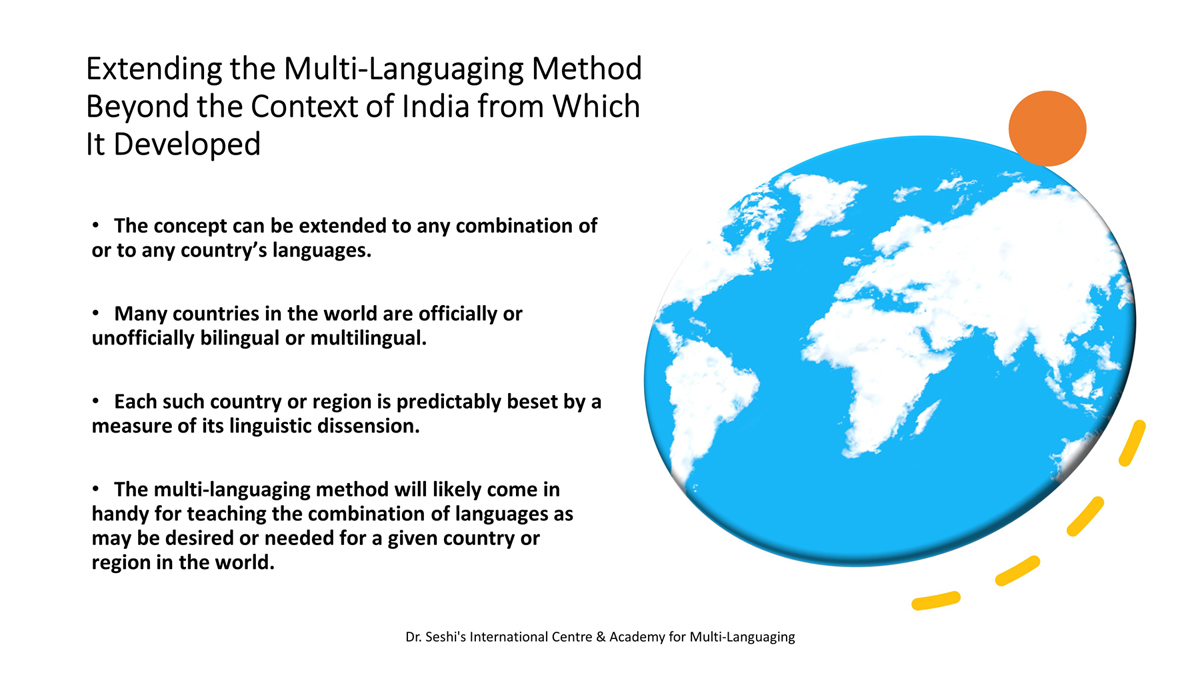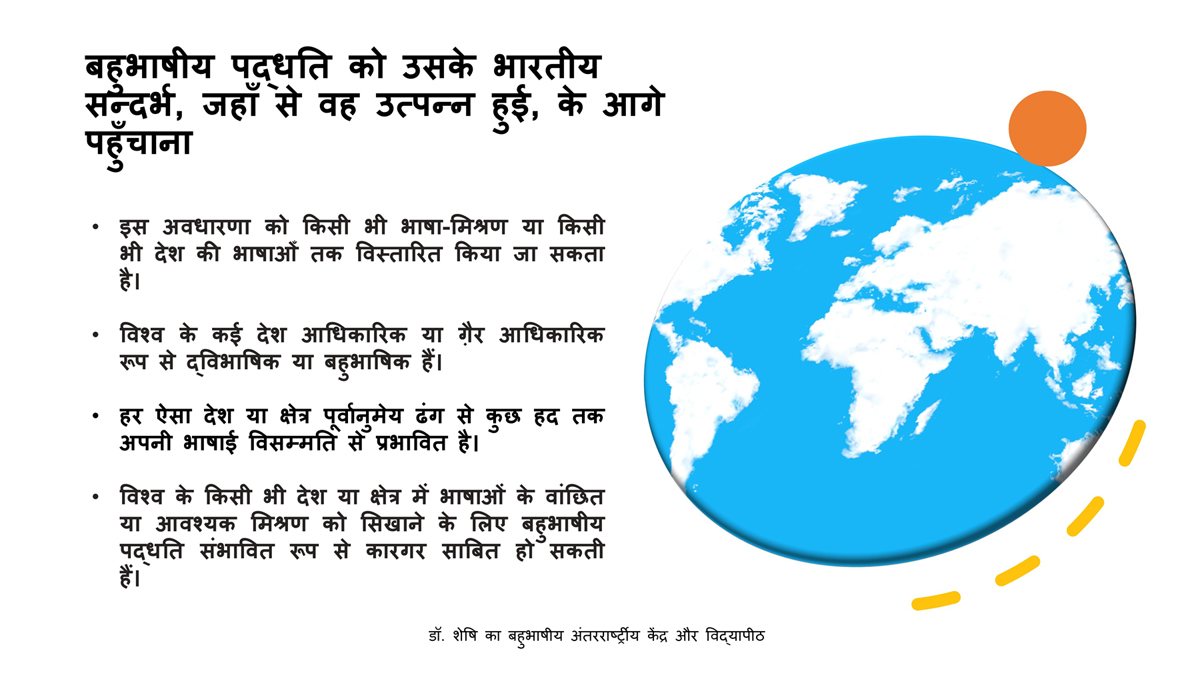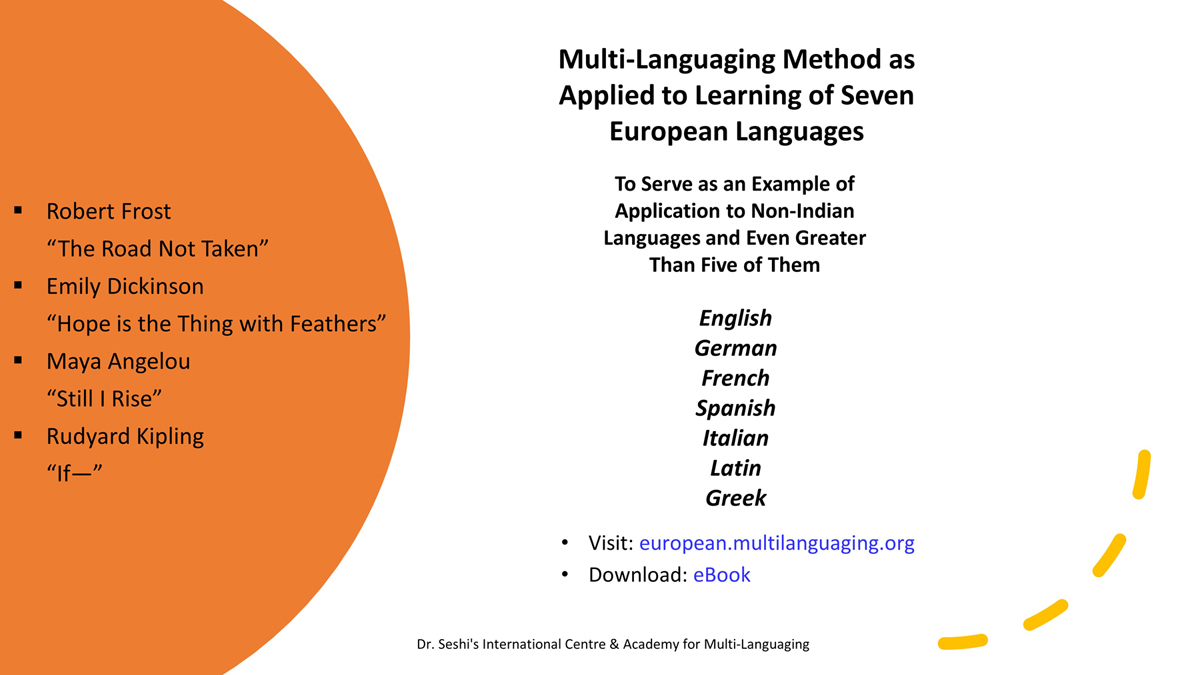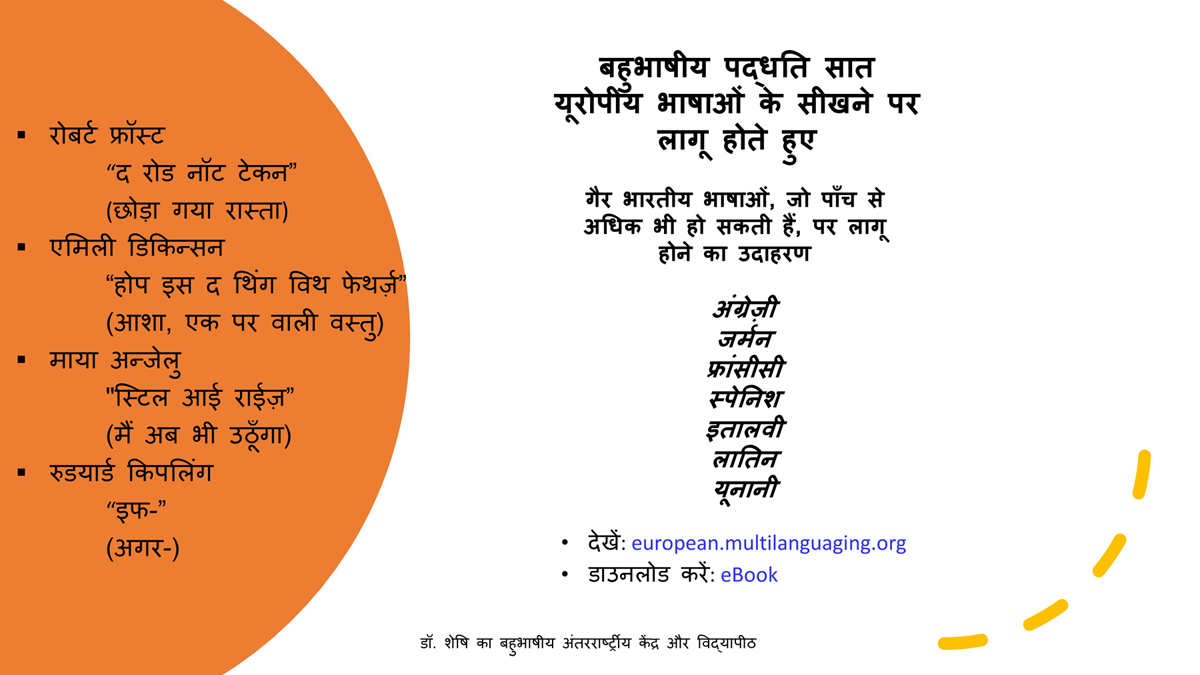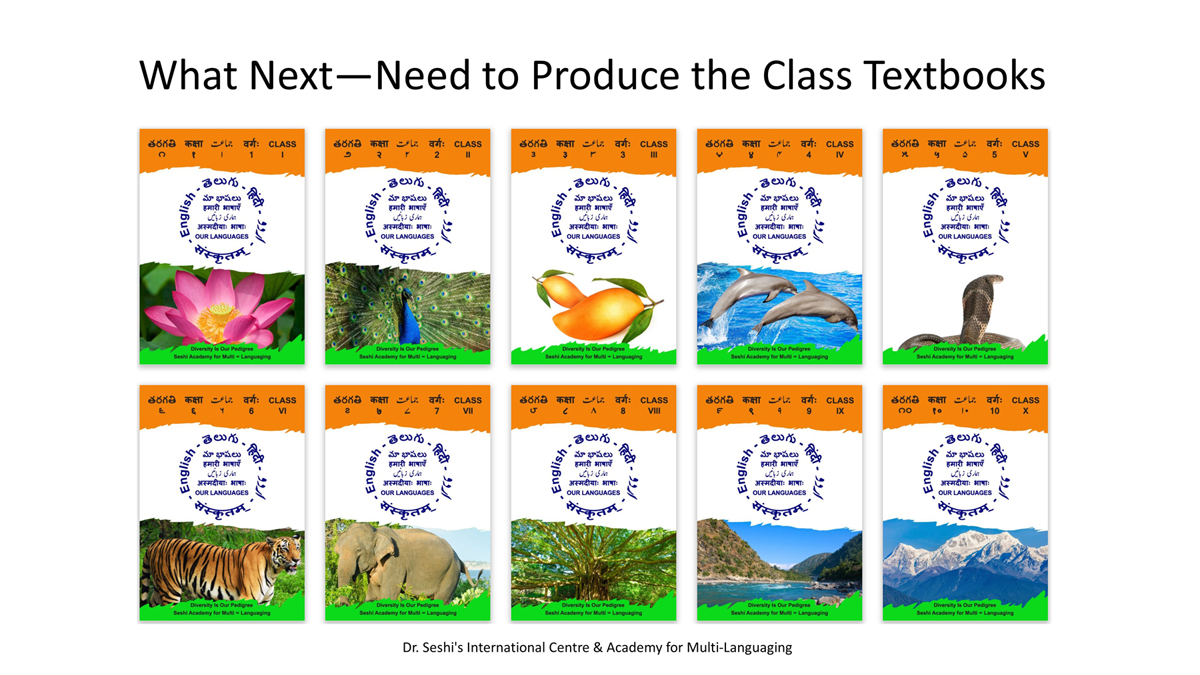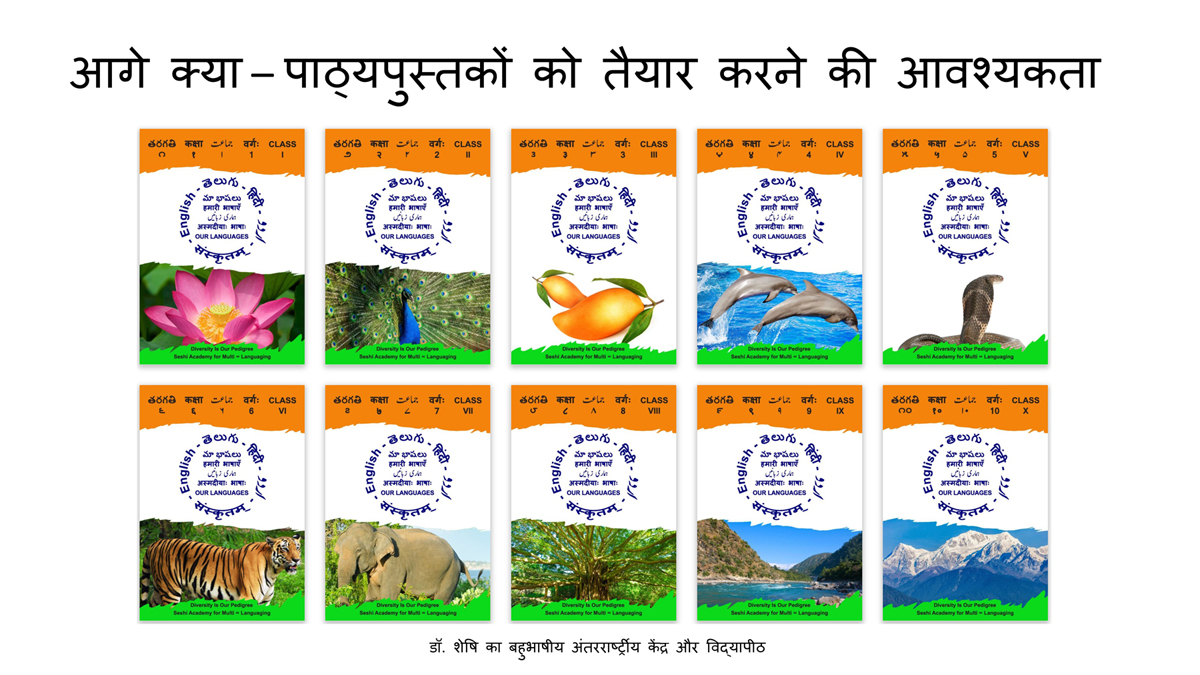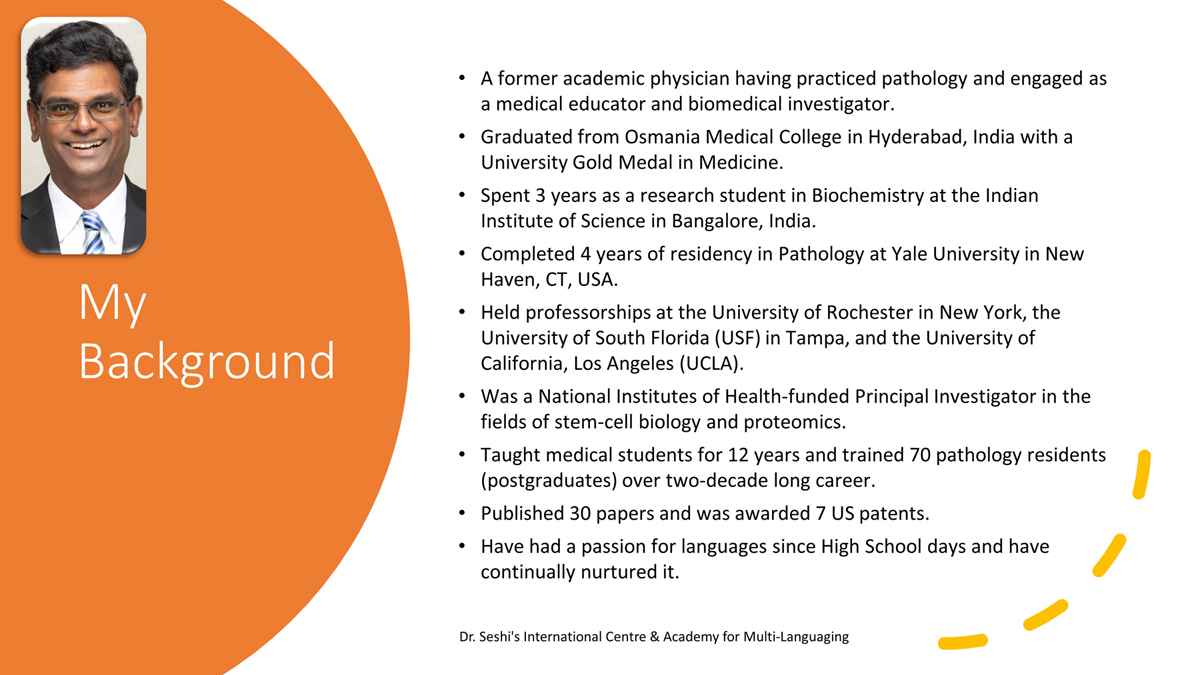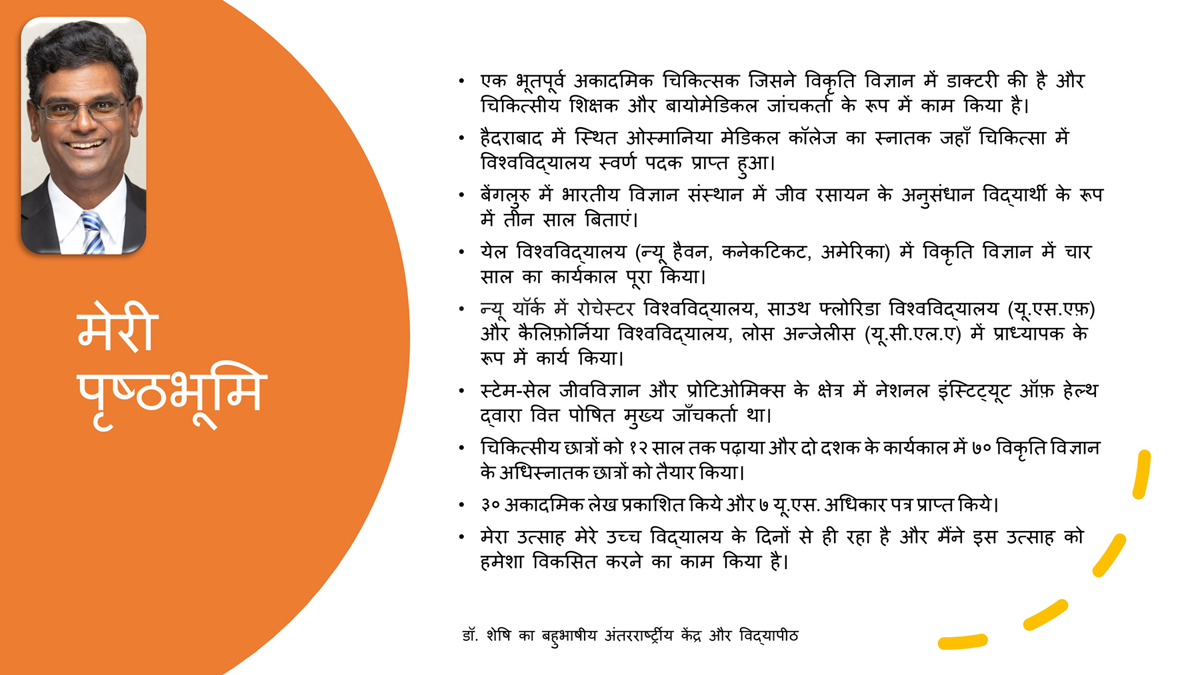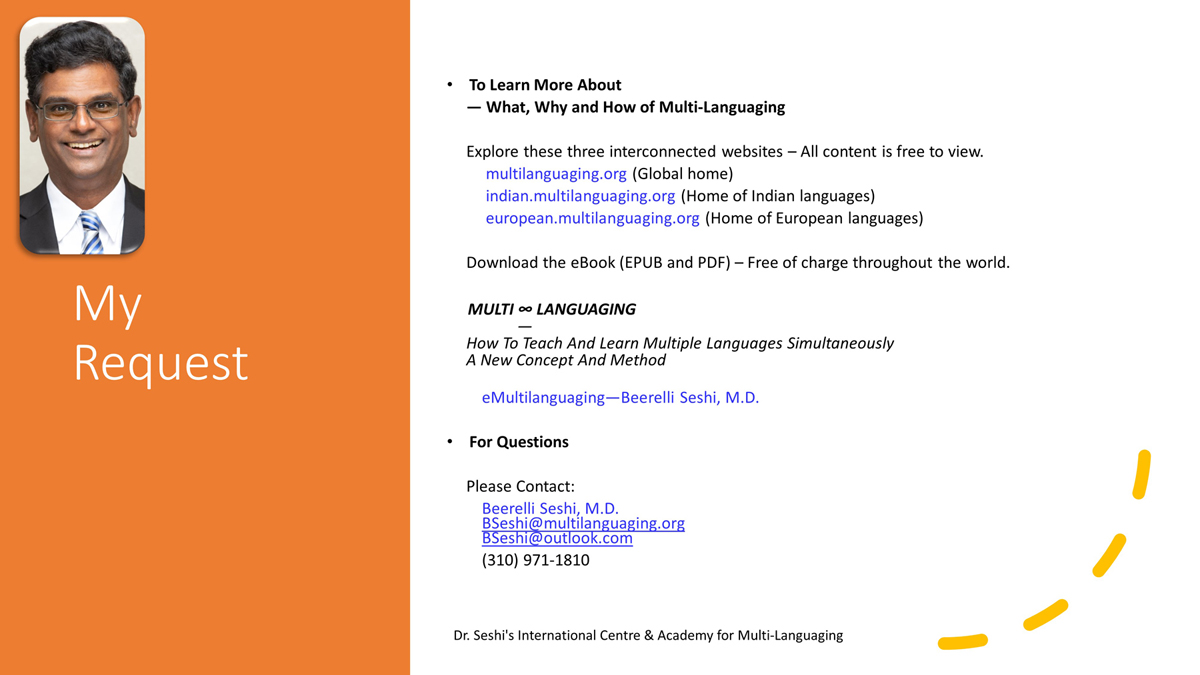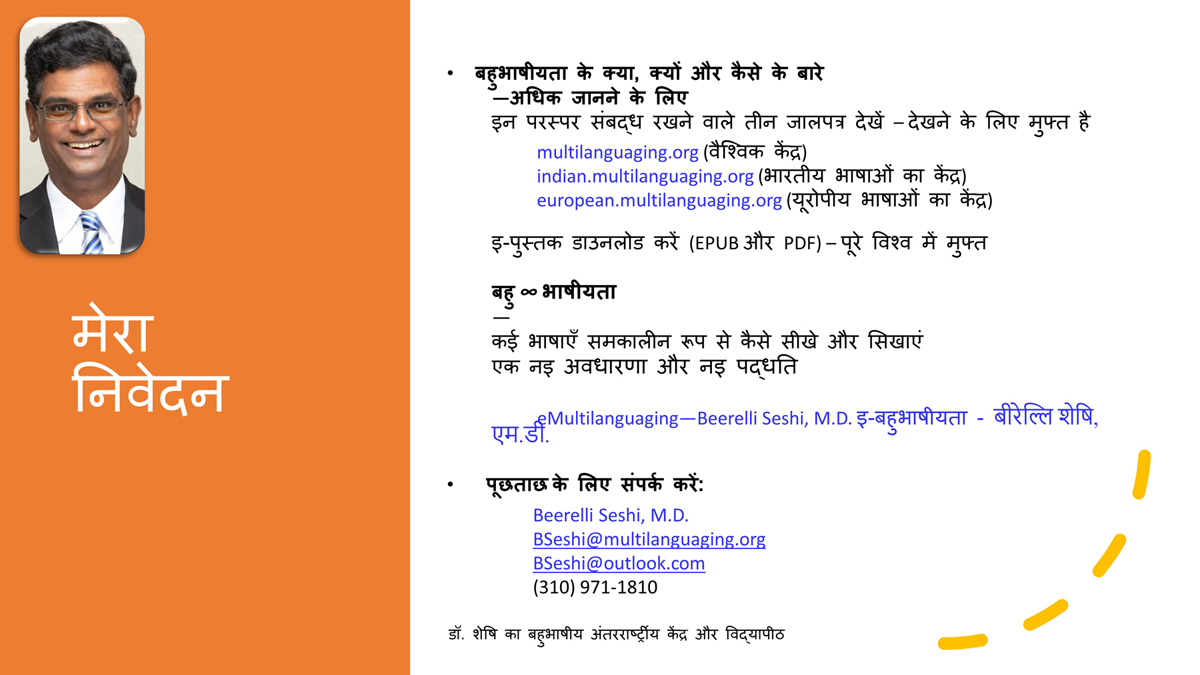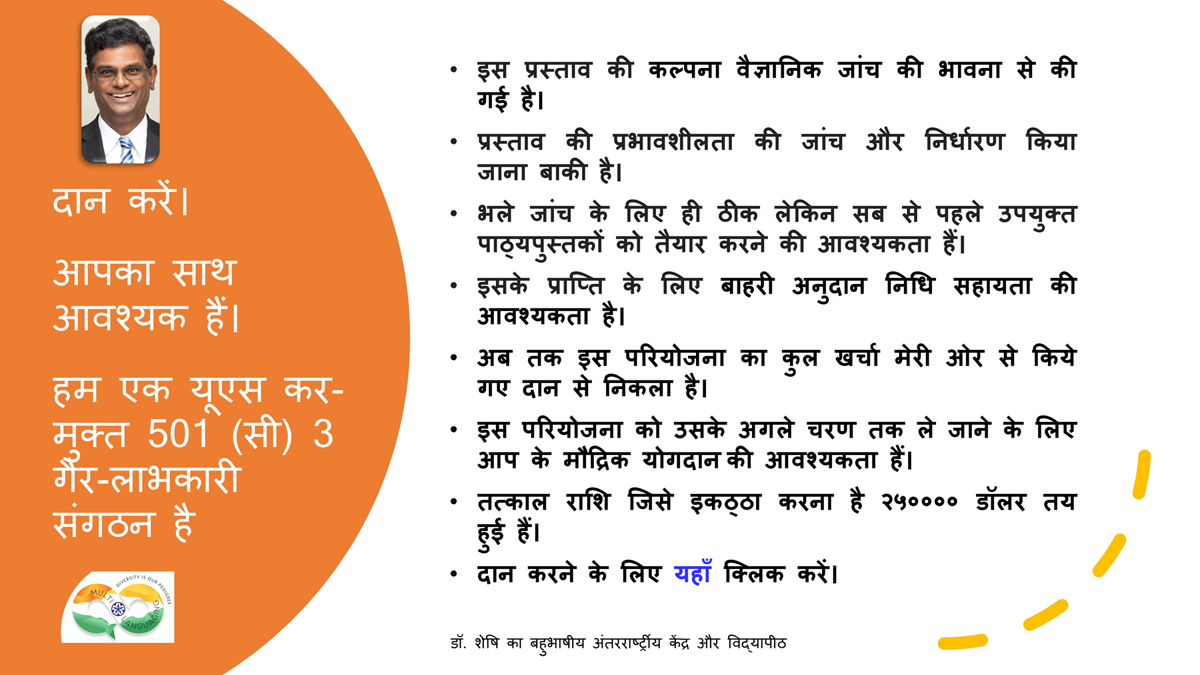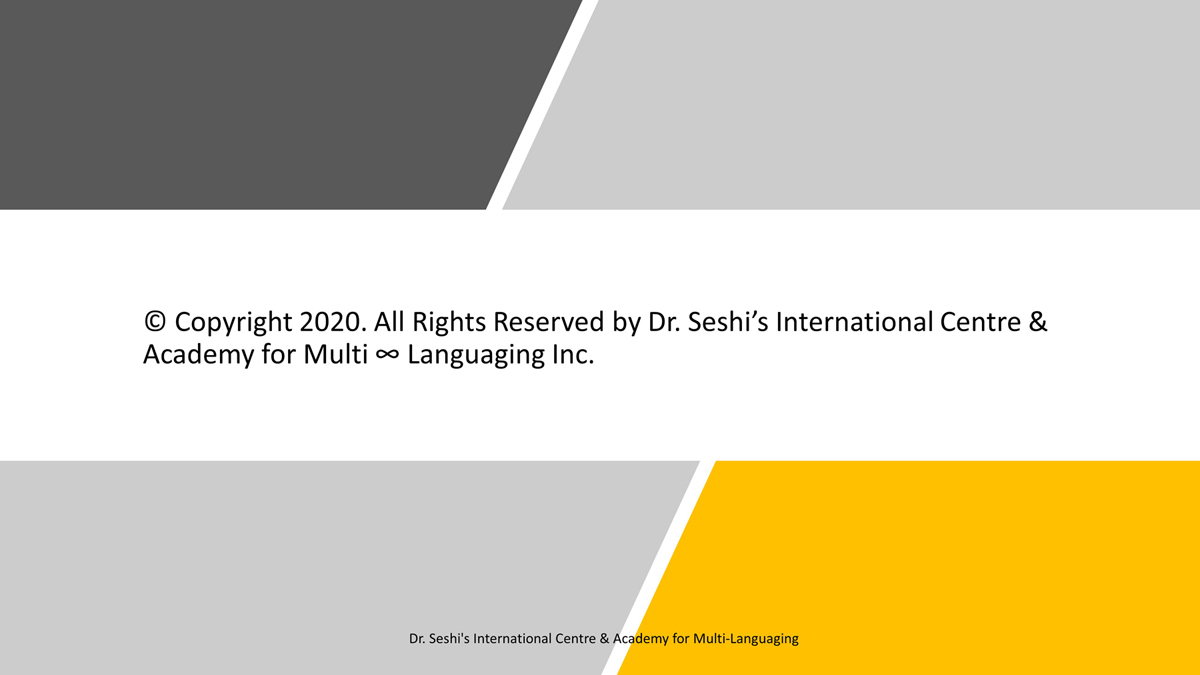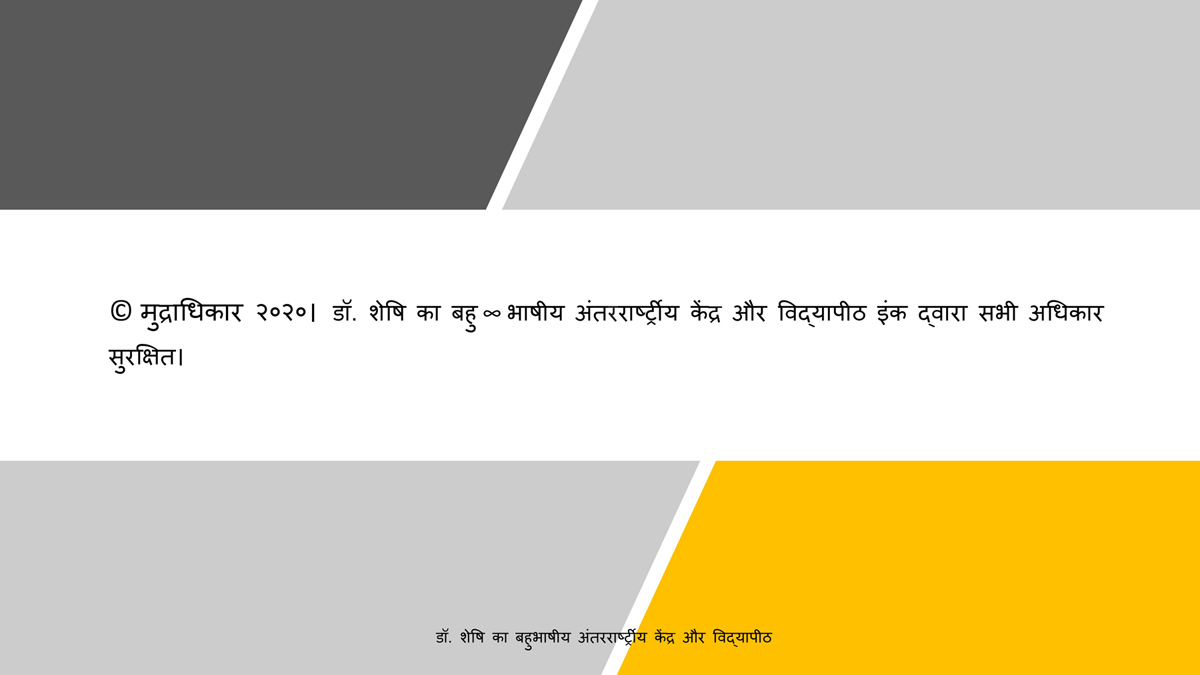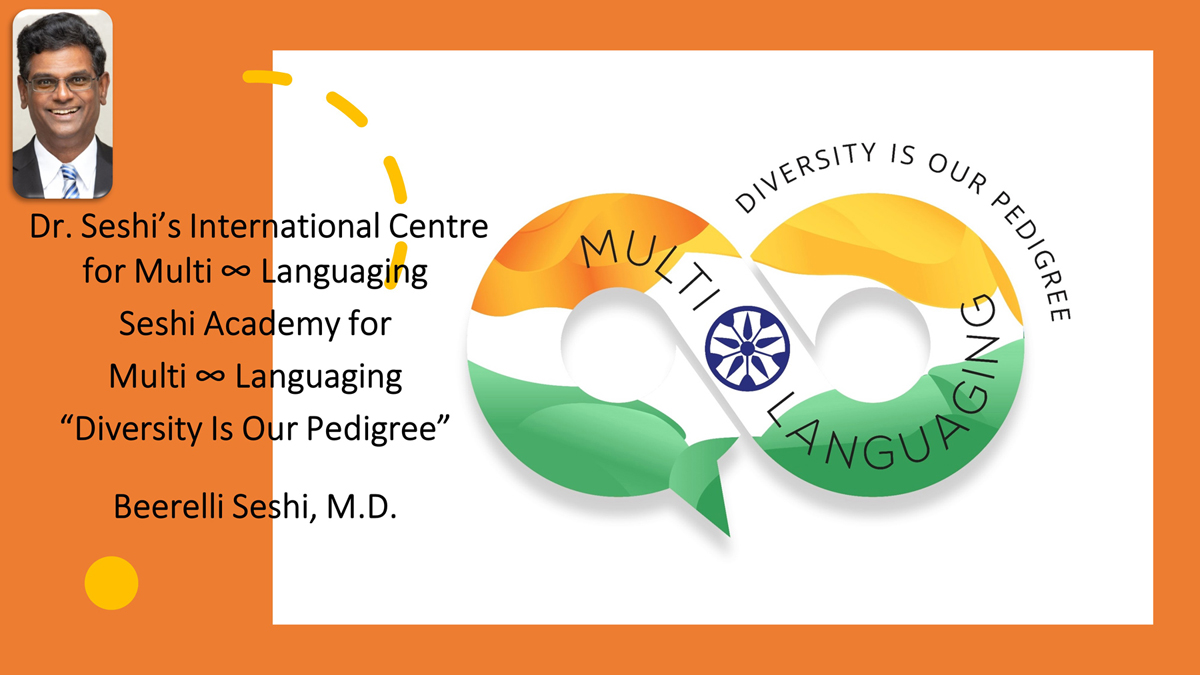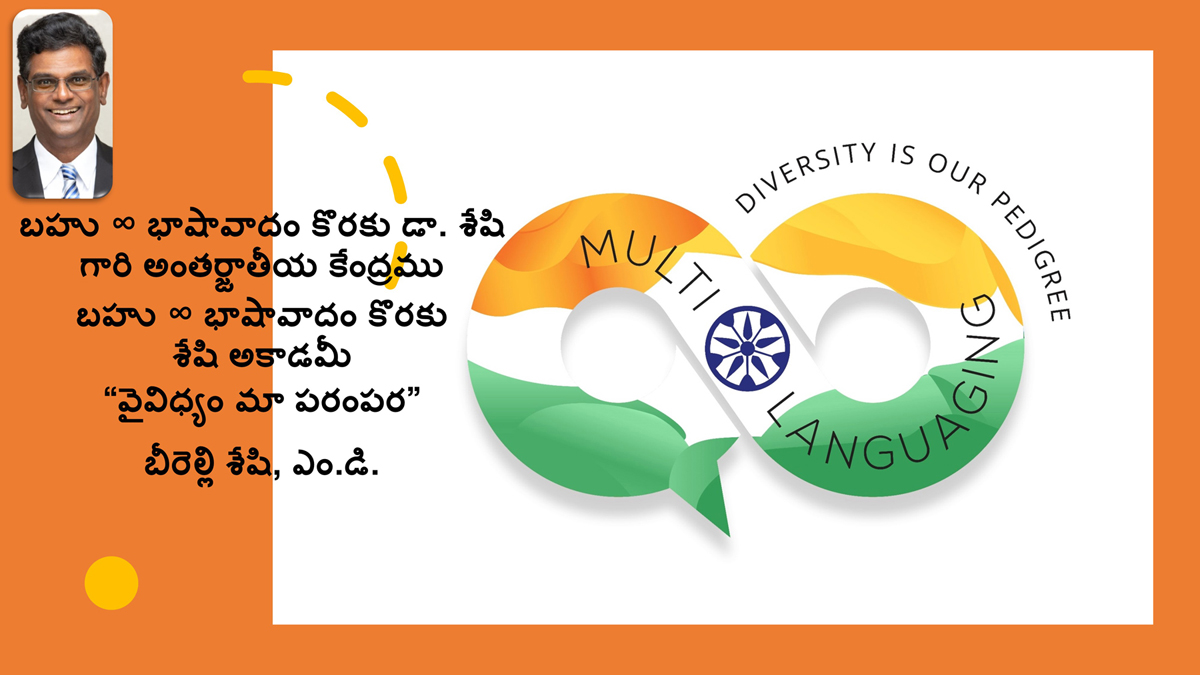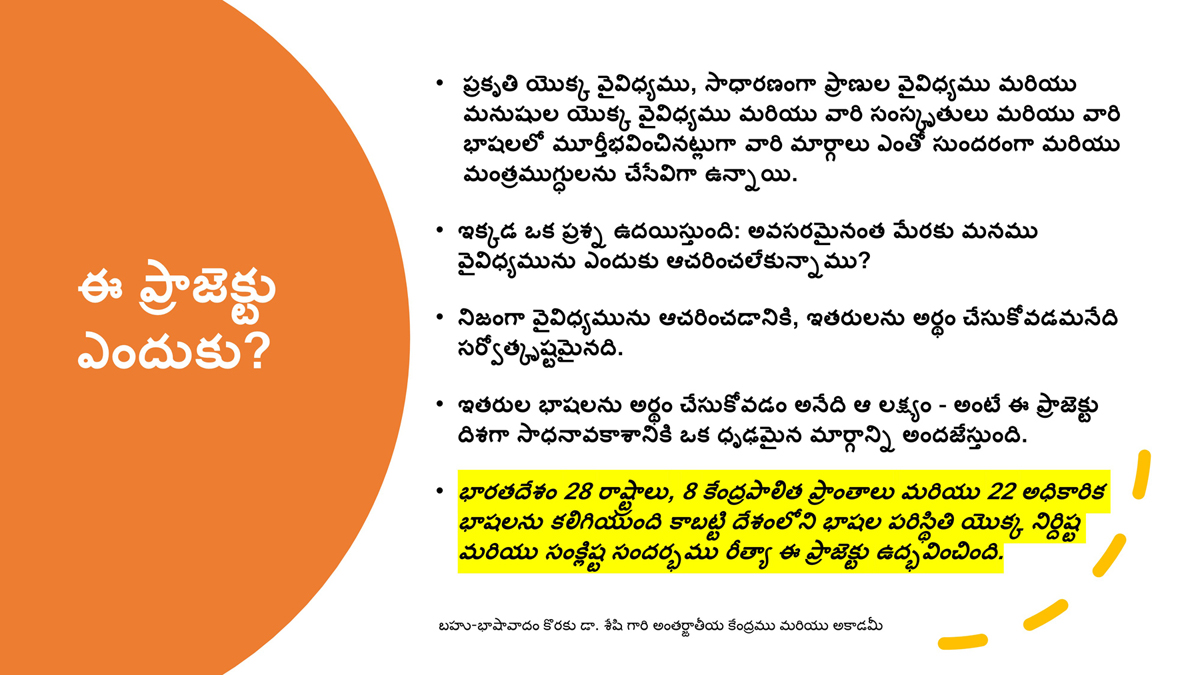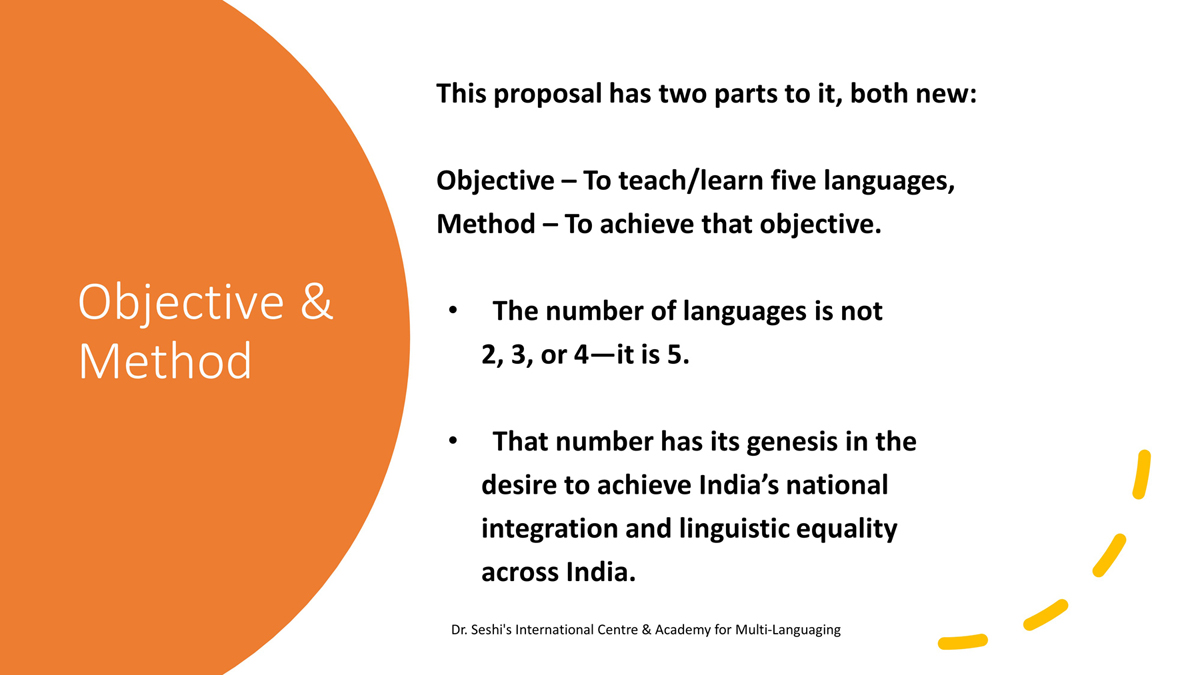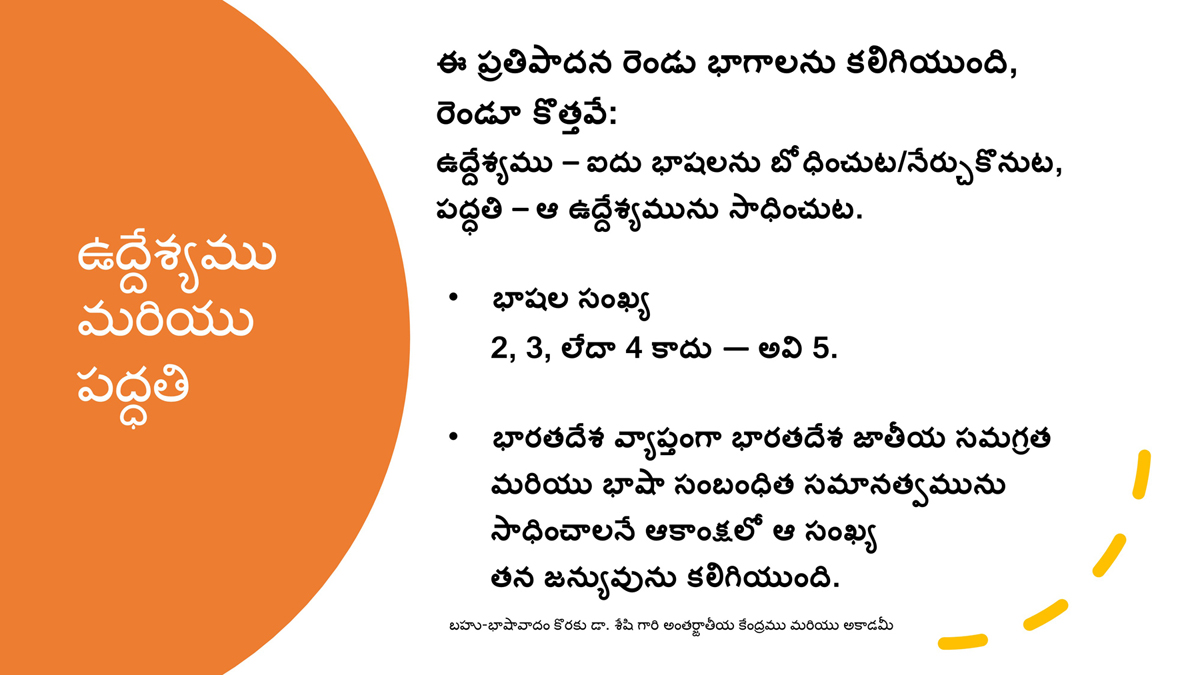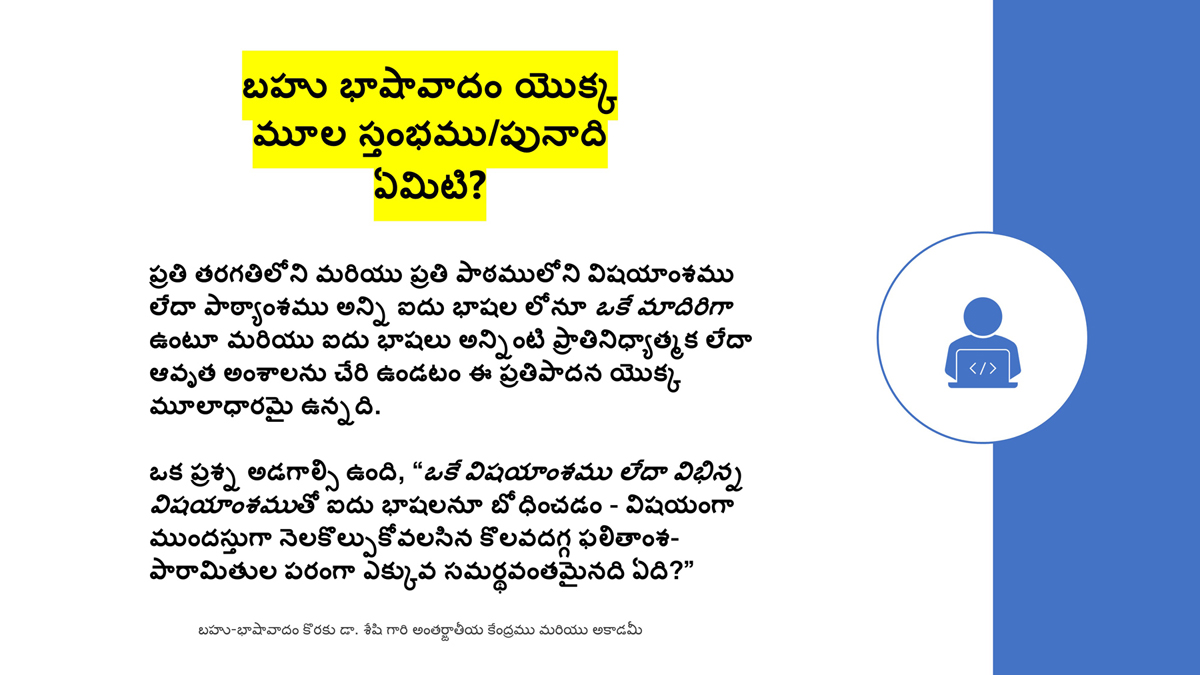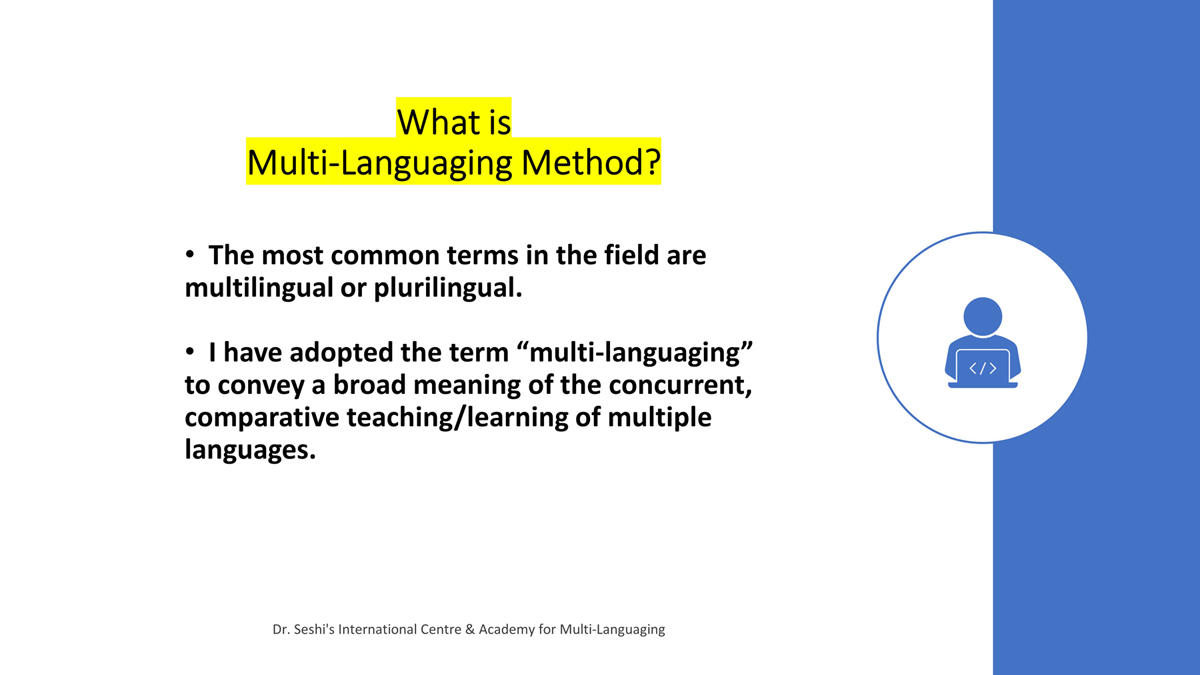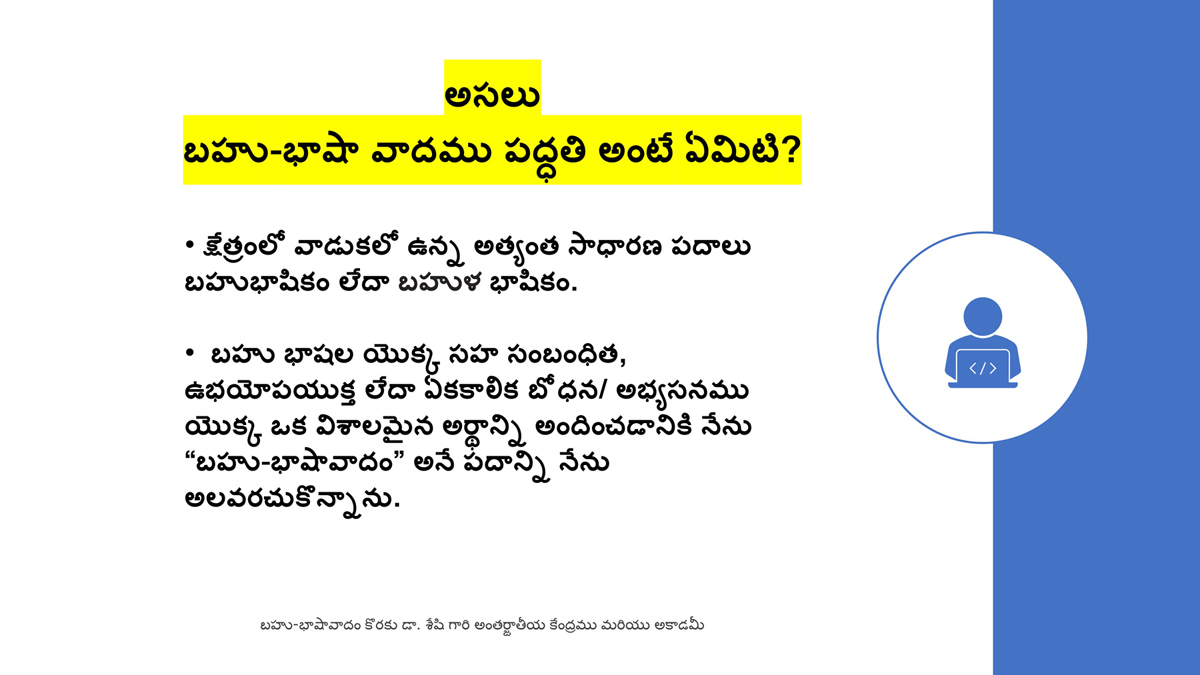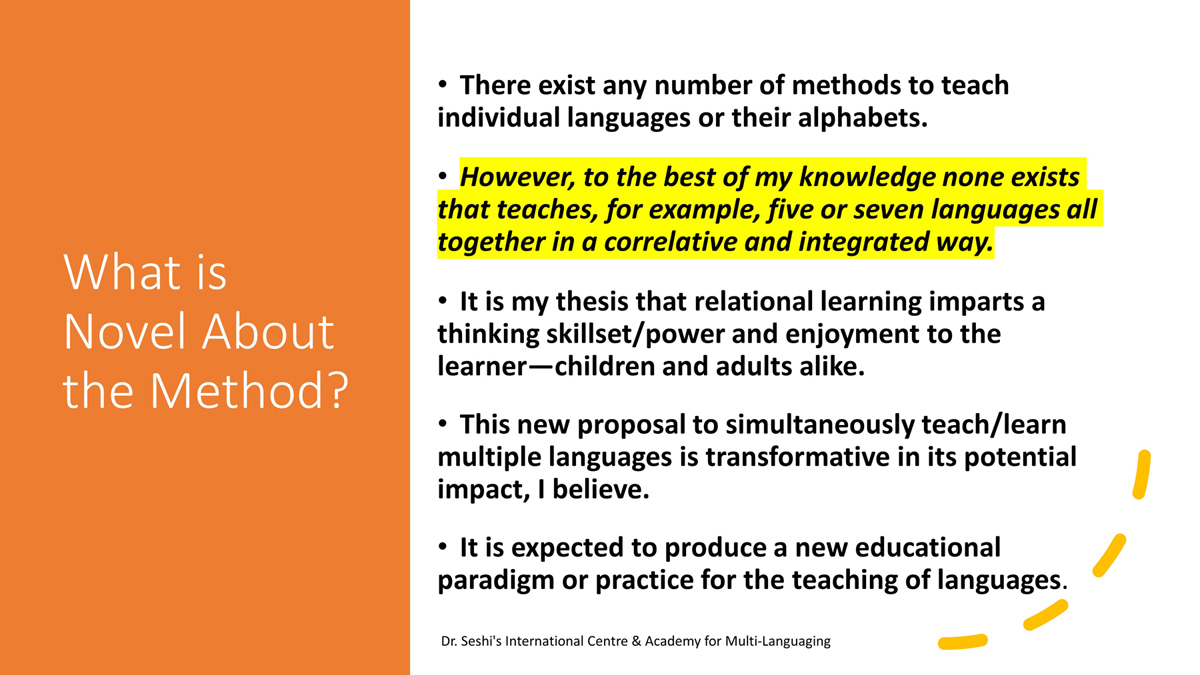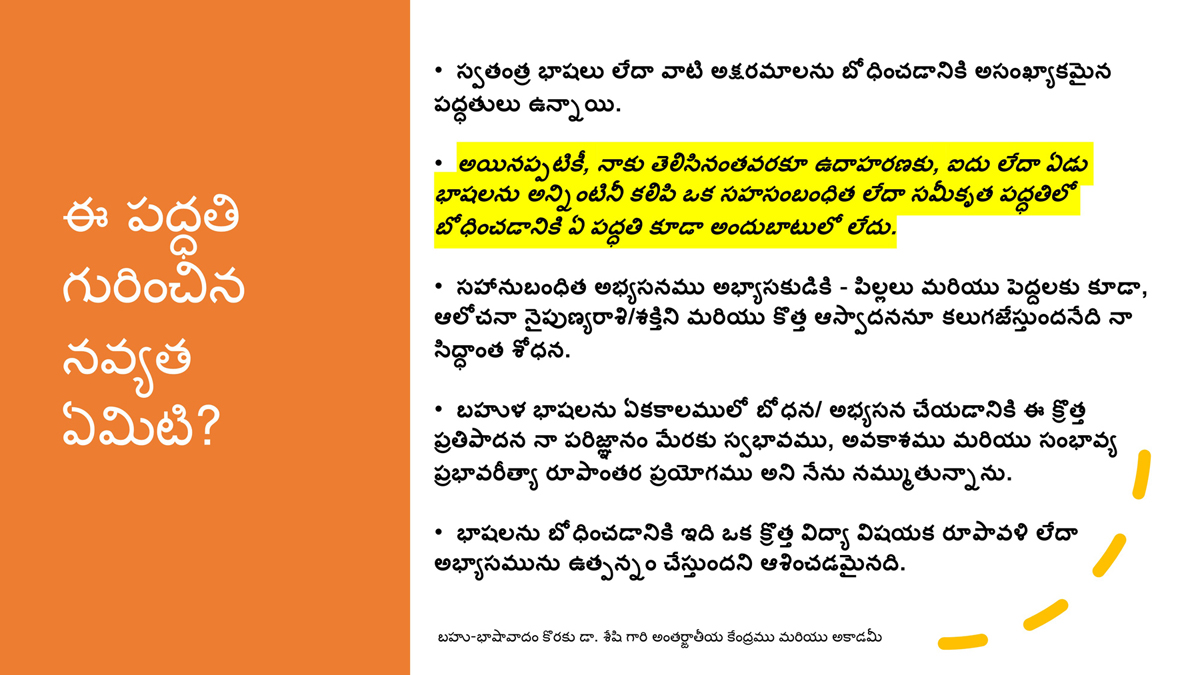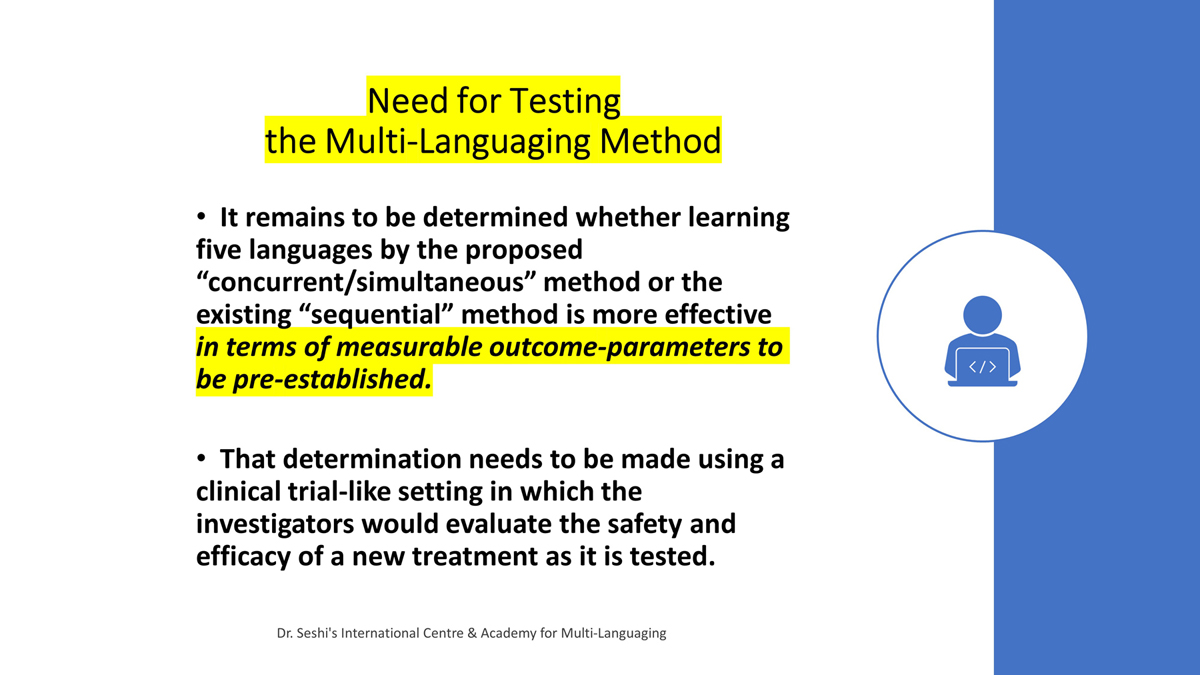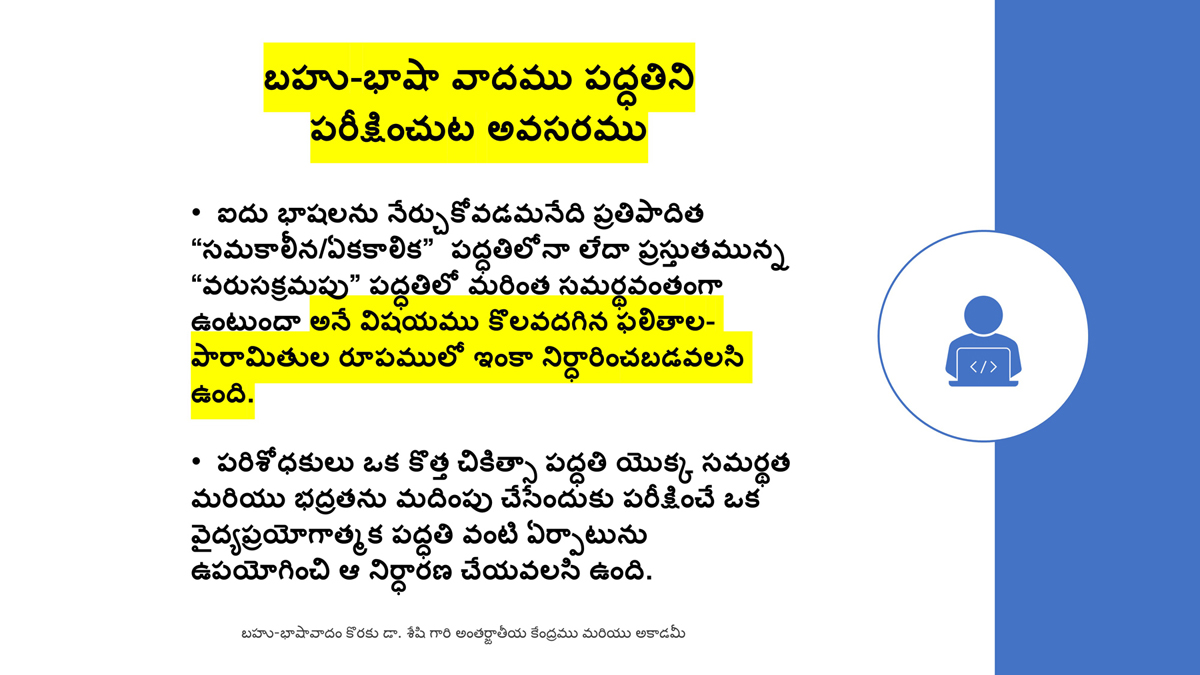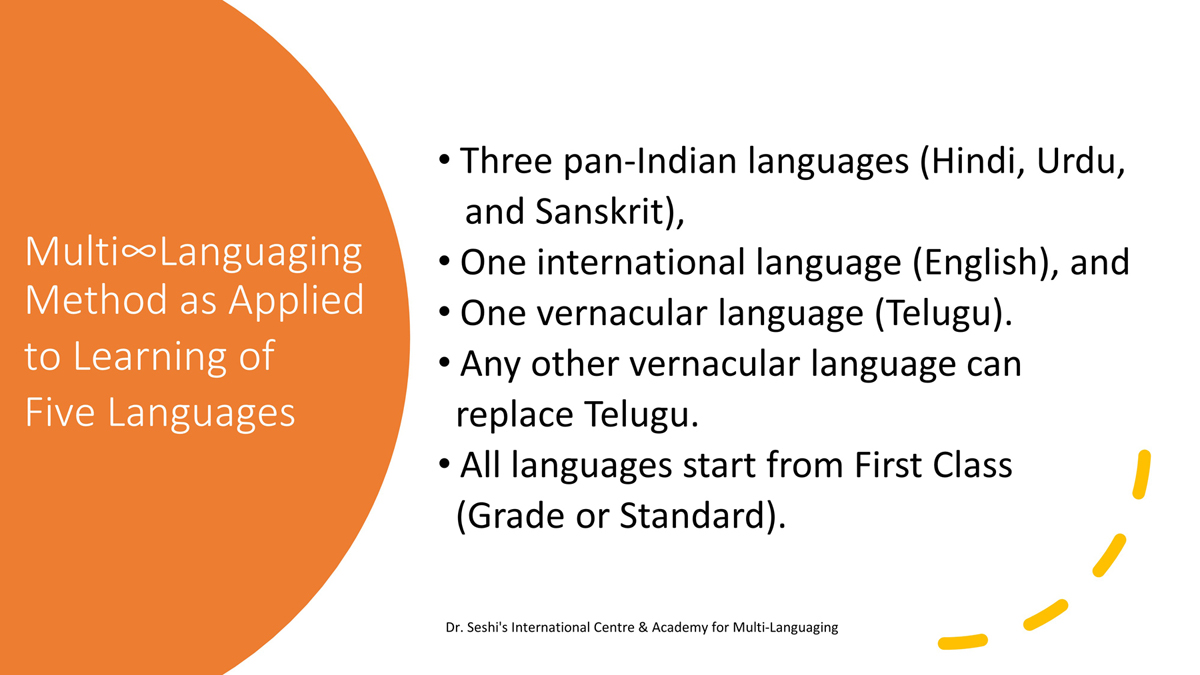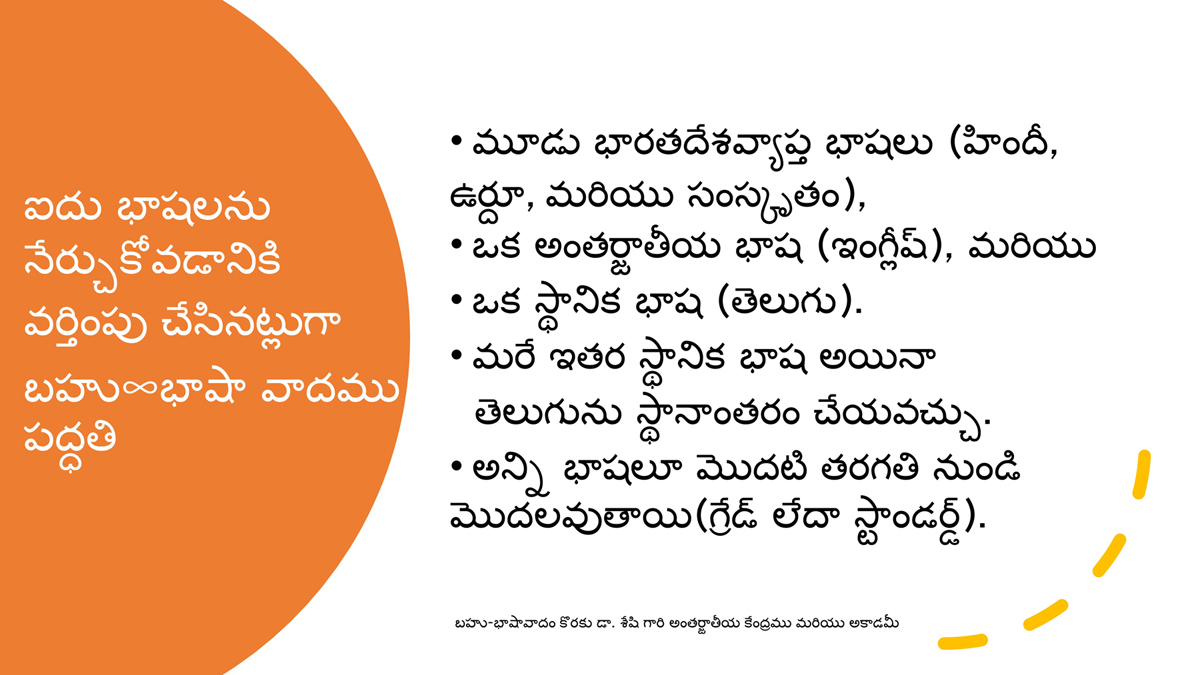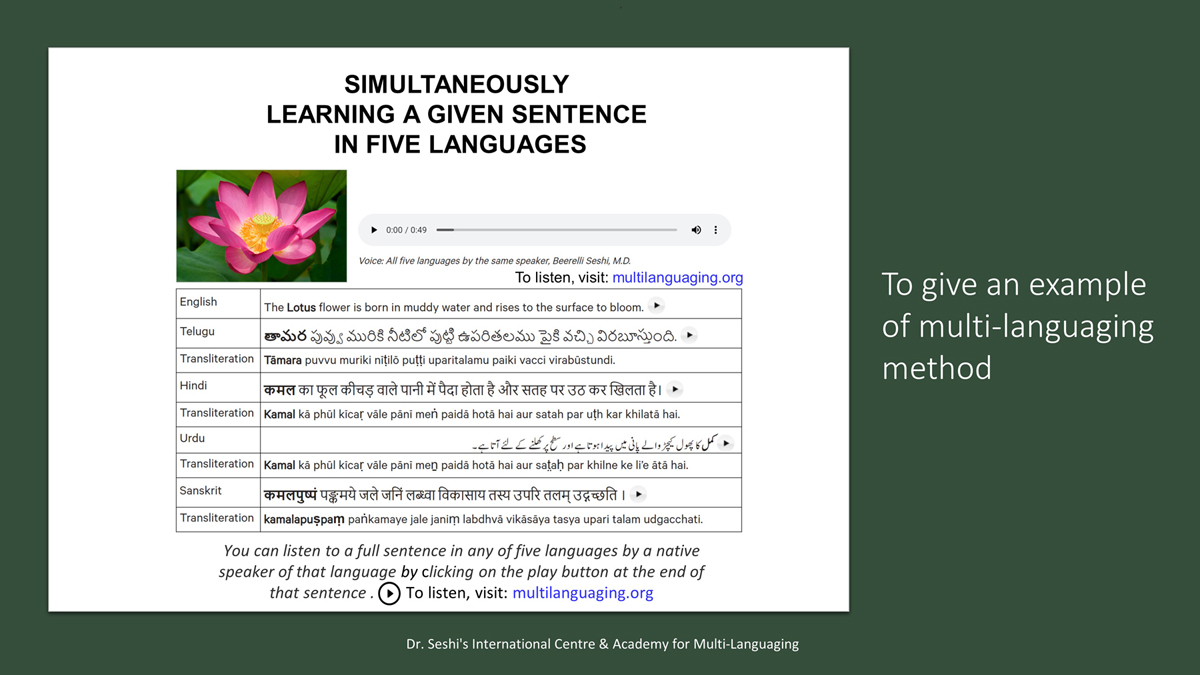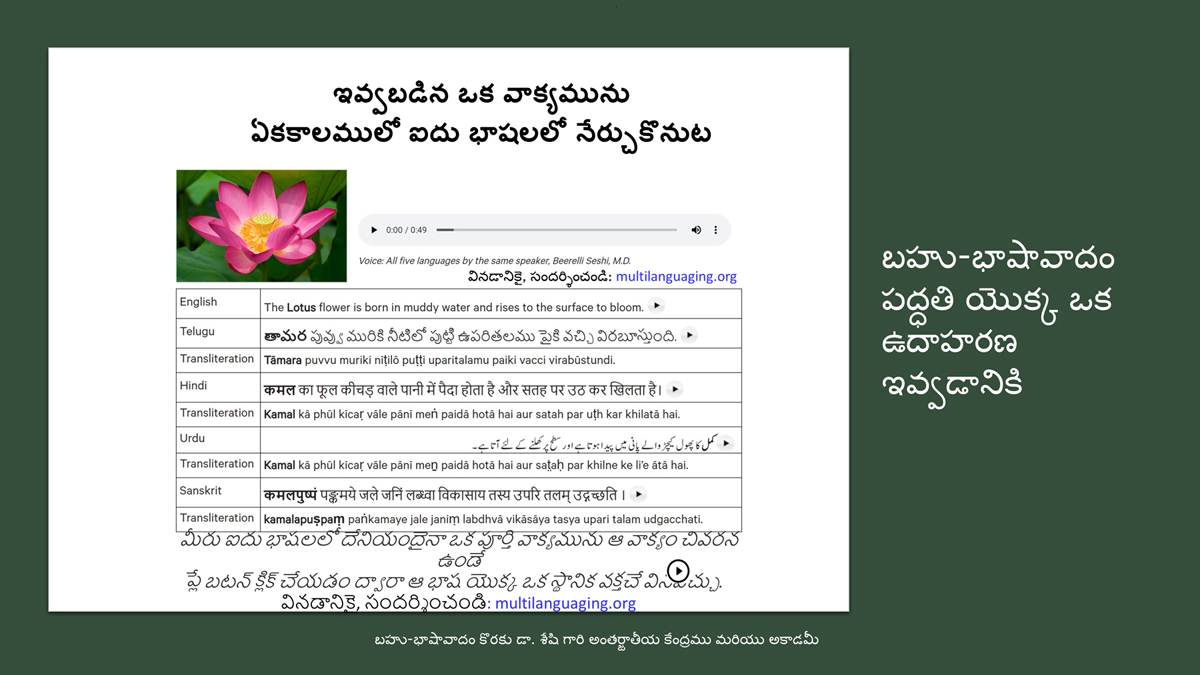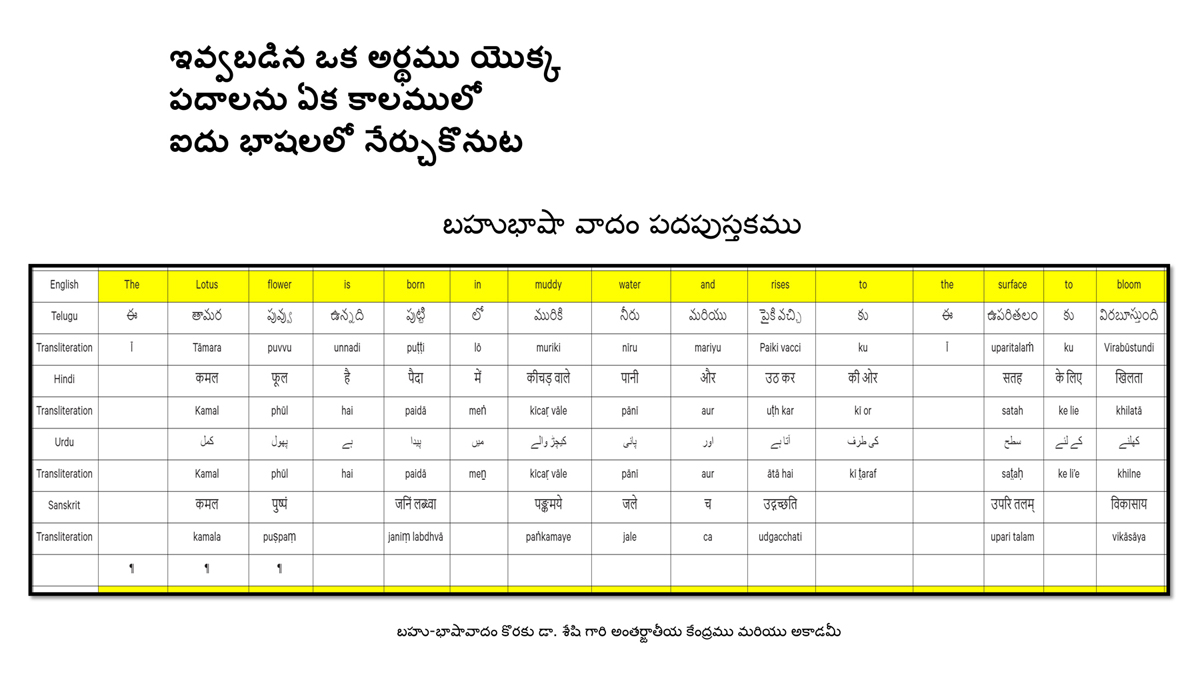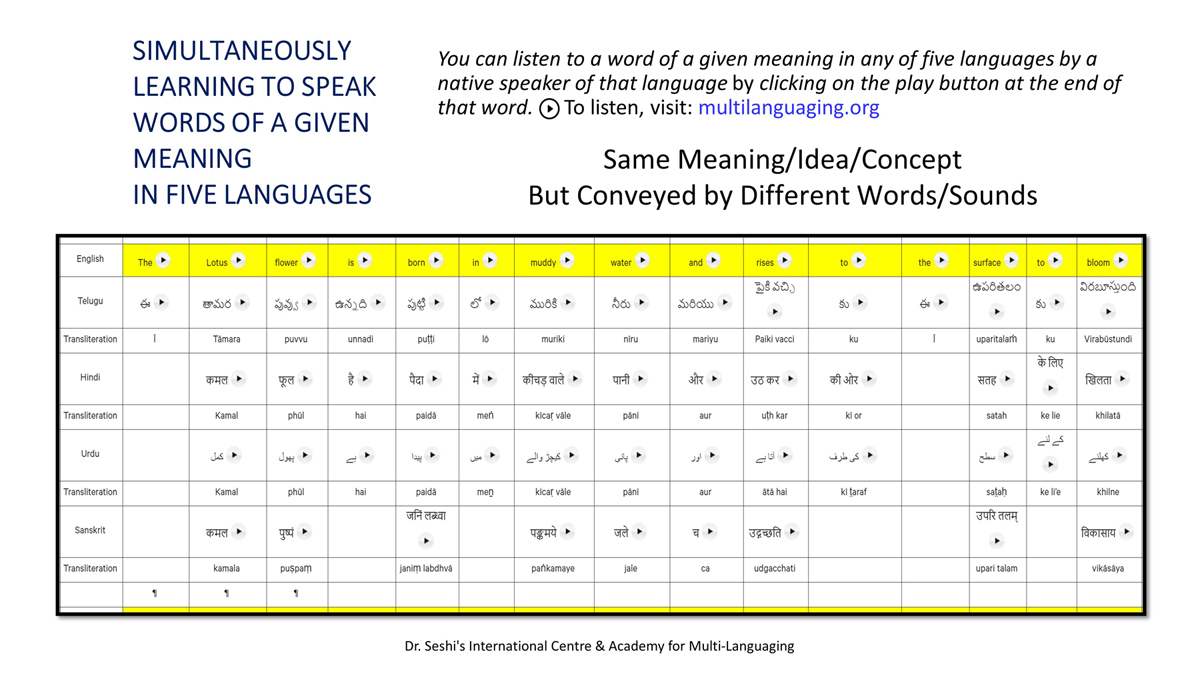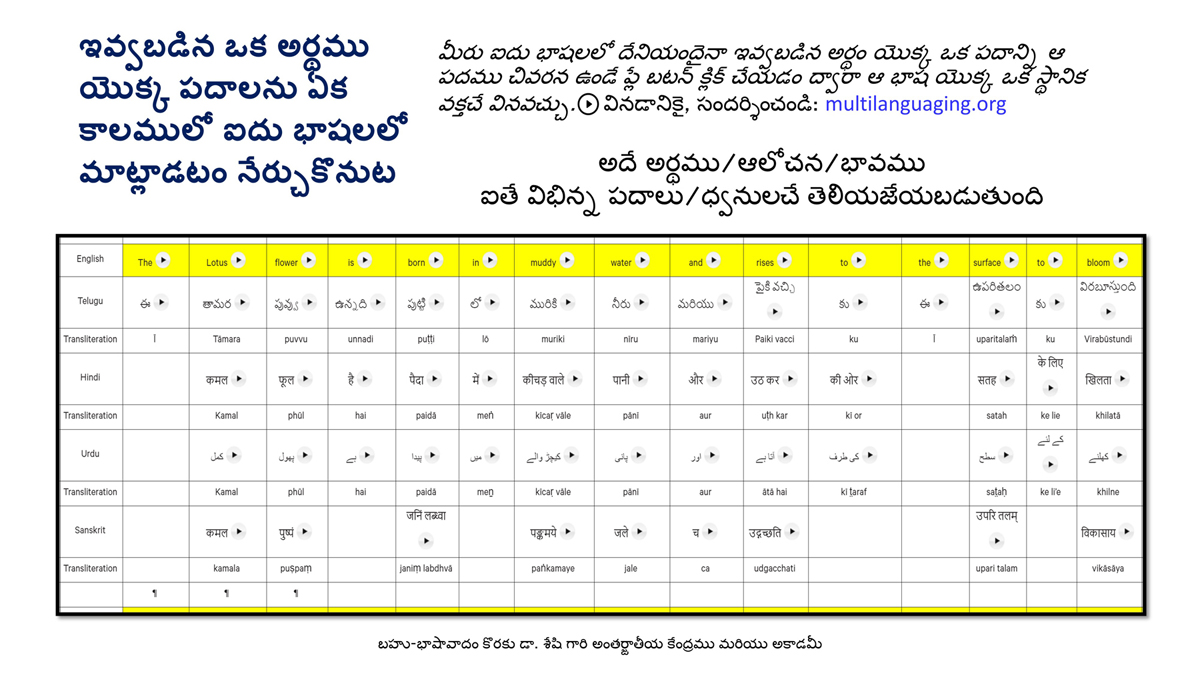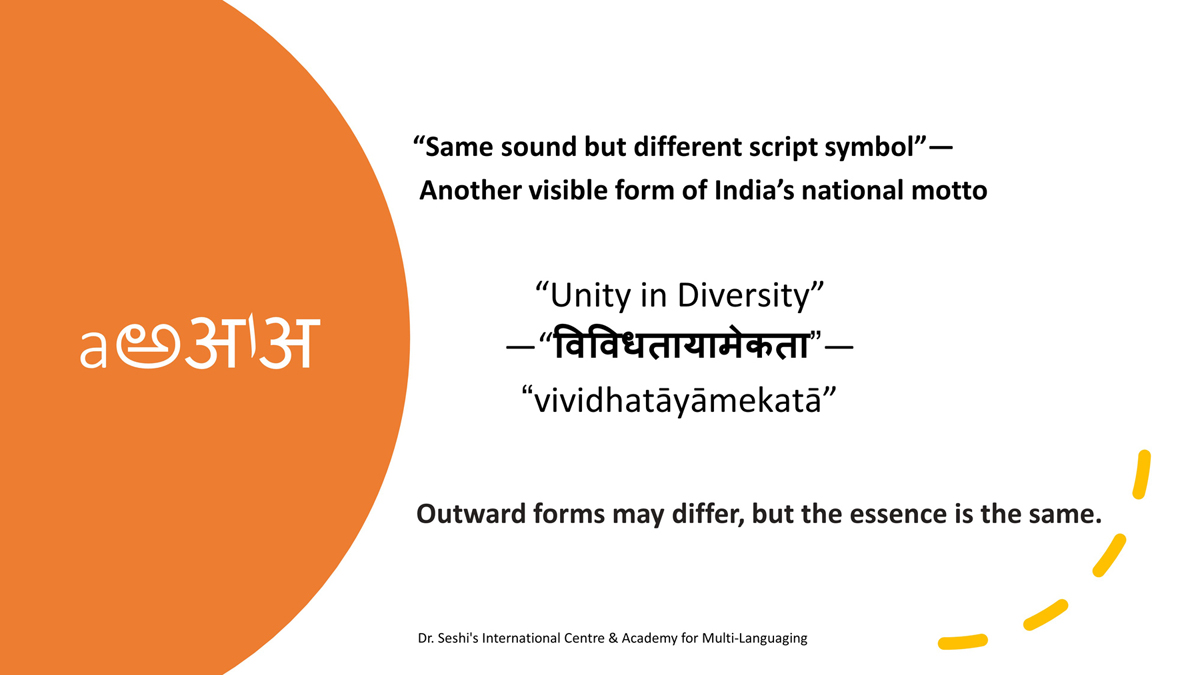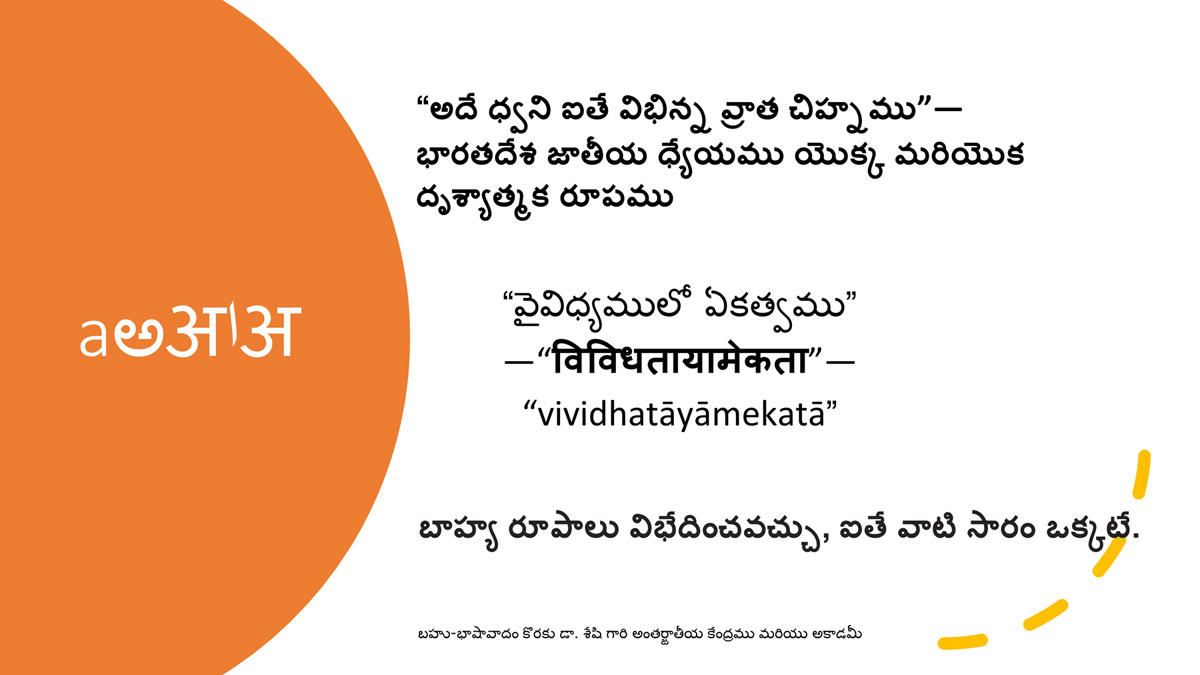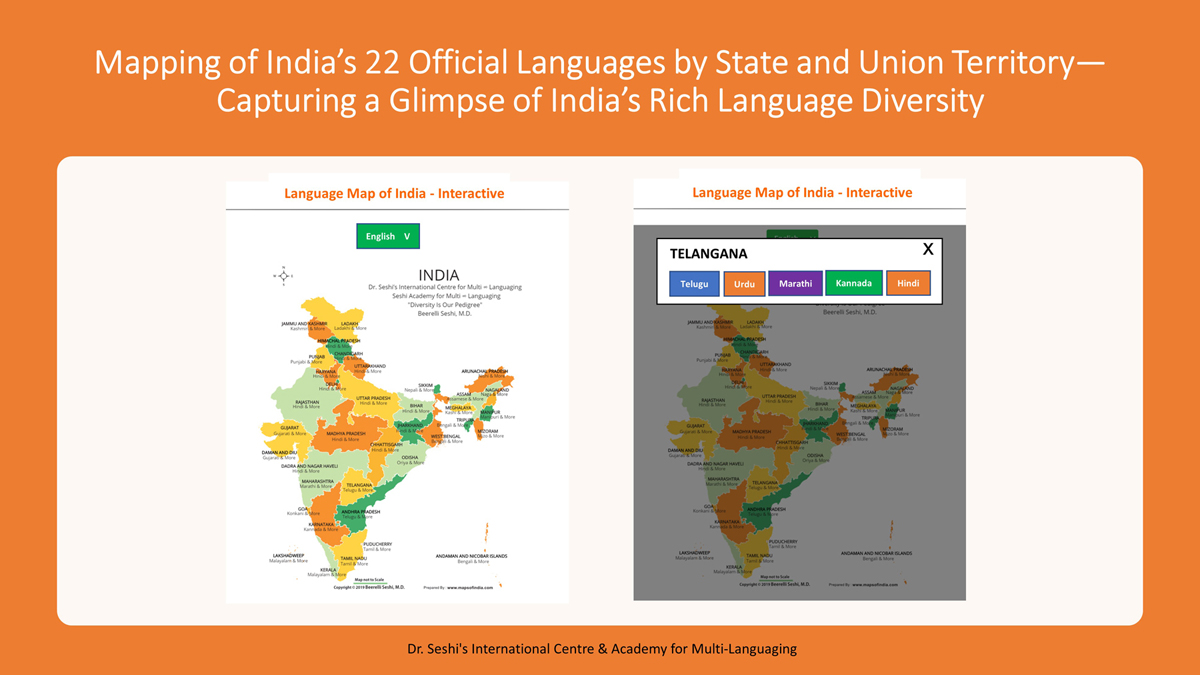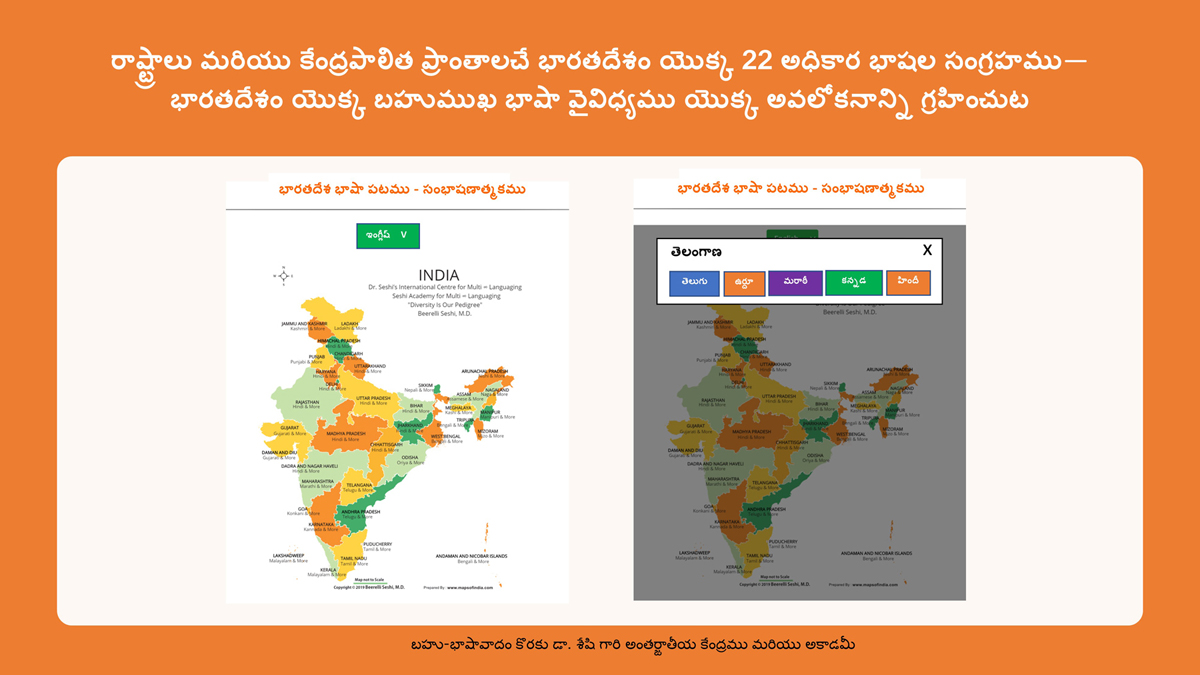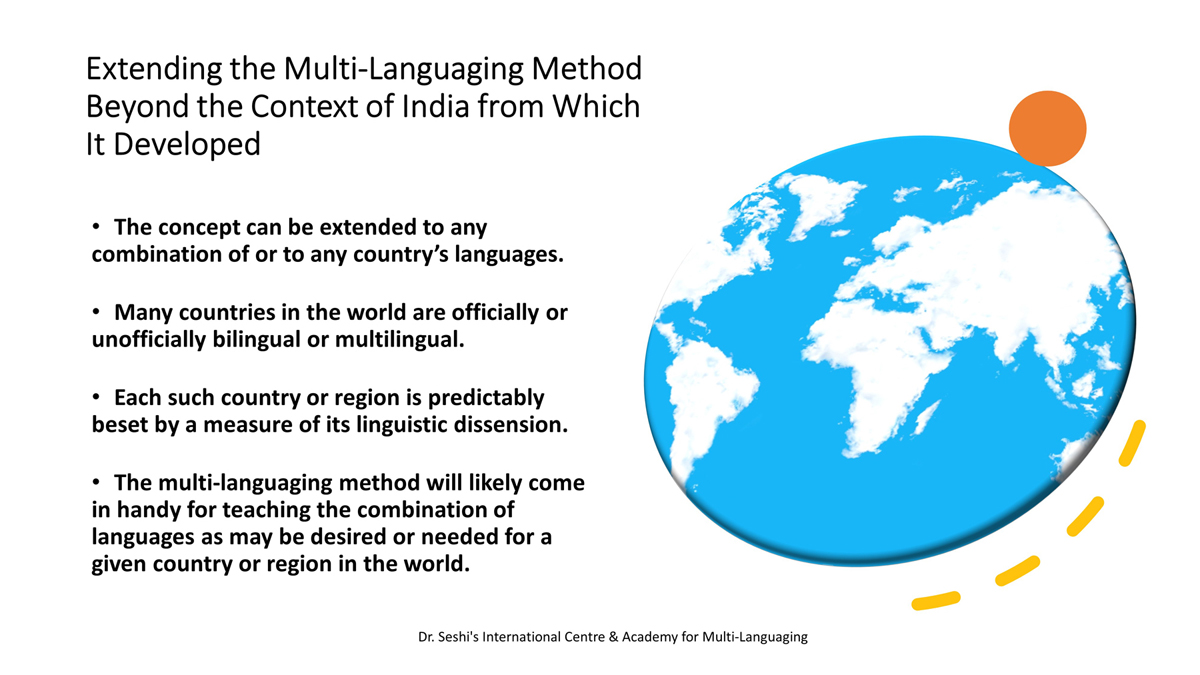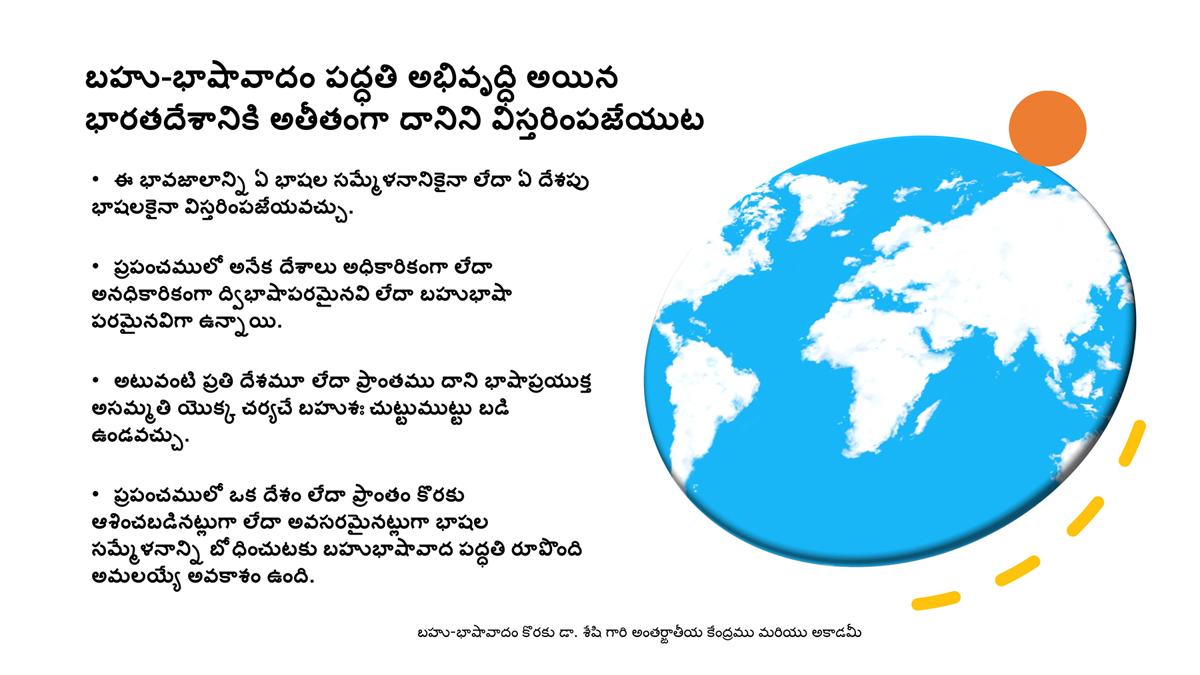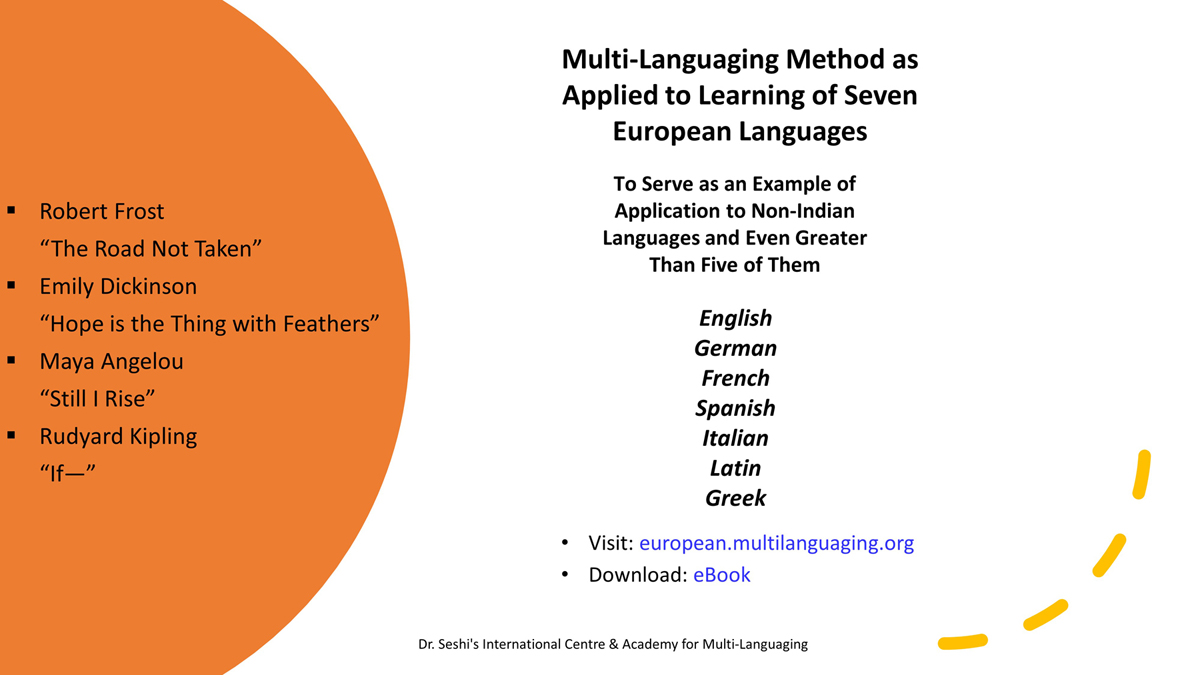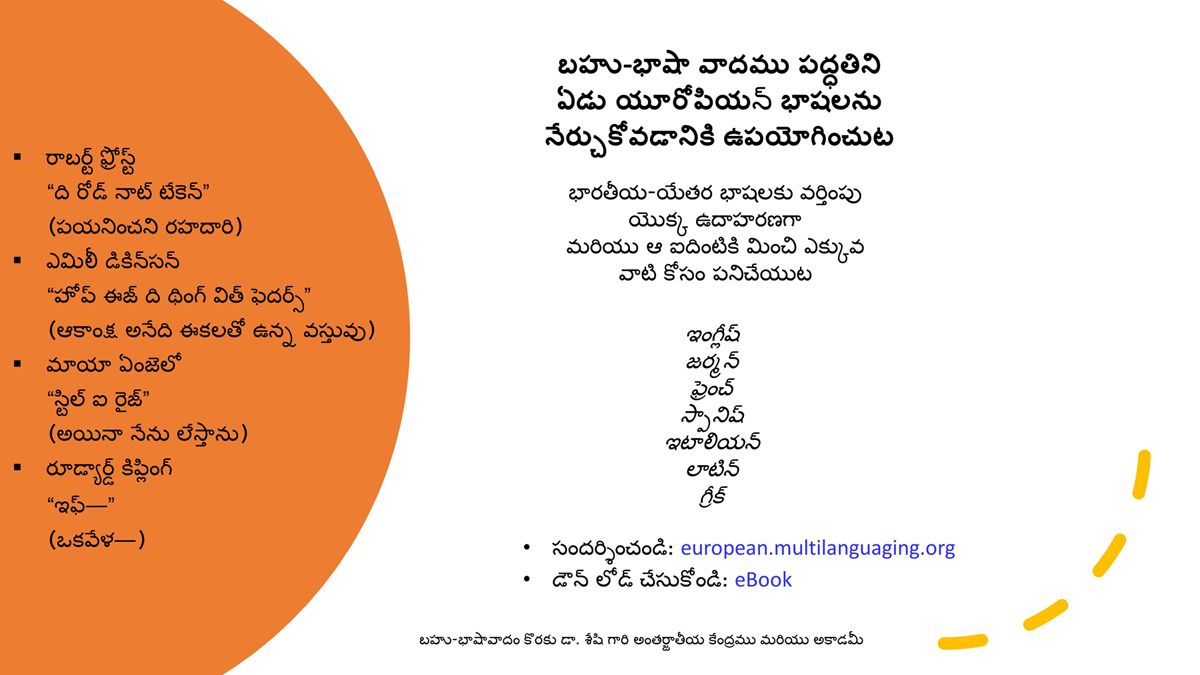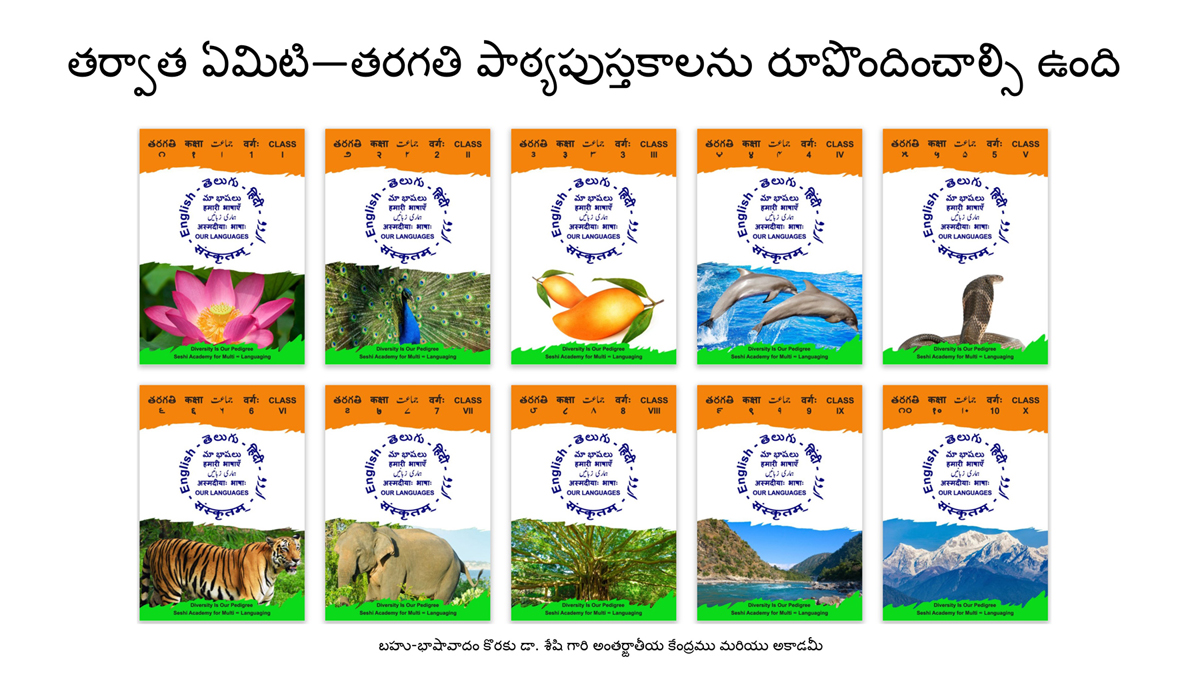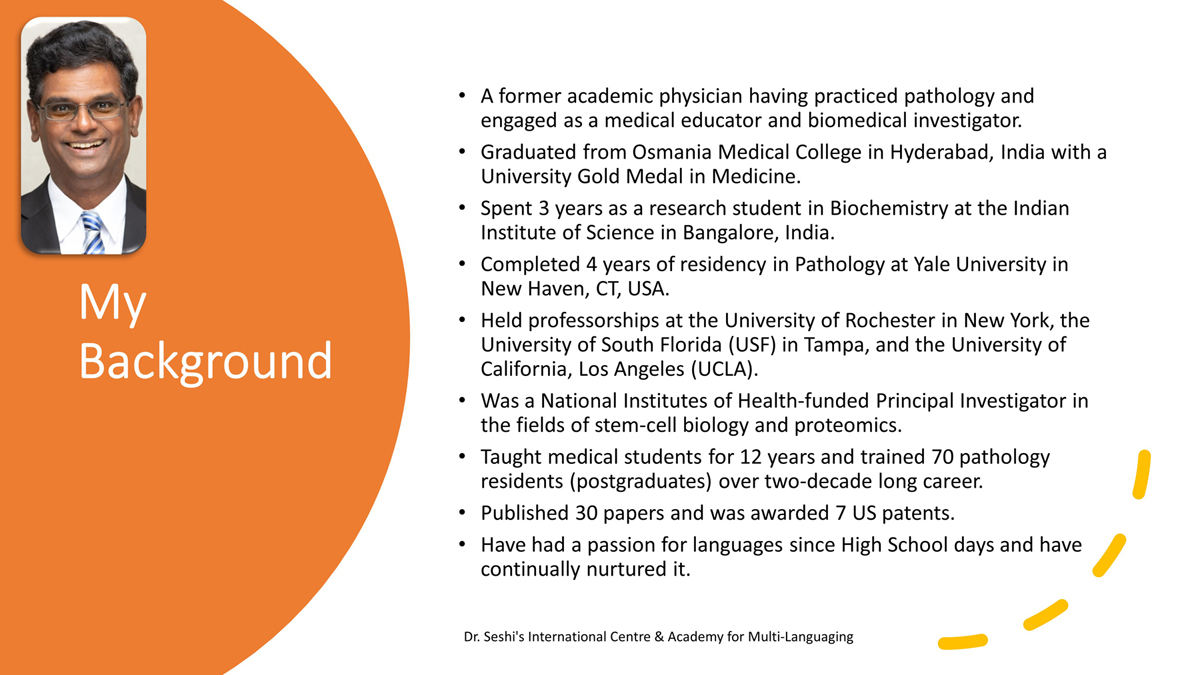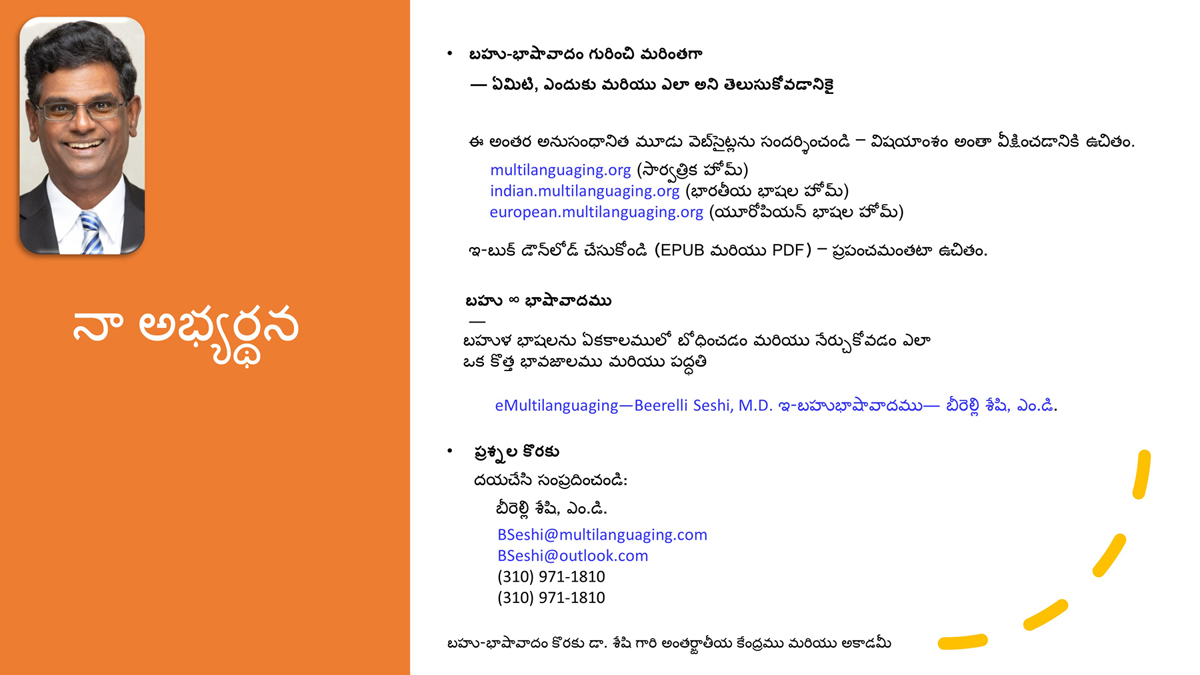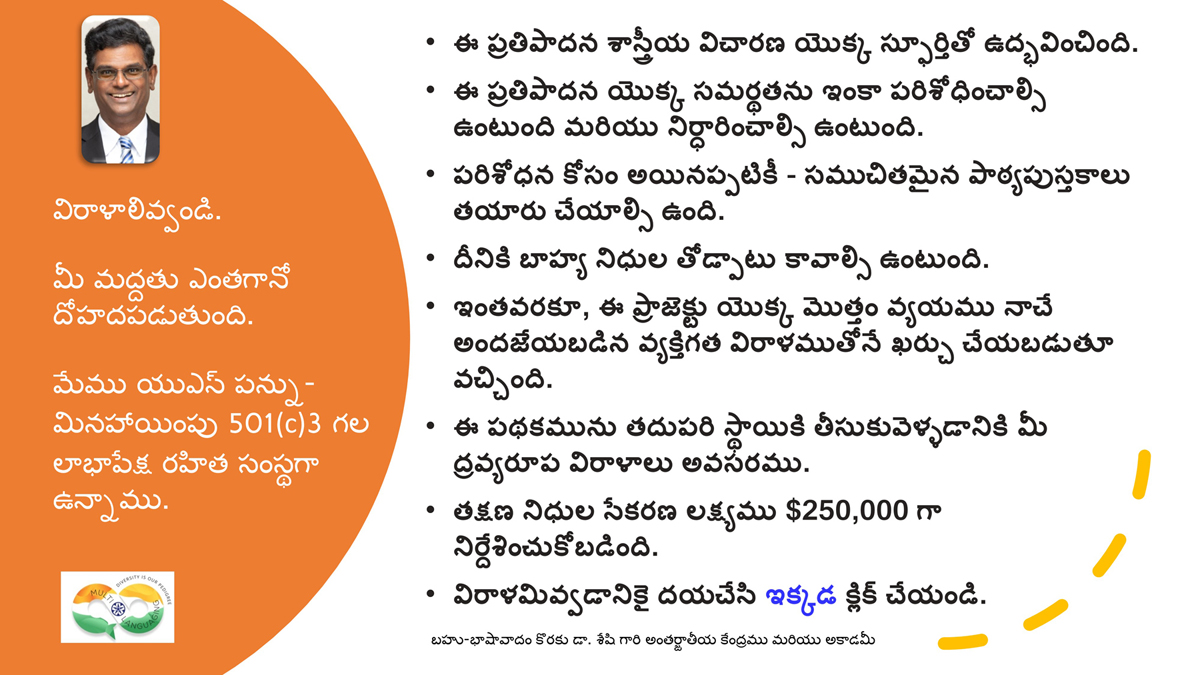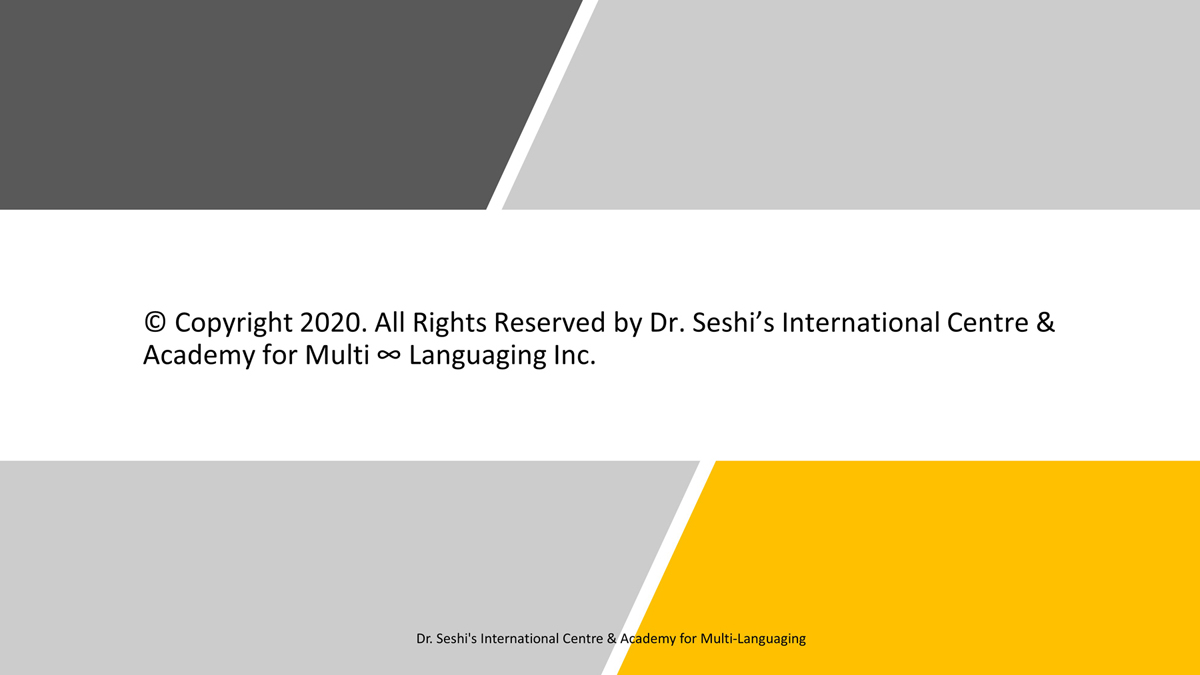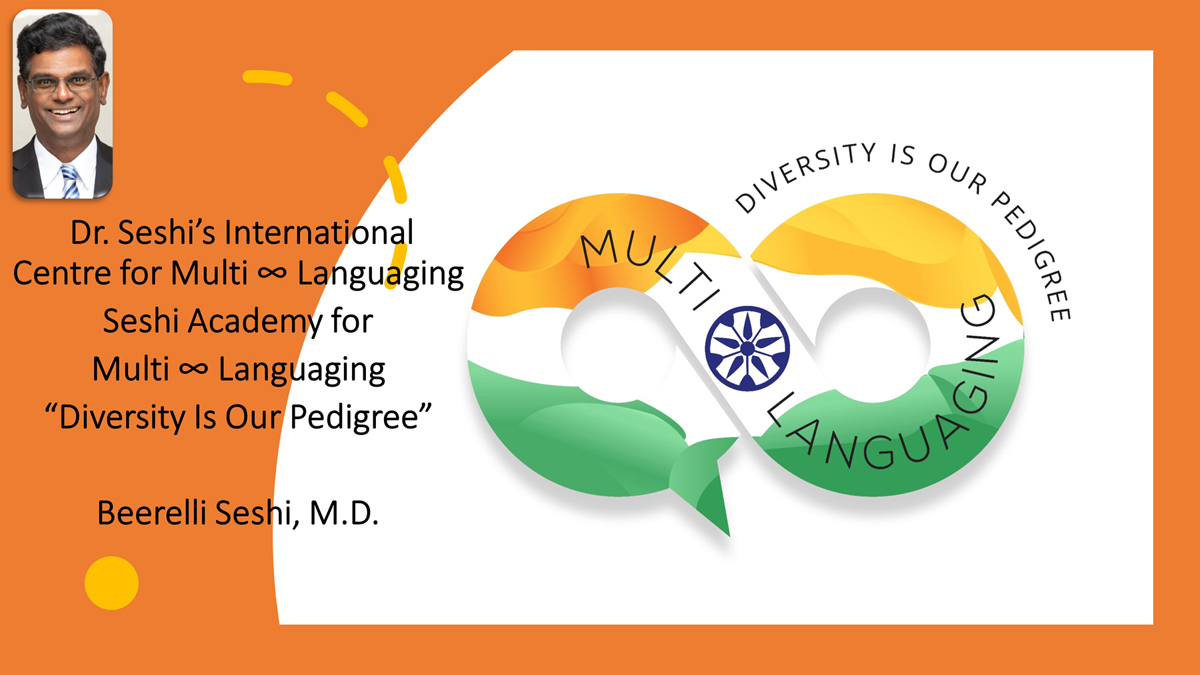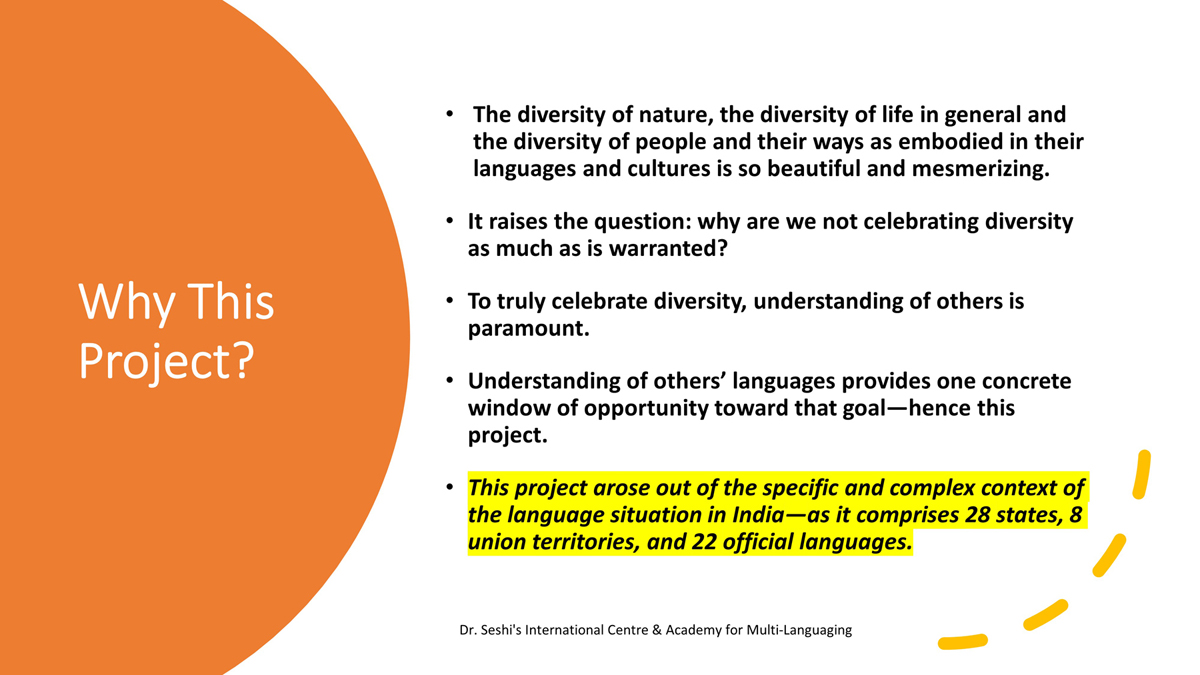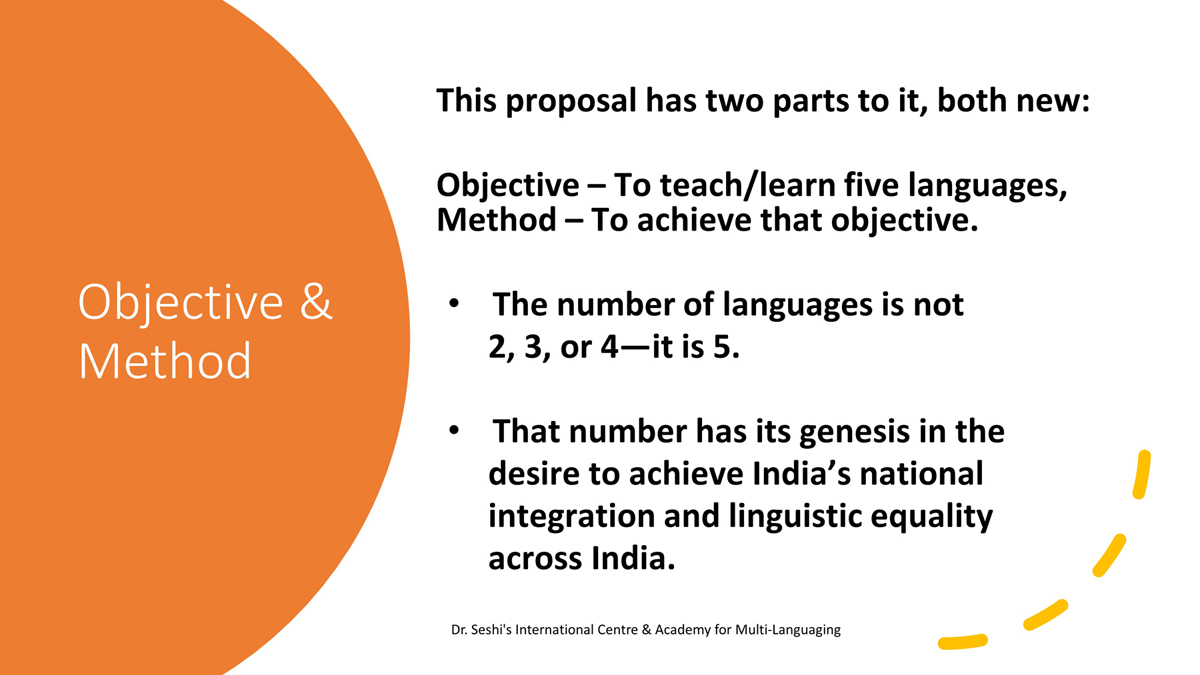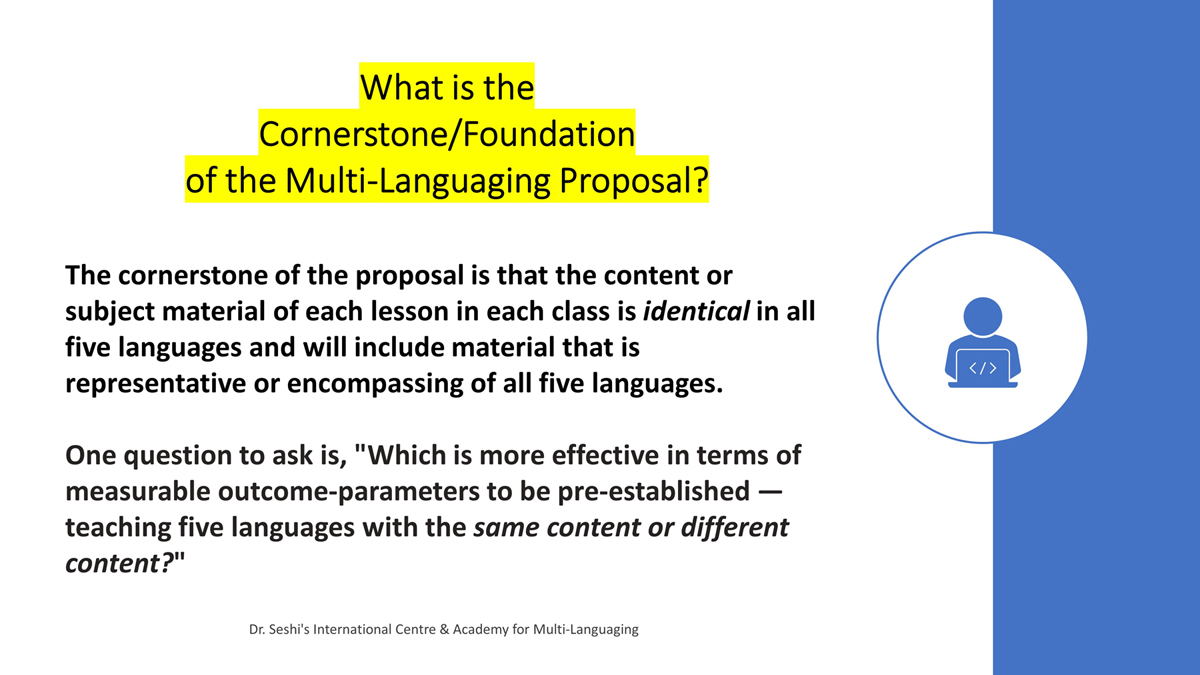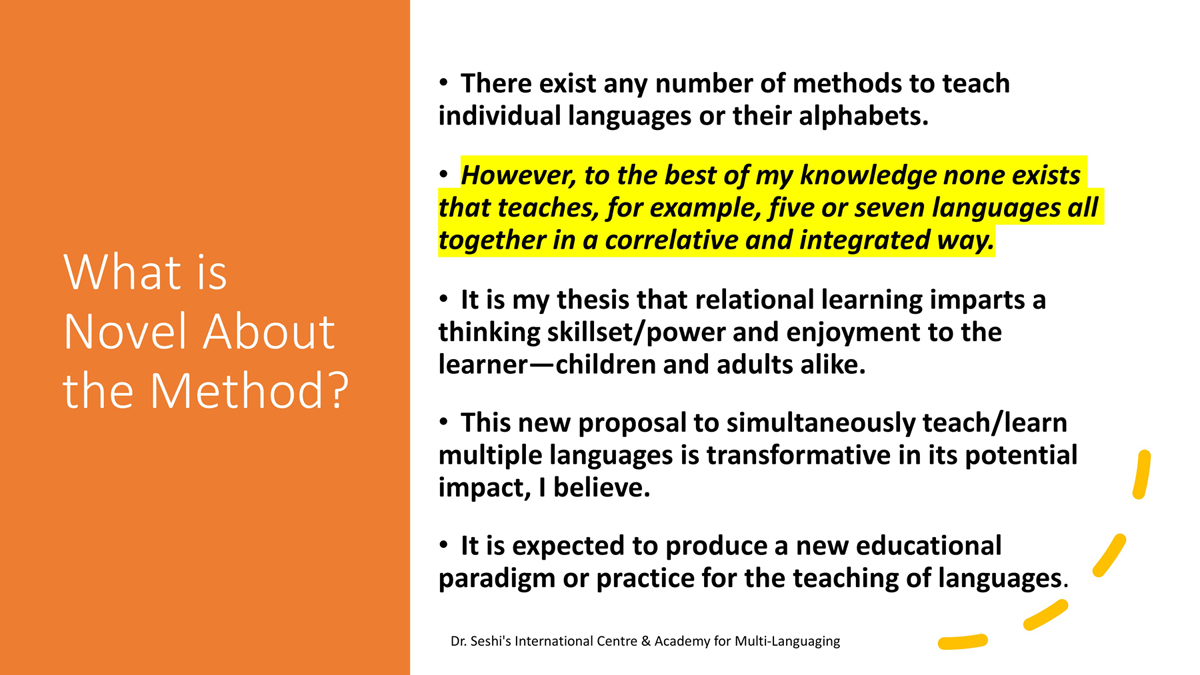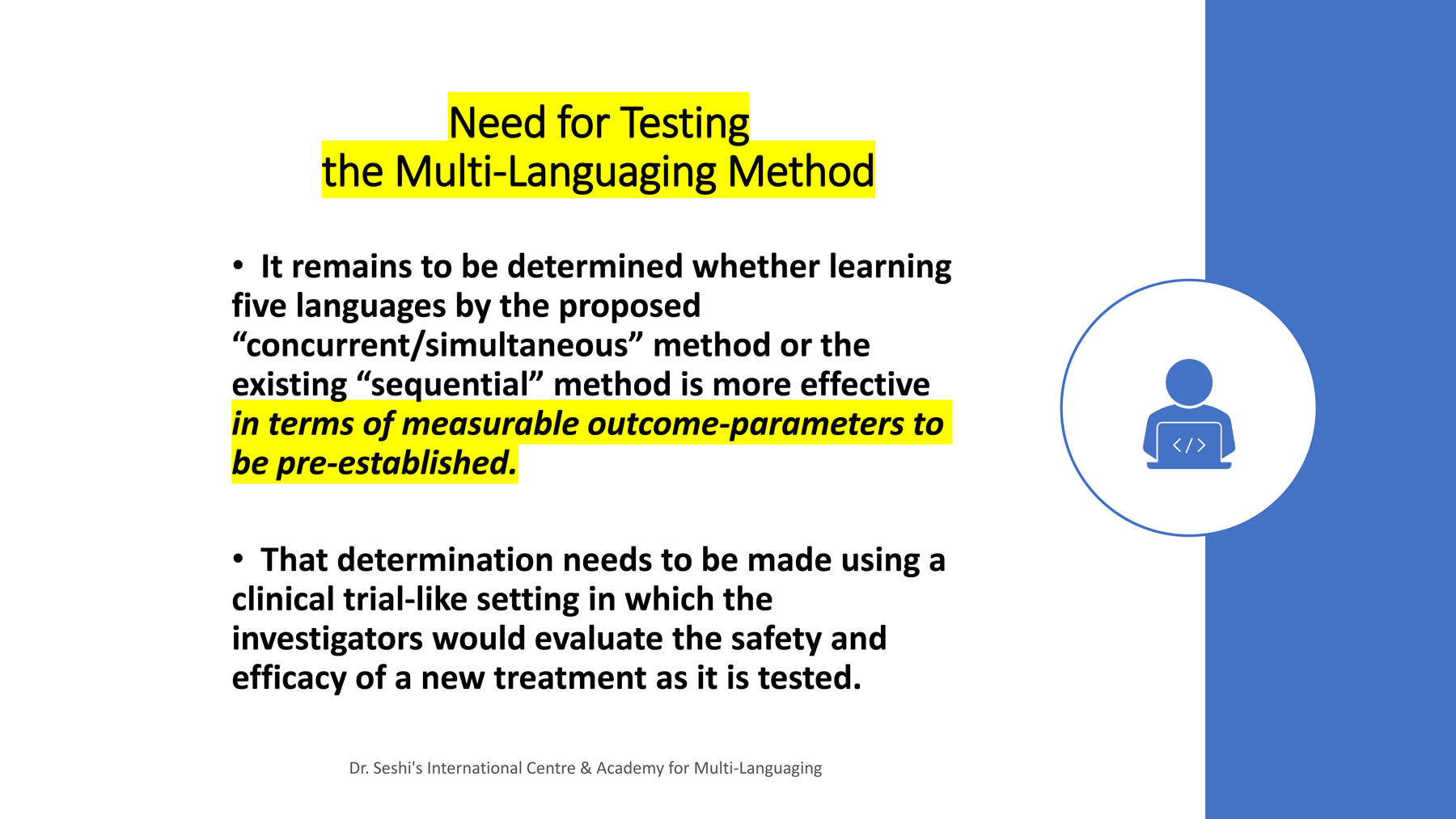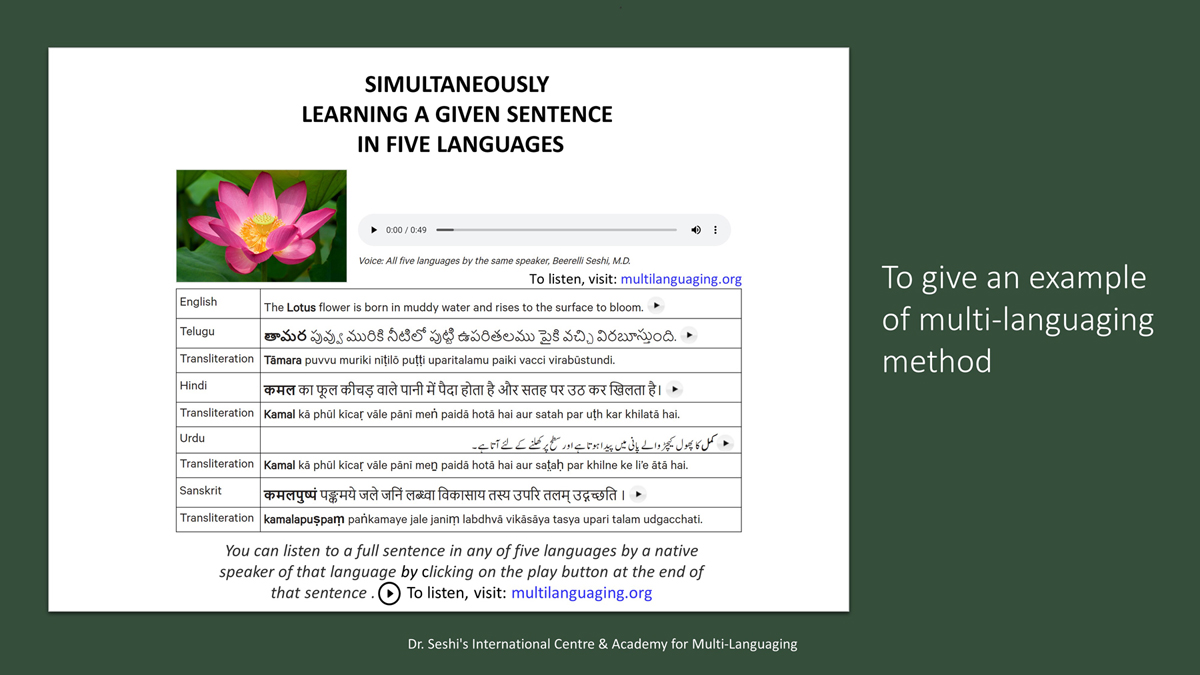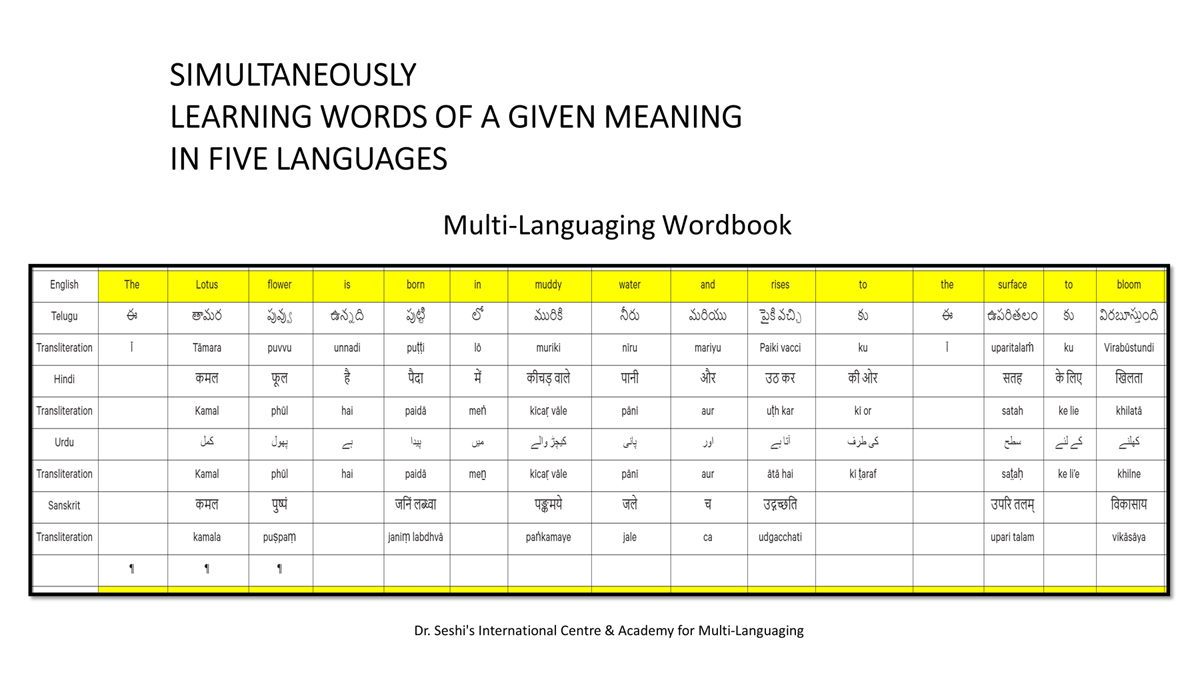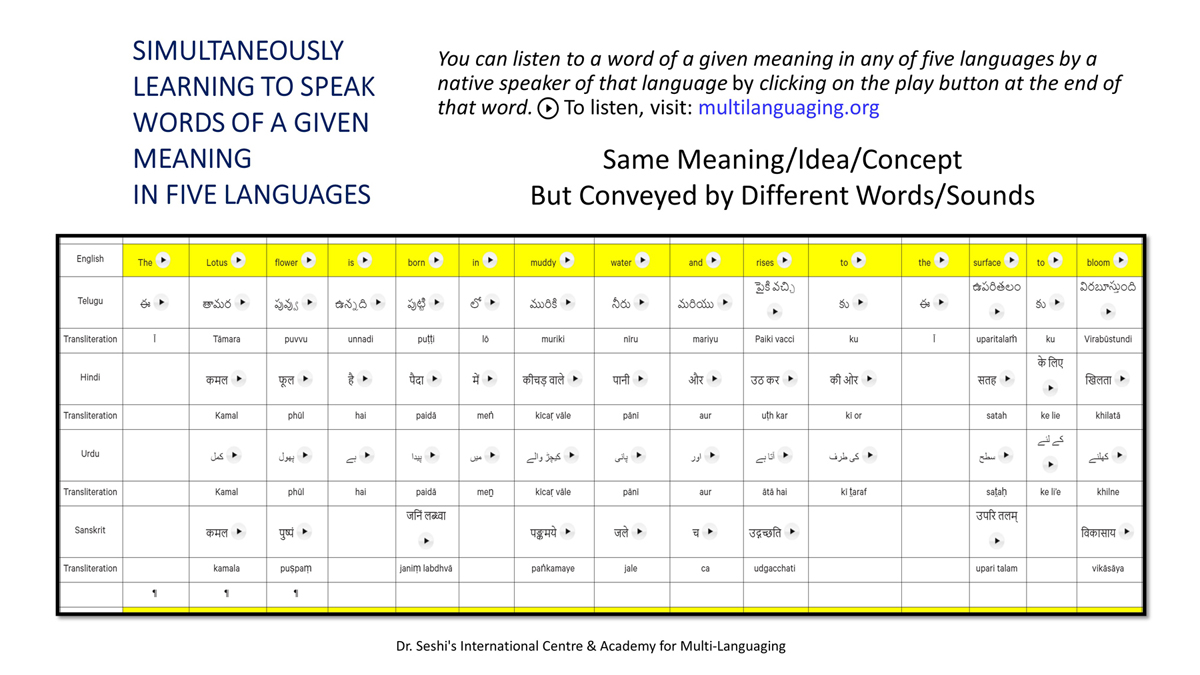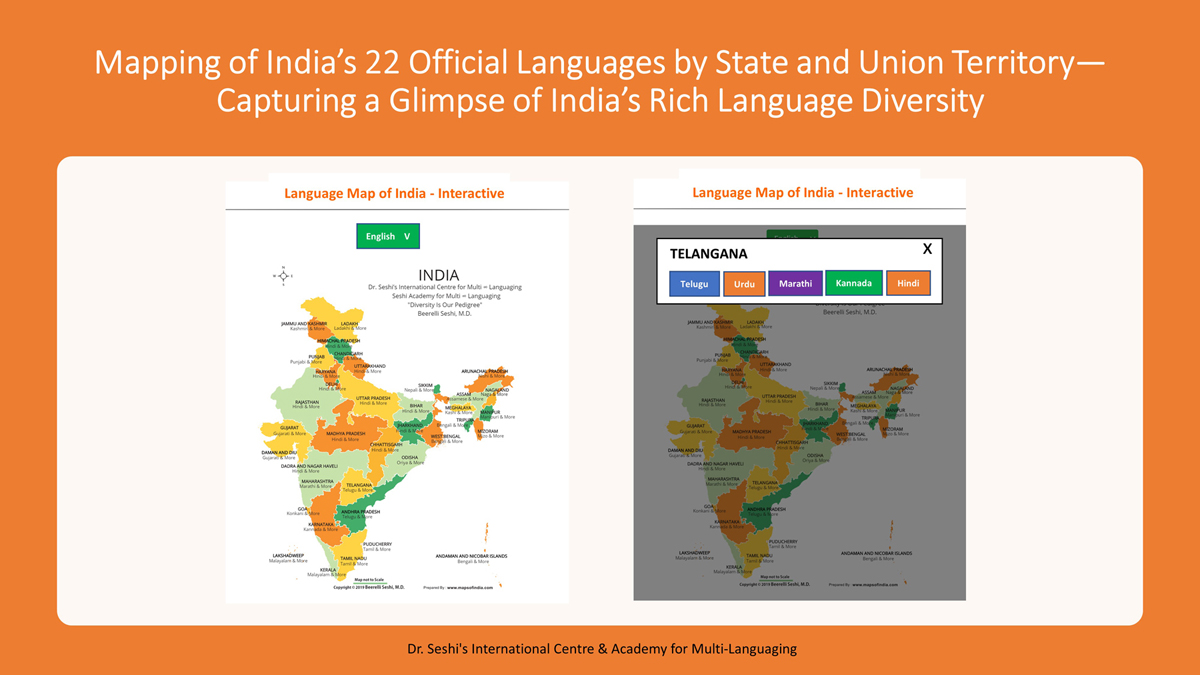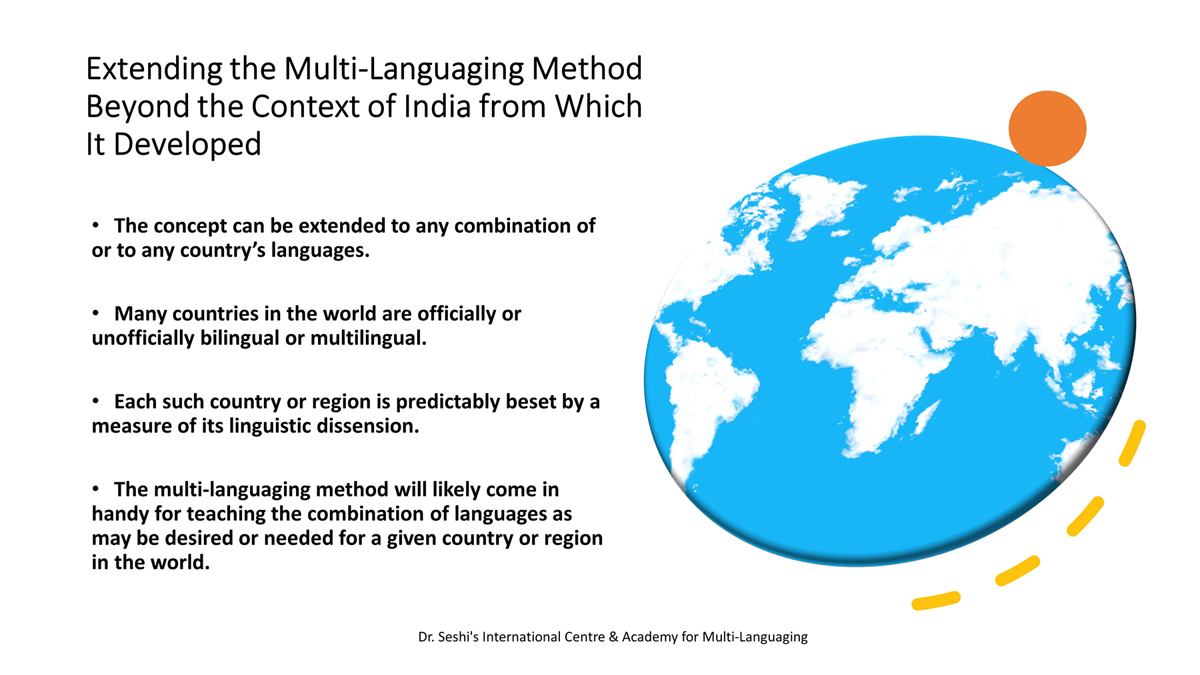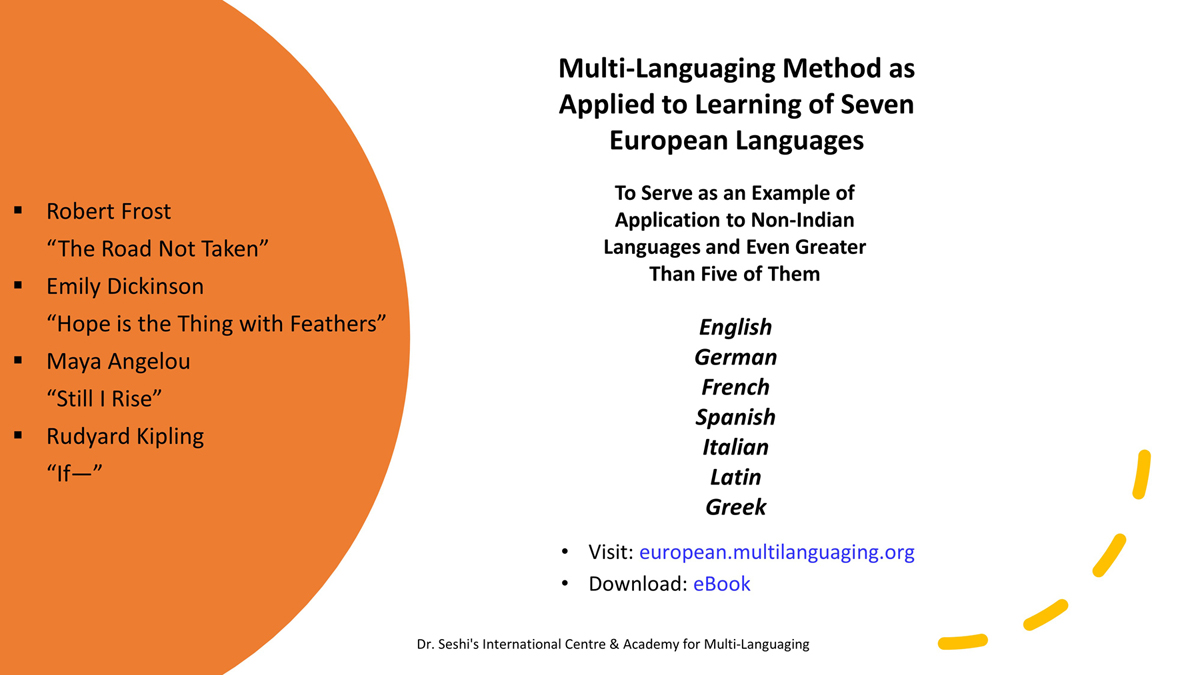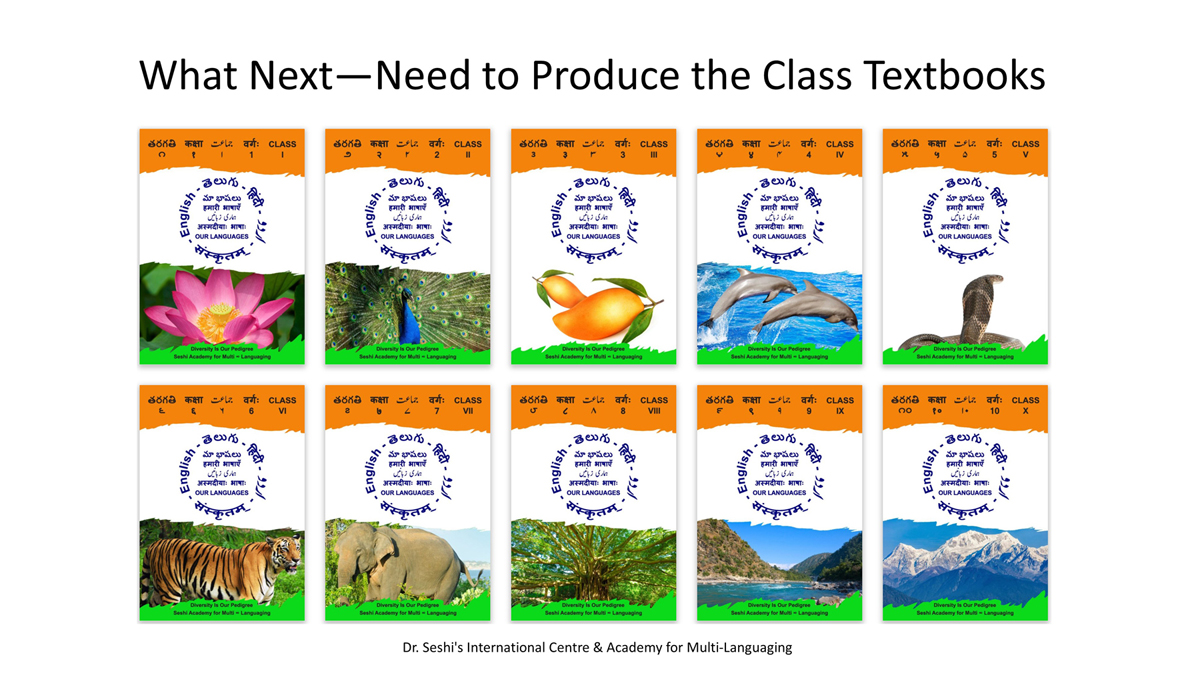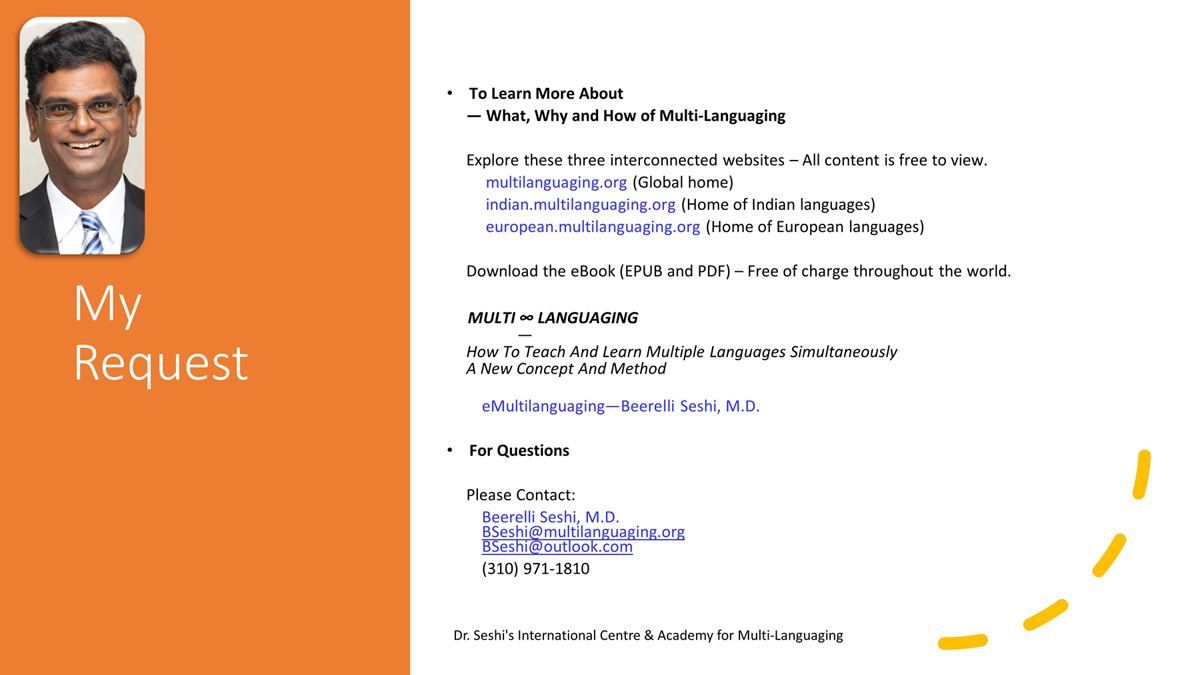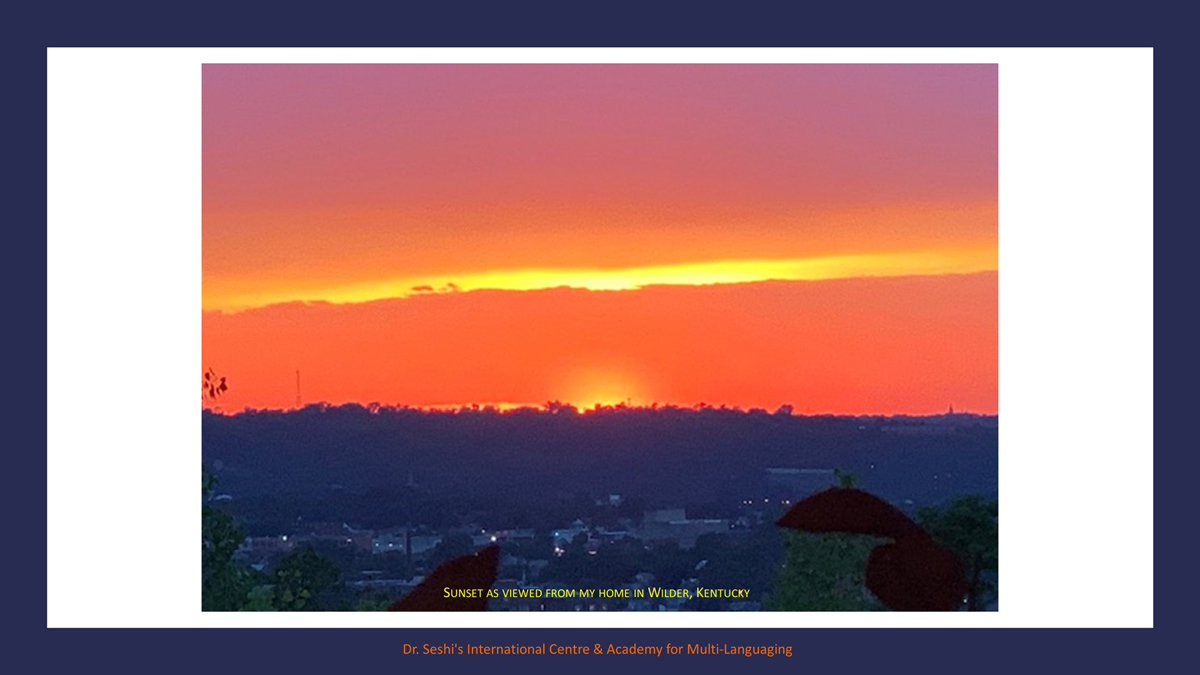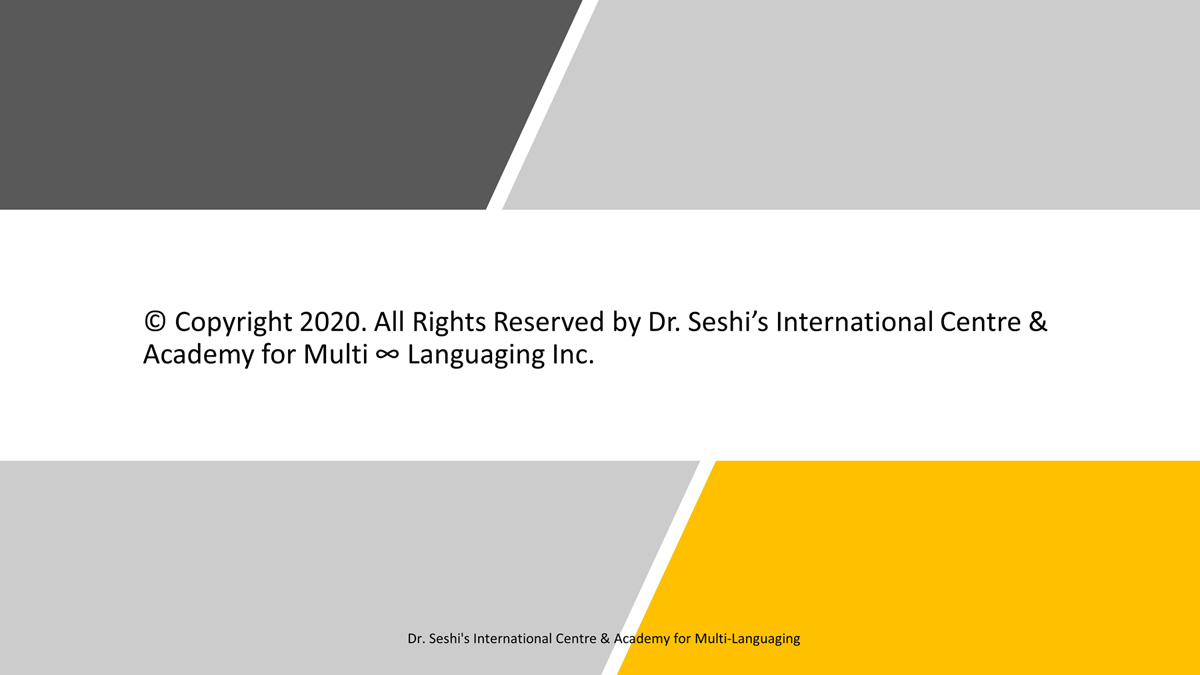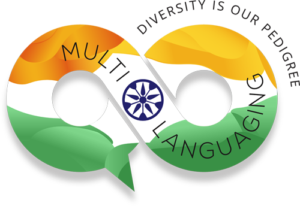
"Change your language and you change your thoughts."
Karl Albrecht

Beerelli Seshi, M.D.
Dr. Seshi’s International Centre for Multi ∞ Languaging
Concurrent Multilingual Approach to Teaching/Learning of Five Different Languages from First Class to Tenth Class: An Educational Proposal
India is a multilingual country with approximately 1,600 languages, depending on how they are defined and counted.
Twenty-two of them are recognized by its Constitution and six of them declared to be Classical.
How to achieve unity amongst diversity has been a much-touted goal of India.
Toward such goal, the practice of teaching three languages (whatever one’s mother tongue, national language, Hindi, and international language, English) has been in place since India’s Independence from Great Britain in 1947.
Although they form the cultural lifeblood of India, two other national languages, Sanskrit and Urdu, are not taught and have been neglected.
Unfortunately, Sanskrit and Urdu have been linked to Hinduism and Islam, respectively, and the teaching of them may have been disfavored by the founding fathers of modern India based on the prevailing socio-politically charged environment.
It may not have been a mistake but instead a necessity, I would surmise.
That was in the past.
Language and religion must be delinked, should we desire mutual understanding and tolerance.
The question that often occurred to me is, ‘How could we imagine simultaneously teaching/learning three national languages (Hindi, Samskrit and Urdu), one international language (English) and one local language (Telugu, which happens to be my mother tongue) all starting from First Class (Grade)?’
The cornerstone of this proposal is that the content or subject material of each lesson in each class is identical in all five languages and will include material that is representative or encompassing of all five languages.
For example, a student will learn a selected poem by each of Premchand (original in Hindi), Kalidasa (original in Samskrit), Iqbal (original in Urdu), Tennyson (original in English), and Vemana (original in Telugu), in all five languages, and sing in chorus, as if being born and brought up together in one multilingual, multicultural family.
Similarly, the student will learn the tales of Cinderella and Alibaba and Forty Thieves in five languages.
To provide concrete scenarios and social context of this teaching concept, picture a scene in which students in daily school life are chatting in five different languages, each student switching from one language to the other, minute by minute, during a conversation.
Similarly, picture a school play, in which different characters are speaking five different languages, each character switching language from one dialog to another.
To envision the end-result, picture a new generation of citizens at once arising on the horizon and communicating in five different languages with comfort and confidence and with clarity and grace.
Each lesson will have a Keyword or Vocabulary Digest identified from that lesson across the five languages, as provided for this Message, as an example.
It is additionally achievable to prepare a composite non-redundant vocabulary list drawn from all lessons for each class, from I to X separately, across five languages.
The list can be included as an appendix to each year’s class textbook.
Words from all previous classes/years are excluded from the year’s listing.
It will make each listing unique to the class/year and easily manageable.
It will also help plan/create and assess syllabi as to the new vocabulary being introduced for each class/year.
Students will thus have a complete handle and careful accounting of all the words learned or befriended each year as they advance toward eventual graduation.
I am unfamiliar with such a comprehensive pedagogical approach to words being undertaken by other educators before.
It likely signifies another important feature of the current proposal, because on this model, words are your friends, and each word metaphorically is an ‘avatar’ and possesses an organismic life of its own.
Students will learn them, use them, and treat them properly.
Protective and concerned parents may take comfort in learning about children’s vast learning capacity.
It was best described by Dr. Maria Montessori, the founder of the Montessori Method, as "the absorbent mind, that children from birth to age six possess limitless motivation to achieve competence within their environment and to perfect skills and understandings."
It has also been recognized that children below the age of six absorb more than one language effortlessly and joyfully.
Recent studies further reveal that new language learning ability is highest until the age of 18, after which it declines, and to achieve fluency learning must begin before 10 years of age.
This proposal is a new model.
The new class subject may be referred to as ‘Our Languages.’
It is envisioned as being taught/learned as one integrated unit.
It will replace the existing separate class subjects like ‘My English World, or Our World Through English,’ ‘Jaabili, or Telugu Vaachakam’ and ‘Baal-Bageecha.’
It will eliminate the need for labeling of any language as first language or second language.
The new textbook would necessarily be big in size but does not have to be any bigger than the current three books combined, even though it entails teaching of five languages.
For convenience, it may be divided into three volumes, labeled by quarters, Q1-Q3.
The student will be simultaneously exposed to and learning the same subject/lesson in five different languages in every class.
Because the subject matter is identical, even if in five languages, the dimensionality of the information is greatly reduced and it would not be overburdening for the students.
My prediction is that such comparative/correlative learning of languages may make it relatively easier, more interesting and more powerful than learning three languages of unrelated subject matter, as in the current system that has existed for over 60 years.
Furthermore, it is not like learning five totally unrelated languages; all five derive from the Indo-European family of languages.
Hindi and Telugu contain extensive Sanskrit lexicon.
Hindi and Urdu have common grammar and day-to-day vocabulary, and may differ in only higher order lexicon, Hindi heavily drawing from Sanskrit, whereas Urdu from Persian and Arabic.
It is well known that English (through Latin and Greek) shares many roots with Sanskrit.
It is not well known, but as I observed, Sanskrit Sandhi rules, explicitly taught as part of Telugu grammar, may apply to English pronunciation equally well, because the sounds of all languages are produced by the same anatomical apparatus.
Thus, there is a perceptible sharing of common roots or vocabularies, grammar and phonetics to varying degree.
It is important that we learn of the connectedness of our languages.
It would be fascinating, I believe, for young and formative minds to see these connections and inculcate a correlative thinking early on.
My motto is, if you are connected linguistically, you are connected culturally.
The proposed teaching model is expected to enhance critical thinking, promote not merely tolerance but even admiration for each other, and eventually put all students on the same level playing field.
Learning of languages is empowerment, socially, spiritually, culturally, intellectually and ultimately professionally.
May it be an equal opportunity for all.
This proposal does not affect the teaching of Science, Math, and Social Science subjects; they will continue to be taught in whatever the medium of instruction of a school.
I may want to stress that this proposal is conceived in the spirit of a scientific inquiry.
The topic needs to be investigated, thought through, and its full potential systematically studied on an experimental scale before wholesale implementation.
The proposed method, vis-à-vis the currently existing method, may be comprehensively and prospectively experimented by interested schools and/or groups.
Federal and state governments should encourage such studies by providing funding to the schools that will come forward.
Unless the governmental bodies can see the merit of the proposal and incentivize learning of the five languages, no real progress will occur.
The results of such studies, with respect to various parameters of the proposal’s effectiveness and usefulness, may be published in professional educational journals.
Depending on the results of the independent studies, the proposed teaching model will then have a life and impact of its own.
It is beyond the scope of this message; but suffice it to say that neurobiological research studies show that to practice juggling multiple languages causes extensive functional and structural changes to the brain, including increase in gray matter density.
Multilingualism leads to greater functional connectivity within and between neural networks in the brain as related to executive function and cognitive control.
It also produces greater ability in managing language interference and conflict resolution, highlighting the advantages of parallel or simultaneous learning of multiple languages.
Finally, multilingualism is known to delay the onset of Alzheimer’s disease.
The more languages the individual knows the later the onset, which effectively serves as a form of insurance against the inevitability of Alzheimer's for future senior citizens.
Learning multiple languages is thus to an individual’s own benefit―and naturally to the Nation’s benefit.
The student and/or the parents must first recognize the inbuilt benefit for themselves for it to be welcomed.
The current proposal may serve as a fertile ground for research for investigating the potential effects and benefits of multi-languaging.
It is hoped that this proposal will generate useful discussion and debate.
To begin with, it may be offered in select schools or alternatively offered as an optional path to bright students, with a sizable financial scholarship attached based on the student’s successful performance.
It is hoped that linguists and language scholars will come forward and prepare the required syllabi and curricula prior to moving forward.
Doubtless, it is a major undertaking and requires coordinated effort by language experts with governmental backing and support.
The objective of this website is to introduce the idea to the public and to promote its study and eventual acceptance.
Additional information will be posted as it is forthcoming.
In sum, learning of multiple languages undoubtedly promotes tolerance, civility and respect for others.
Learning them simultaneously likely adds to one’s breadth and depth of thinking power.
This is not to be dismissed as an elitist academic proposal, but instead to be considered as an experiment envisioned as yielding results of tremendous potential practical benefit to a hugely diverse country like India.
The proposal may equally benefit other multilingual nations of the world.
Ishwar, Allah Your Naam (Pseudonym)
Bless Everyone With Equanimity, Bhagwan (Providence)
Hindi Urdu Sanskrit Is Our Zabaan (Tongue)
Diversity Is Our Khandaan (Pedigree)
United We Are Balwaan (Strong)
Ishwar, Allah Your Naam (Pseudonym)
Bless Everyone With Equanimity, Bhagwan (Providence)
Jai Hind, Jai World
May 15, 2019
A native speaker of Telugu (Hindi, Urdu, Sanskrit) translated it from the original in English by Dr. Seshi.
